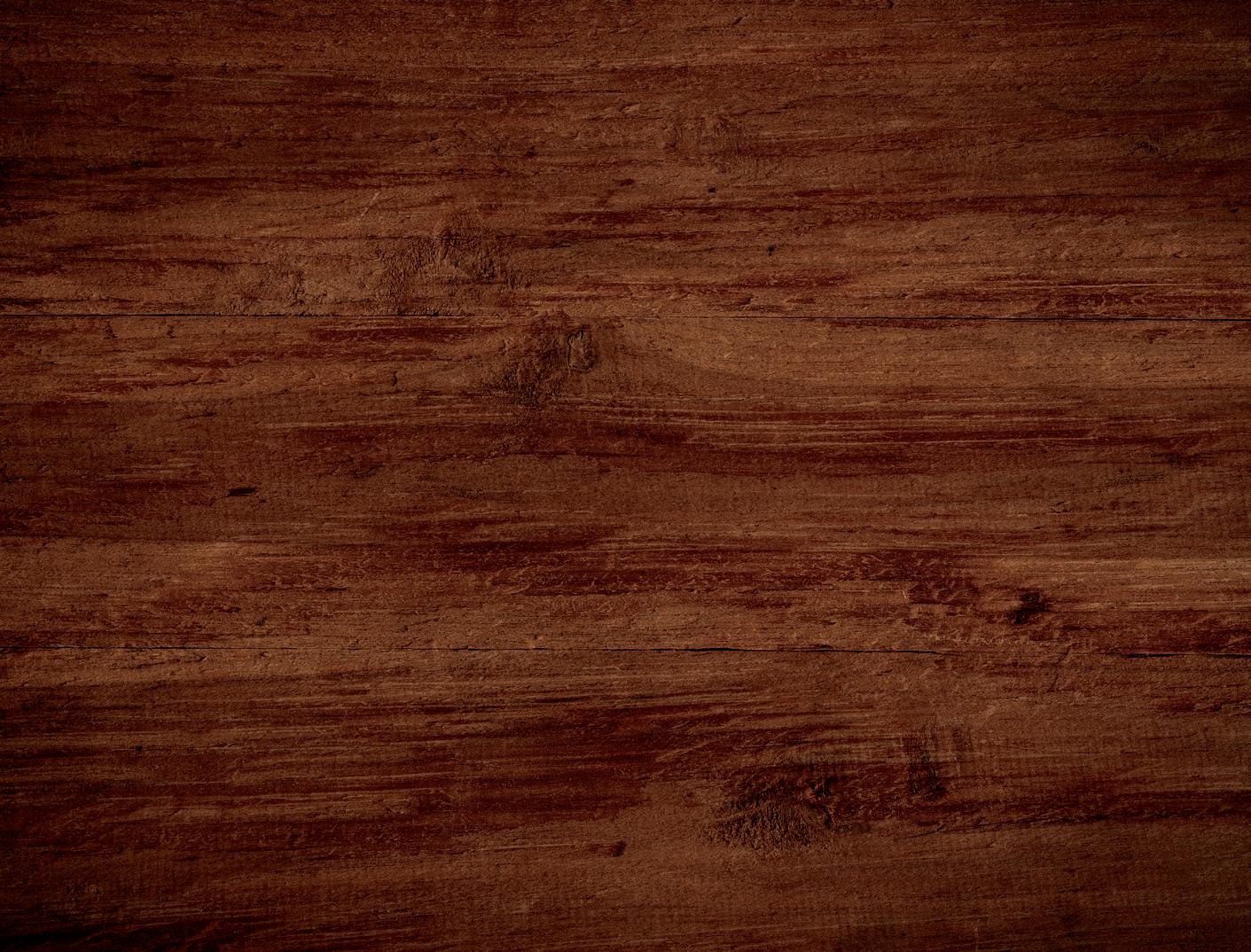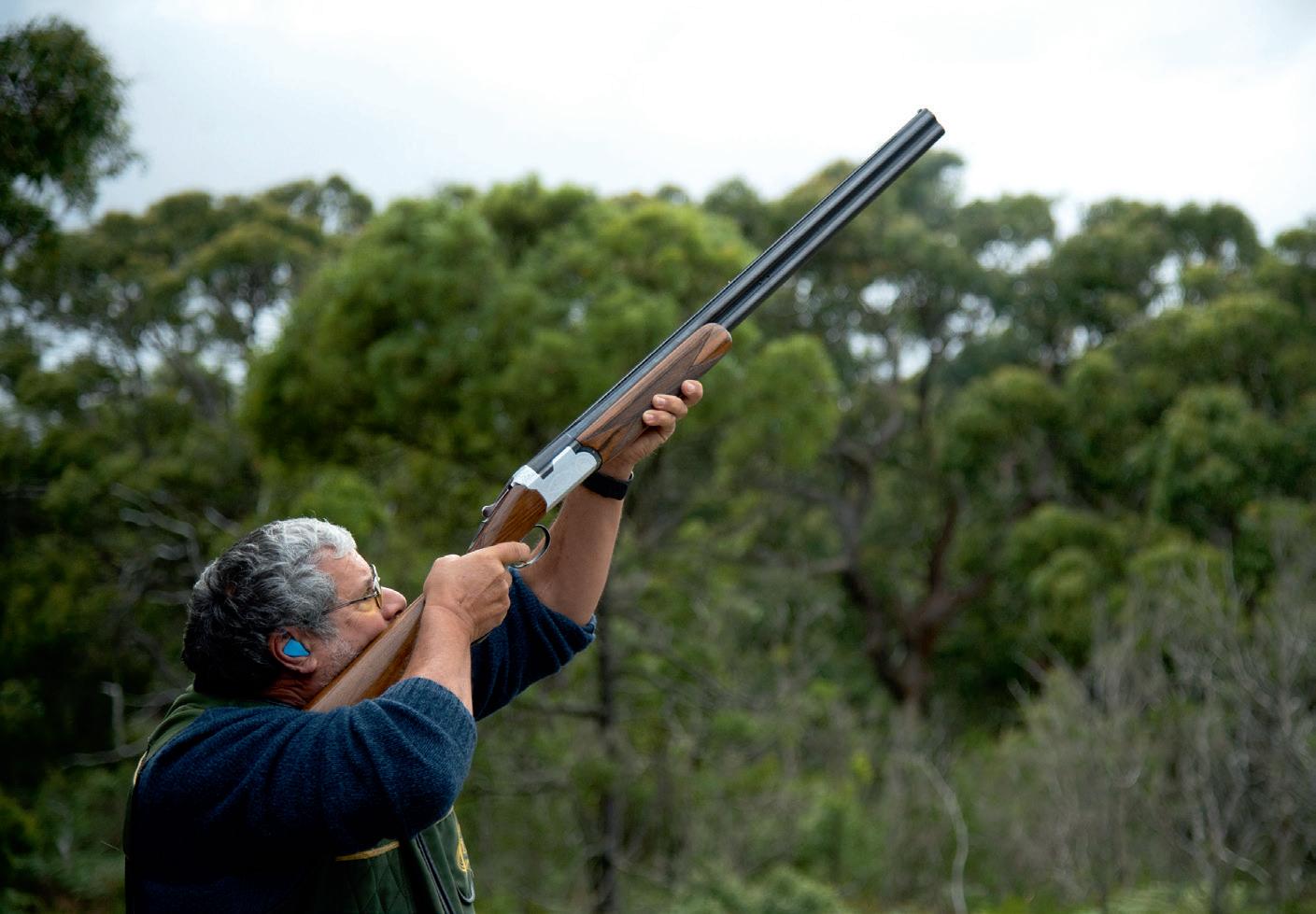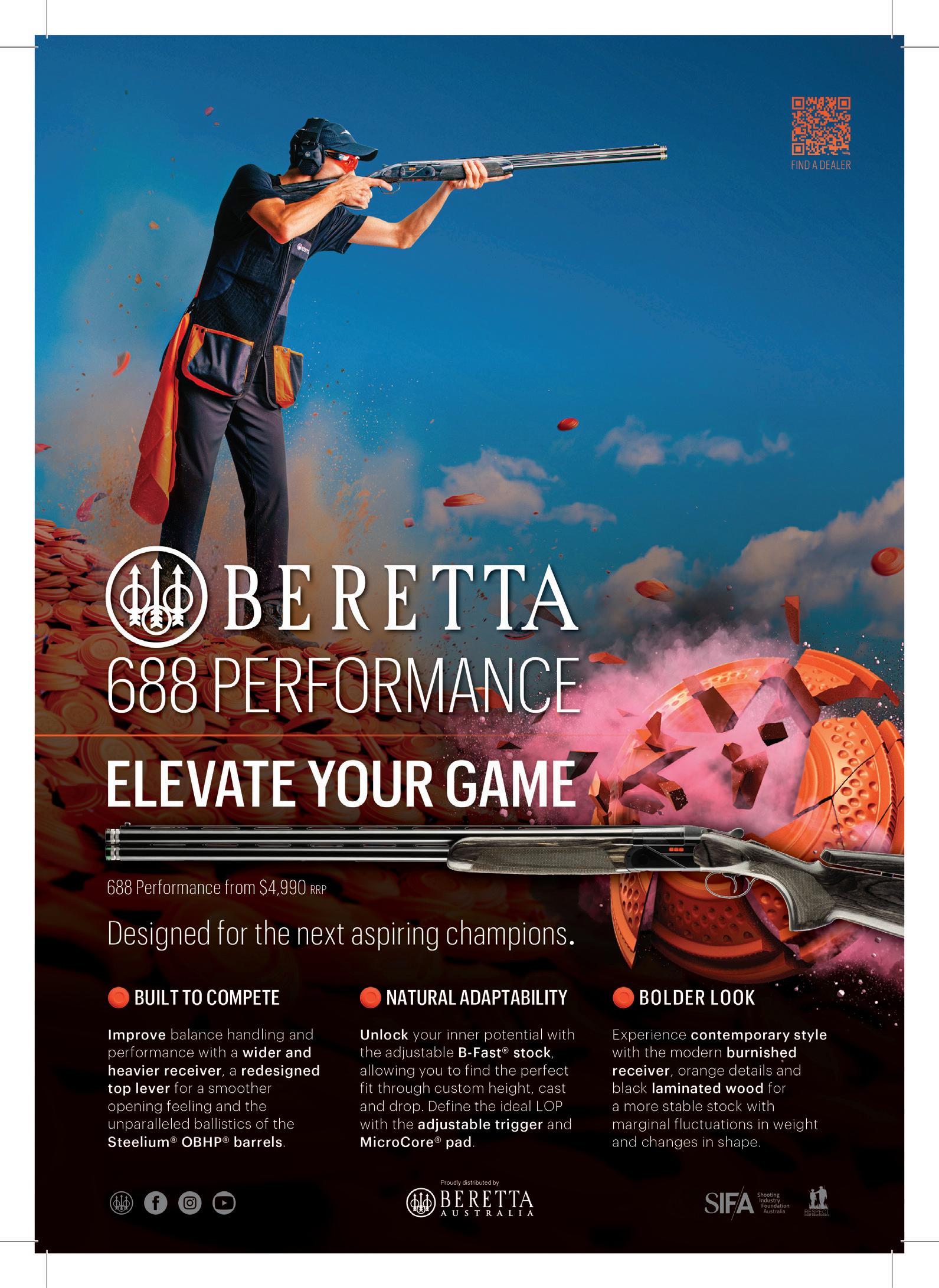
Experience two days of thrilling sporting competition, exclusive Blaser shotgun showcases, on-site servicing and more.




Experience two days of thrilling sporting competition, exclusive Blaser shotgun showcases, on-site servicing and more.


AIt’s membership renewal time! Scan this QR code to join or renew now.

s you flip through the pages of this edition, you’ll see just how important this magazine is as one key way we communicate with our members. Bringing it to life is always a team effort, and this issue has come together thanks to the hard work of our operations lead, AnneMarie Blewett. Thank you and well done, AM. Of course, it wouldn’t be what it is without the invaluable contributions of our members and supporters. FGA remains committed to delivering a high-quality publication that informs, engages, and reflects the passion of our community.
What makes this magazine truly special isn’t just the work that goes into it—it’s the people behind it. Every story, article, and photograph reflects the passion, knowledge, and experience of our community. And in many ways, the way this issue has come together reflects FGA itself. Across our branches, committees, and events, we are a diverse group with different perspectives and ideas. But when it matters, we pull together, always working toward the greater good. That spirit of collaboration—whether it’s in the field, on the range, or in conservation efforts—is what makes this organization strong.
That said, we all know an organization is only as strong as the people who are willing to step up. FGA has thrived because of the dedication of those who get involved, roll up their sleeves, and work for something bigger than themselves. But we’d be kidding ourselves if we didn’t acknowledge that not everyone does their part. It’s easy to sit back, take advantage of what others build, or criticize from the sidelines—but that’s not how a community succeeds. Just look at organizations that are struggling or have faltered because people pursued their own agendas instead of working for the collective good. We refuse to let that be the fate of FGA. Here, we stand for something greater than personal interests, and that’s why we keep moving forward.
As we move into 2025, there’s so much to look forward to: a positive outlook for duck seasons, an exciting calendar packed with target events, and conservation projects that continue to make a real difference. These are the things that bind us together—not just as members of FGA, but as a community that values tradition, sustainability, and the joy of the great outdoors. Of course, there is always more to be done, but with the support of our community behind us, we are forging on and getting stronger!
I want to take this opportunity to celebrate that unity and to thank each and every one of you for being part of it. Whether you’re a long-time member or new to the fold, your contributions and passion are what drive FGA forward.
It’s that time again—FGA renewals are due by 31 March. I encourage you all (if you haven’t already) to renew your membership, get involved, and continue celebrating the things we love. Be proud of what we achieve together. I know I am. Here’s to another year of hunting, conservation, clay targets, and the camaraderie that makes FGA so special.
Proud to belong!
Lucas Cooke
CEO, Field & Game Australia
If you have feedback of any sort or would like to contribute to Field & Game magazine in any way, drop us a line at Editor@Fieldandgame.com.au or, you can give us a call on (03) 5799 0960.
Field & Game (ISSN: 2206-0707) is published and printed by McPhersons Printing (76 Nelson St, Maryborough VIC 3465) under licence from Field & Game Australia Inc www.fieldandgame.com.au
Copyright 2024 Field & Game Australia Inc.
Lucas Cooke – Chief Executive Officer
Glenn Falla – Conservation & Hunting Manager
Clara Hatch – Administration and Membership Officer
Anne-Marie Blewett – Operations Lead
Chelsea Skinner – Business Accounts Clerk
Kane Atkins – Branch Liaison Officer
David Anderson – Chairman
david.anderson@fieldandgame.com.au
Trent Leen – Vice-Chairman
trent.leen@fieldandgame.com.au
Glenda Anderson
glenda.anderson@fieldandgame.com.au
Adam Carson
adam.carson@fieldandgame.com.au
Vicki Norris
vicki.norris@fieldandgame.com.au
Paul Sharp paul.sharp@fieldandgame.com.au
Michaela Shirley michaela.shirley@fieldandgame.com.au
Jacqui Maskell – Graphic Designer
Anne-Marie Blewett – Operations Lead
Rod Berger
Ivan Howes
Karen Davies
Michael Kruger-Davis
Michaela Shirley Kevin Walshaw
Nadia Angelakos
Robert Sturzaker
Wendy Russell
Deb Shields – General Manager
Deanne Martin – Account Manager
Tammie Jones/Deepika Khadgi – Customer Co-ordinator
Trent Small – Prepress Manager
Andy Shayler - Production Manager
Gary Chaplin – Warehouse/Mailing Supervisor
Peter Fletcher – Despatch Supervisor
Alex D’Ambrosio – Warehouse/Dispatch Manager
- May 2025 Issue 37

Page 6
FGA Chairman: David Anderson
Page 8
FGA Chief Executive Officer: Lucas Cooke
Page 10
Hunting: Get Fired Up for the 2025 Duck & Quail Season!
Page 14
Hunting: 2025 Summary of upcoming Regulated Seasons around Australia
Page 16
Conservation: The 2025 Duck Stamp
Page 18
Conservation: What the goose
Page 20
Conservation: Hunting the Heart Morass 2025
Page 22
Hunting: Why Ducks Die
Page 24
Hunting: Trip of a Lifetime
Page 28
Board profile: Adam Carson
Page 30
Conservation: Australia Day/World Wetlands Day Celebration
Page 32
Conservation: Bridging Continents for Waterfowl
Conservation
Page 34
Hunting: NT Seasonal wrap up
Page 36
Conservation: The importance of banding ducks
Page 38
Conservation: Containers for Conservation
Page 40
Hunting: The plight of Australia’a elderly duckhunters: Guardians of tradition in changing times.
Page 42
Hunting: Choosing the right Gun Dog: Tips and Tricks for Hunters
Page 44
Hunting: Junior’s first NT Hunt
Page 47
Hunting: Ideology Series 1Exposing the hidden cost of ‘Green’ food
Page 50
Psychology: Overcoming overthinking
Page 52
Psychology: Psychological Benefits of volunteering
Page 54
Conservation: Rushworth recognised with Shire Wide Award
Page 58
ASF: The Mighty Midi
Page 60
ASF: FGA - Clay Target Sub Committee
Page 62
Food: Delicious Risotto and other recipes
Page 65
Food: Eating the invaders
Page 66
Vet Talk: Preparing for the Season


ASF: Listen Up – The Trap won’t care how smart you think you are
Page 70
ASF: Have you peaked yet?
Page 73
Branch News - Tribute: Tess Toose
Page 74
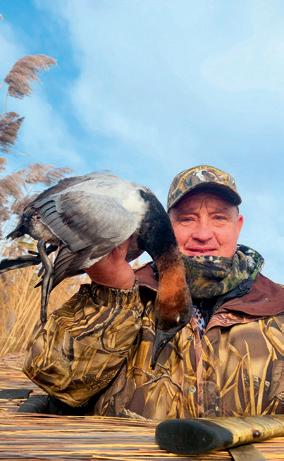
Branch



Today is a change of scenery as I sit at the National Office, looking out over the Connewarre Wetlands, observing the remarkable difference added water inflows prior to the summer months have made. The abundance of native waterfowl and birdlife in general is a stark contrast to past years. It clearly demonstrates what carefully managed wetlands can provide as habitat for Australian birdlife and also as a place for the public to enjoy a stroll along our walking paths.
This is a great lead-up to Australia Day/World Wetlands Day, which will showcase the conservation efforts of hunters, volunteers, and supporters and highlight what can be achieved. A credit to you all. A big thank you as well to the Geelong branch for their efforts in holding a working bee to tidy up the wetland and office area, giving it a clean-cut, professional appearance. Thank you.
Australia Day/World Wetlands Day is a great event, and having enjoyed previous Wetlands Days, it has become an annual calendar event for me. While at the office, it is also a great opportunity to meet with our hardworking staff and get firsthand experience of their day-to-day work and the energy that emanates from their level of busyness. In addition to supporting Australia Day/WWD, we have held our first board meeting of 2025 at Connewarre to align this year’s direction and actions with the 2030 Field and Game Strategic Plan.
While thinking about the next big event, the announcement of the duck harvest season—I expect it will be announced imminently, with hopes for good news and an improved outcome over past seasons. Science continues to provide flawless data, which will always be the foundation for securing our harvest season. Certainly, by the time this magazine goes to print, we will be preparing our camping gear and decoys for this year’s tradition. I look forward to hearing about your experiences and how the season plays out in your area.
What I do find extraordinary is the amount of energy and resources that go into simple decision-making. The science exists as it should, the tools exist to process that information into sound outcomes regarding waterfowl populations, available wetland acreage, and hunter numbers. We have regulators and hunting organizations capable of working together using common sense, yet information and policies are cycled repeatedly, allowing new agenda-driven ideology (such as climate change) into the political arena. And for what purpose? If politicians do not trust their appointed regulators and professional hunting organisations, then why do they exist? We are regulated within an inch of our lives, so decisions should be made by those engaged and closest to the source of what we do. Politicians should focus on running the country and working on what truly matters for their constituents—there are far larger priorities than duck hunting.
I find it hard to understand the outcome in South Australia regarding its hunting season and the constraints placed upon it. Ducks do travel across borders! And then there’s the intention to raise license fees to a level that becomes cost-prohibitive for the average hunter. It smells more like an agenda-driven move than fairness being applied, and it is disheartening to see bureaucracy override common sense.
Our focus for 2025 is improving safety, ensuring zero incidents, as we have seen some serious injuries and near misses over the past year. Compliance with our safety manual is both required and expected—it exists to protect us all. Our Clay Target Committee is focusing on refining our rule book and ground-setting book while also providing guidance to competitors to enhance the enjoyment of our events.
Work on developing Field & Game Australia into an accredited RTO will continue, supporting our members in meeting regulatory and licensing requirements.
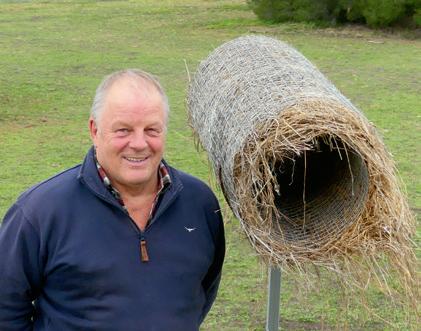
Additionally, we aim to offer public certification in key areas, with details still being finalized. A solid business plan is well underway to provide the necessary information for informed decision-making, ensuring a smooth progression from planning to implementation.
Another key focus area is the development of our Willowmaven asset, with the goal of sourcing multiple smaller revenue streams to help fund essential infrastructure. More details will follow as we gather information and build a strong case.
We also intend to expand our conservation efforts in a more significant and visible way through nesting programs, increased engagement with our volunteer branch conservation officers, and learning from like-minded organisations overseas to adopt suitable ideas here in Australia. There is much to be done in this area, and after speaking with members and the public throughout the year, it is clear our visibility needs improvement. The positive feedback on our current work is encouraging, and there is a strong call for us to do more—which is both motivating and the right direction to take.
2025 is set to be a strong year with a well-thought-out plan. We look forward to seeing exceptional duck season photos and pictures of those enjoying their time on clay targets.
Wishing you all a happy and successful year ahead.
David Anderson Chairman, FGA Board
For individuals who have had membership for over 12months, your membership will be expiring on the 31st of March 2025.
If you would like to confirm your expiry date or membership details, you can do so by logging in to your online profile.
1. Visit www.fieldandgame.com.au
2. Select “Log in” or click “Already a member? Access your profile! homepage.
3. Follow the prompt to log in. If you don’t know your username or password, click “Forgot login details?”.
Once logged in, you will be able to view your membership status and expiry date.
If required, you can click “Renew”, enabling you to renew your membership for another 12 months.
This process will prompt you to pay via credit card (“Pay now”) or through bank deposit/cheque (“Pay later”).
By clicking “Pay later” you will be issued a link to an invoice and reference number via email, please check your spam and junk inboxes for this. When paying by cheque or bank deposit please ensure you utilise the reference number where appropriate.
If you have family members connected to your membership, you can also see their membership details by clicking the “Family” icon. You can then renew their memberships by logging out of your account, and logging into their profile following the above steps.
We are aware that not everyone will be able – or want – to renew this way, but it is available for those who wish to use it. Online renewals are secure and fast!
If you wish to contact the FGA National Office to discuss your membership, ask for assistance, or to renew your membership please see the below details.
(03) 5799 0960
membership@fieldandgame.com.au
605 Lake Road, Connewarre, Victoria 3227.





Scan the QR code to check the status of your current membership and your expiry date. It’s easy: simply open the camera app on your phone and aim the camera at the QR code. You should see the link for the FGA membership registration/renewal portal appear on your screen. Tap the link, then follow the prompts to register or renew your membership.

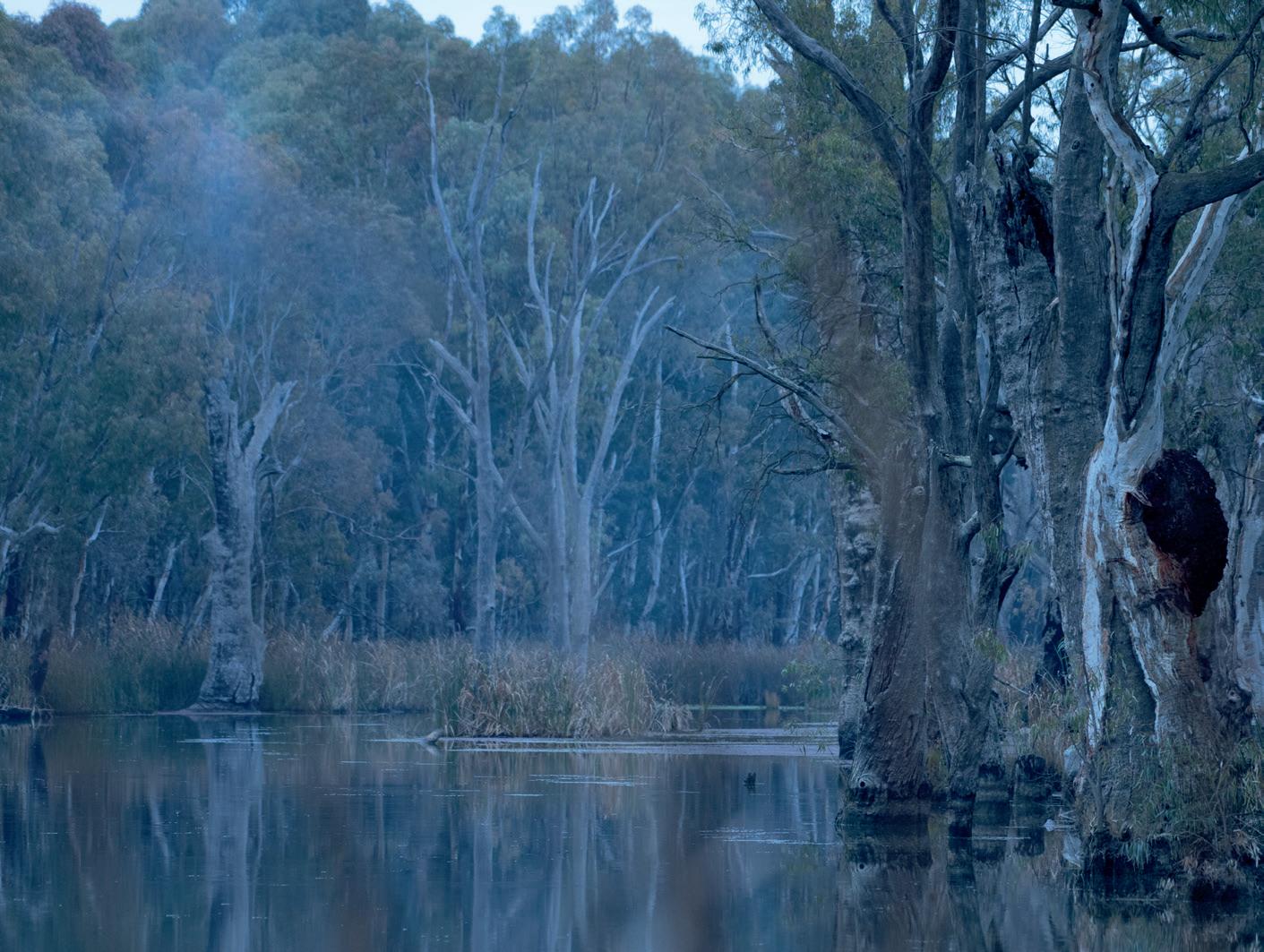
As we step into March 2025, the year is already shaping up to be an eventful one for Field & Game Australia (FGA) and the broader hunting community. This time of year is always dominated by thoughts of duck hunting, and FGA welcomes the recent announcements of the Victorian, Tasmanian, and South Australian duck seasons, along with the Northern Territory’s previously established multi-year framework.
The return to a set, legislated season structure in Victoria is a refreshing shift away from the uncertainty of annual political interference. Having clear season dates locked in for the next three years provides much-needed certainty for hunters, businesses, and regional communities. While this is a step in the right direction, we remain vigilant— political and bureaucratic interference continues to threaten fair, science-based game management.
Tasmania’s outlook remains positive, demonstrating a stable and sensible approach to game management. However, South Australia faces significant challenges, with a political leader seemingly determined to singlehandedly wage a war against hunting and outdoor recreation.
Despite these ongoing challenges, FGA
remains resolute in its mission—to advocate, educate, and push for the sensible, science-based management of our game species and wetlands.
While a full-length season and a ninebird bag limit are certainly reasons to be pleased, the most significant outcome of the Victorian season announcement may well be the government’s commitment to a science-based Adaptive Harvest Management (AHM) system. By locking in a full season for the next three years, the government has provided much-needed certainty while using the harvest strategy and AHM framework to manage total harvest within a desired range.
In principle, FGA fully supports a genuine science-driven approach to game
management. However, concerns remain around the mechanisms of this new system—particularly the potential for political or ideological interference in how inputs are selected and applied. For AHM to be effective, it must be implemented with integrity, relying on transparent and robust data rather than being subject to external pressures that could skew outcomes.
FGA will remain engaged throughout this process to ensure that the system functions as intended—delivering fair, evidence-based game management that serves both hunters and conservation, without being influenced by shifting political priorities.
In South Australia, the 2025 duck season
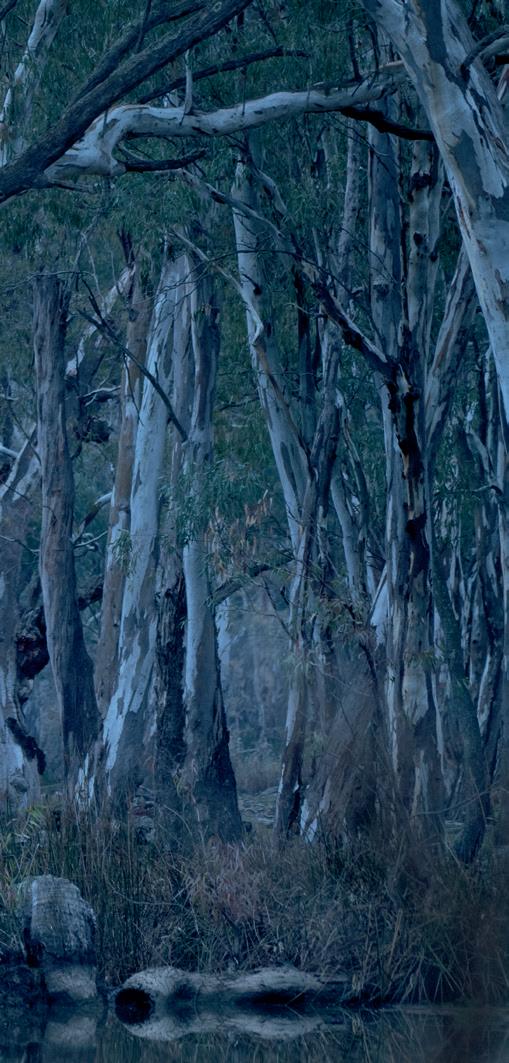
announcement has been made, and while the season length and bag limits are adequate, there are serious concerns about how the Department for Environment and Water (DEW) arrived at their decision.
In a dramatic and unexplained shift away from their previous, well-established scientific season-setting process, DEW has introduced bans on hunting non-threatened species with no justification or consultation. This kind of erratic and ideological decisionmaking is unacceptable and undermines the very principles of fair and sustainable game management.
FGA and other pro-hunting organizations have been left with more questions than answers, and we will continue to demand transparency from DEW on why they have abandoned a science-based approach.
Hunters deserve clear, consistent, and evidence-backed reasoning behind any restrictions imposed. This latest decision further reinforces why our advocacy is more important than ever—without a strong, united voice, we risk losing the hard-fought principles of fair and evidence-driven game management to an ideological agenda pushed by unelected bureaucrats.
While challenges remain in some states, there is good news elsewhere:
Tasmania has shown promising signs of stability and commitment to sustainable hunting, with no major negative regulatory changes on the horizon. The sensible approach taken by the Tasmanian government is a refreshing contrast to what we see in Victoria and South Australia, and we remain optimistic about the future there.
At the time of writing, I am preparing for a trip to Tasmania, with a firearm in tow, to exercise our ability to legally enter and hunt in the state. While there, I will meet with government leaders and department heads to maintain key relationships and reinforce the importance of a strong, united voice in Tasmania’s hunting community.
New South Wales continues to implement mitigation quotas effectively, demonstrating a pragmatic approach to managing game populations while acknowledging the role of hunters in conservation.
Northern Territory has just wrapped up a fantastic hunting season in January, with strong bird numbers and positive participation from hunters. The change in government has ushered in a renewed sense of optimism for hunters and shooters, with growing support for ethical, science-based hunting.
For those looking for new hunting opportunities, the Top End is well worth considering!
The challenges we face in Victoria and South Australia highlight why FGA’s advocacy is more important than ever.
FGA members have been fantastic in their support, and we cannot thank you enough. Your engagement—whether writing to politicians, responding to surveys, or staying informed—makes a real difference.
In 2025, we will continue strengthening our role as trusted advisors to government, while actively opposing ideological decision-making that threatens fair, science-based hunting regulations.
Our goal is simple: hunting and game management should be based on science, not ideology.
While February is always dominated by duck hunting, rest assured that we have not lost sight of our broader organizational goals. Recently, FGA hosted a successful
Showcase Event at Melbourne Gun Club, where over 20 Ministers and policymakers were invited to experience clay target shooting, enjoy world-class game food, learn more about FGA’s origins, goals, and purpose
The day was a huge success, with meaningful conversations that have already opened doors for greater involvement in key policy areas. We look forward to building on these discussions to ensure that hunting, conservation, and responsible firearm ownership remain well-represented in decision-making circles.
Beyond this, we are making strong progress on initiatives that further cement FGA’s leadership in ethical hunting, conservation, and habitat management. Stay tuned—there’s plenty more to come in 2025!
Our conservation efforts continue to grow, with major projects underway that reinforce our commitment to game bird habitat and wetland restoration.
The Wetland Environmental Taskforce (WET), in partnership with FGA, has ramped up efforts to monitor and enhance breeding habitat for native game birds.
In 2025, we will be announcing new conservation initiatives, expanding our research efforts, and strengthening our partnerships with like-minded organizations.
FGA is committed to leading the way in conservation, and we are excited to share more in the coming months.
The 2025 season brings renewed certainty and opportunity for hunters—but our work is far from over.
Through strong advocacy, active engagement, and a united membership, we continue to shape the future of hunting in Australia.
As we enter the 2025 hunting season, let’s do so with determination, pride, and an unwavering commitment to our hunting heritage.
With passion, unity, and a clear vision for the future, we will not only protect our way of life—we will strengthen it for generations to come, and be #Proud to belong!
See you in the field.
Lucas Cooke CEO, Field & Game Australia

There’s a crackle in the air, that undeniable shift that tells you the season is near. It’s in the mist rising off the water before first light. It’s in the sudden, electric silence before the first flight of teal rockets overhead. It’s in the distant “meooow” of wood ducks, the scent of damp reeds, and the weight of the shotgun in your hands—familiar, steady, ready.
This is it. This is what we wait for. The 2025 duck and quail seasons are here, and it’s shaping up to be one to remember.
The long, quiet months are over. The wetlands are calling, the bush is alive, and the best time of the year is upon us.
How Good is It? There’s Nothing Like It.
Think about it. The alarm sounds long before dawn, but you’re already awake— too excited to sleep. The dogs already up and waiting at the door. You grab your gear, jump in the ute – already loaded with gear, and hit the road before the world stirs. Maybe it’s a solo mission, just you and the dog, or maybe the convoy is rolling, mates in tow, esky packed, stories already flying before the first shot is even fired.
Then, the setup. Decoys carefully placed, waders up, the dog quivering with anticipation at your side. A thermos of hot coffee in hand as the first slivers of gold creep over the horizon, reflecting off the still water. The air is thick with the scent
of wetland earth, eucalypts, and the faint, smoky whisper of last night’s campfire.
And then—the moment. The one that makes it all worth it. That split-second rush as a big mob of blackies or teal hook in, wings cupped, dropping into the spread. Your mate whispers, “Now.” The world slows, the adrenaline surges, and the season is truly underway.
There’s a different kind of thrill in stepping into a wetland you’ve never hunted before—the quiet challenge of reading the land, knowing no one has marked the spots for you. It’s just you, your instincts, and the whispers of the wild.
You’ve scouted from the bank for weeks. You know there are good duck numbers around. But now, you’re in the water, in the dark, and the flight lines just aren’t quite how you pictured.
The sun’s light is increasing ever so slowly. You know the ducks are up and about— they’re just not where you are.
You push forward, the cold water swirling around your waders, reeds rustling as you move. Every step is careful, deliberate— one wrong move, and the birds will know you’re here before you ever lift the shotgun. The distant calls of black ducks echo somewhere beyond the rising mist, but you can’t quite tell where.
Hastily, you spread half a dozen decoys in a likely-looking pool.
As you move quietly back into cover— what was that?
A flash of wings in the half-light.
But where’d it go?
You pause. You wait. You let the moment build, your pulse in sync with the hush of the marsh.
Taking out your favorite call you sound your best “come-back” call, then a slightly desperate “feed chuckle”—the sound echoes in your ears.
Silence stretches.
Then—wingbeats!
A trio of black ducks scream by, then turn, dropping right into your decoys, the first light of the sun in their faces.
Your gun swings up, almost by itself. Everything comes together.
This is the hunt at its purest—reading nature, understanding it, becoming part of it.
Not every hunt is a solitary pursuit. Some are loud, full of laughter, and fueled by the energy of a good crew.
Picture this—boats loaded, gear strapped down, engines rumbling as you push out onto the glassy surface of a vast wetland. The first pink streaks of dawn paint the sky, and the scent of wet mud and fresh air fills your lungs.
Across the water, a mate yells from the other boat:
Mate 1: “At least if you break down, you can use that boat oar you call a shotgun to paddle back!”
Mate 2: “Yeah? Well, if you get lost, just blow your best duck call—we’ll find you by following the sound of a strangled cat!”
The crews erupt in laughter. It’s all part of the ritual—the camaraderie, the teasing, the shared moments before the serious work begins.
The boats slow, engines cut, and silence rushes in like a wave. Now, it’s time to get serious. Decoys spread across the water, shotguns ready, eyes scanning the sky.
When the first birds come in—it’s magic. Calls sound, wings whistle, and the first shots of the season ring out.
Then, the satisfaction of a perfect shot, a well-placed retrieve, and a hard-earned bag of birds.
How good is it?!
Hunting is more than just a sport. It’s a way of life. And the best way to keep it thriving? Share it.
This season, if you know someone even slightly interested in hunting—bring them out. A mate, a work colleague, your neighbour’s kid, your own kids. Juniors especially. They are the future, and the best way to ensure that our traditions live on is to expose young people to the magic of the hunt.
And here’s the thing: they don’t even need to become hunters. A day in the field won’t necessarily make them a lifelong shooter, but it will make them a lifelong supporter. A positive experience breaks down the myths, cuts through the anti-hunting propaganda, and builds allies instead of opponents.
Let them hear the whistling wings. Let them watch the sun rise over the water.
Let them see how real conservation works—not through bans and restrictions, but through active management, respect for the land, and a deep understanding of wildlife.
It’s not just about bag limits—it’s about being part of something bigger.
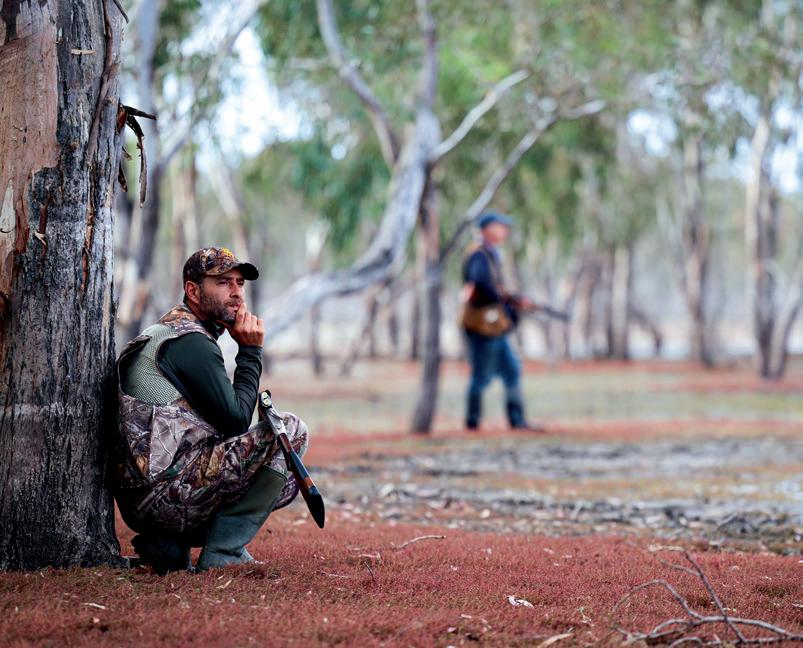
If you’ve done it, you know.
A hunt isn’t just about the moment the birds take flight. It’s the whole experience. The long drive into the wetlands, the banter over breakfast, the camaraderie of setting up camp under the stars.
Picture this:
• A fire crackling, flames dancing against the night sky.
• Duck poppers sizzling in the pan, a simple bush meal turning into a feast fit for kings.
• The cold air biting, but the warmth of the fire and the company of good mates making it the best place in the world to be.
• Stories from the day—the one that got away, the shot that was never going to hit but somehow did, the dog’s best retrieve yet.
This is what hunting gives us. More than food, more than adventure—it gives us a bond, a connection to the land, and a reason to return, season after season.
For those who know, there’s nothing like it. It’s the culmination of years of training— long hours in the field, patience, discipline, and trust between hunter and dog. You step into the stubble, the grass crunching underfoot, your shotgun resting easy in your grip. The air is thick with the scent of dust and dry earth, the landscape painted in gold and bronze under the afternoon sun.
Then—the moment. Your dog freezes. Every muscle locked, tail straight, nose pointed, eyes focused. The world stops. You breathe in, slow and steady, stepping forward carefully, heart pounding.
A flicker of movement—a flush! The quail erupts from the cover, wings buzzing, twisting unpredictably through the air.
Instinct takes over. Snap shot, swing, fire— drop. The dog is already moving, sleek and efficient, retrieving the tiny but delicious bird with pride and precision.
It all comes together. Man, dog, nature—a perfect symphony.
A brace of quail in the game bag, the satisfaction not just in the shot, but in the journey to get here. The work, the training, the countless hours refining skills—all for this moment. >>
There is no greater reward than passing on the tradition. If you’ve ever mentored someone, you know the feeling—the mixture of pride and joy when they get their first bird.
You stand beside them in the hide, whispering tips, encouragement, steadying their nerves. The first flight comes in— ducks circling, deciding whether to commit.
“Wait... wait... not yet...”
Their hands grip the shotgun tightly. Their breath is shaky, their heart pounding in their ears. Then, the perfect moment.
“Now!”
The shot rings out. The bird folds. A perfect, clean drop.
They freeze for a second, disbelief on their face, then turn to you, eyes wide.
“I did it!”
And you just grin. Because you know exactly how that feels. It’s the moment a hunter is made.
They pick up their first bird with reverence, respect, running their hands over the iridescent feathers, taking in every detail of the life they’ve just taken—and the responsibility that comes with it.
This is hunting. Not just taking—giving back, teaching, growing.
Supermarket meat? Wrapped in plastic, pumped full of preservatives, trucked across the country. Farmed duck? Raised in a pen, force-fed to grow fast and fat.
But the birds you bring home from a hunt? That’s real food. Clean, natural, native, and untouched by anything but the wild.
Wild game is the most ethical, sustainable, and rewarding food source there is. You’ve earned it, you know where it came from, and it’s going to be the best meal you’ve ever had.
A proper roast duck, slow-cooked over the coals. Quail, pan-seared with saltbush and pepperberry. Fresh duck poppers, homemade stock, wild-shot terrine—this is Australia’s finest, most natural produce, and we as hunters have the privilege of harvesting it ourselves.
This year is huge. The introduction of Adaptive Harvest Management (AHM) is a game-changer, bringing a data-driven approach to season-setting instead of knee-jerk politics.
But make no mistake—the fight isn’t over. In South Australia, we’ve seen blatantly anti-hunting decisions creep into policy. In Victoria, we still face pressure from those who want to see us shut down completely.

What’s the best way to push back? Show up. Get out there in numbers. Hunt ethically, hunt proudly, and be the best ambassadors for hunting we can be.
Because when we are seen doing the right thing, when we introduce new people to what hunting really is, and when we demonstrate our role as true conservationists—we win.
This is the season we’ve been waiting for. This is our time.
The wetlands are calling. The bush is alive. The fire is burning.
Let’s make it one to remember.
Non-hunters go on hikes. They take photos. They walk through the landscape as visitors. But we? We are not just observers. We are participants.
We know the land, the water, the wind. We see the seasons not just as dates on a calendar, but as living, breathing shifts in the world around us.
We understand the cycle—birth, life, death, renewal. We take, but we give back. We manage, restore, conserve, protect.
This is wise use. This is stewardship.
Hunting isn’t just about taking a bird. It’s about ensuring there will always be birds to take.
And when you stand out there—alone in a wetland, or laughing with mates in a boat, or whispering to a junior hunter as they line up their first shot—you know you’re part of something bigger.
• Take a friend. Take a junior. Spread the word.
• Hunt with skill and respect—know your species, take ethical shots, retrieve every bird.
• Make time for mateship—the best moments often happen after the hunt.
• Cook your birds, share your harvest, and take pride in eating wild game.
• Be an ambassador for our hunting traditions.
Be Proud to Belong!
T3 GRANDITALIA
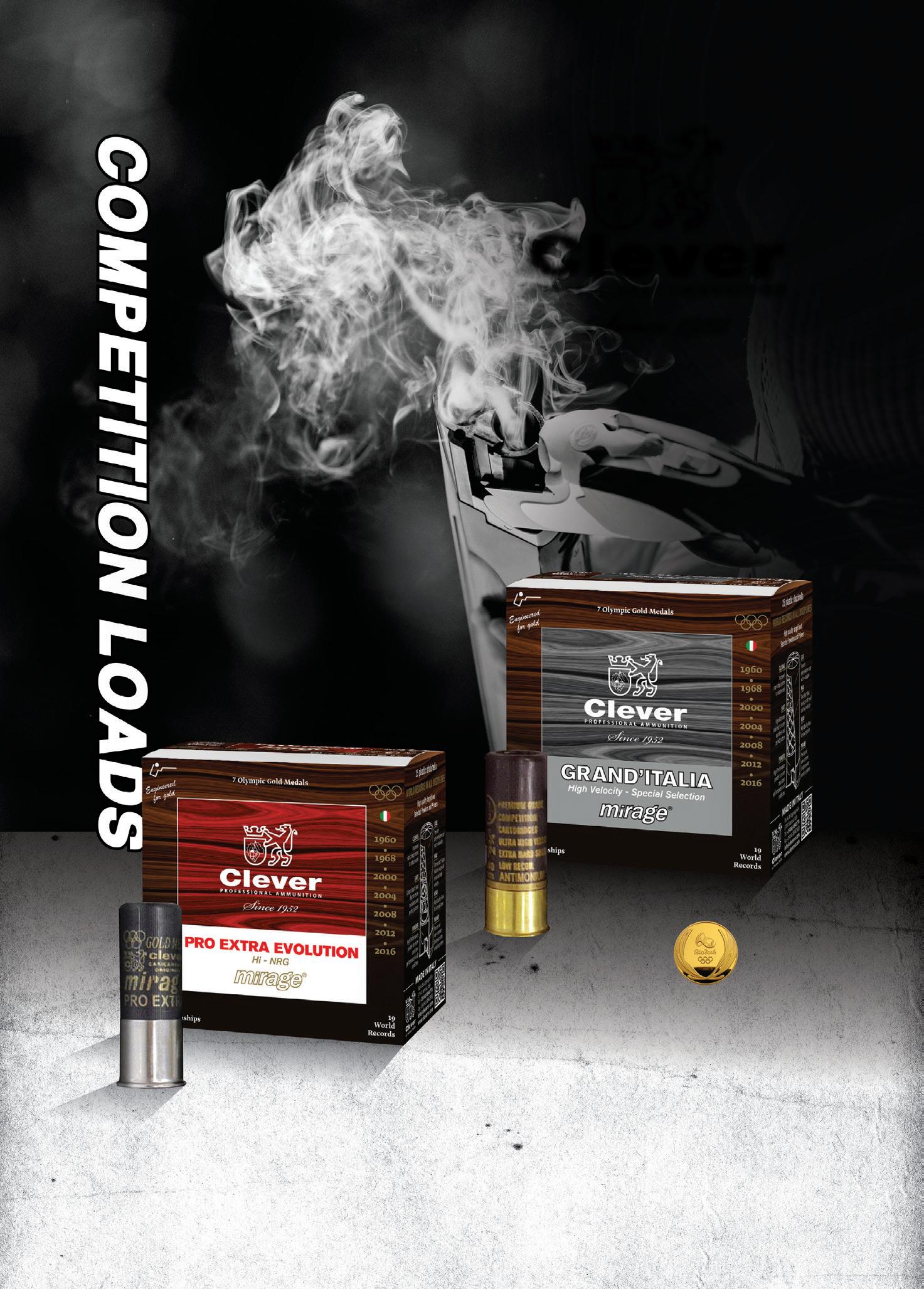
LEAD - ANTIMONIUM: 5%
T4 PRO EXTRA EVOLUTION GAUGE
- Carbon/Quartz

In 2025, regulated duck hunting seasons will run in Victoria, South Australia, Tasmania, and the Northern Territory.
Victoria
Following a highly successful 2024 season, which saw peaks in hunter participation, record-high compliance rates, and the highest harvest levels of both duck and quail in over a decade, anticipation for the 2025 season has been strong. With Adaptive Harvest Management now in place and a renewed focus on evidencebased regulation, this season presents an opportunity to solidify the long-term future of sustainable hunting in Victoria.
Season Structure:
Under the Wildlife (Game) Regulations 2024, the Victorian duck season will commence on Wednesday, March 19, 2025, and conclude on Monday, June 9, 2025 (inclusive).
• Start time: 8:00 AM for the first five days, then reverting to 30 minutes before sunrise for the remainder of the season.
• End time: 30 minutes after sunset each day.
• Daily bag limit: 9
• Permitted species:
• Pacific black duck
• Maned goose (wood duck)
• Grey teal
• Chestnut teal
• Australian shelduck (mountain duck)
• Hardhead
• Pink-eared duck
• Prohibited species: Blue-winged shoveler cannot be hunted.
As part of the usual seasonal arrangements, certain locations may be closed to duck hunting. These sites will be listed on the Game Management Authority (GMA) website, and hunters should check for updates before heading out.
The 2025 South Australian duck hunting season will commence on March 22 and end on June 29, with a bag limit of 6 ducks per licensed hunter per day.
The species that may be hunted are grey teal, chestnut teal, Pacific black duck, Maned goose (wood duck)
Australian shelduck (Mountain duck) – can be hunted, but a senseless restriction to only 2 birds per day per hunter has been introduced.
Pink eared duck, Hardhead and Blue Winged Shoveler are not able to be hunted in season 2025. While FGA understands restricting BWS while population research is done, niether Hardhead or Pink eared ducks are considered threatened or endangered in Aus, so these restrictions due only to local low numbers are not scientifically valid or justified.
Shooting is permitted between sunrise and sunset on any given day of the open season.
The 2025 South Australian stubble quail hunting season begins on April 26 and concludes on July 27, with a bag limit of 15 quail per licensed hunter per day.
Field & Game Australia is deeply disappointed in the South Australian government’s clear pursuit of an antihunting agenda. The poorly justified restrictions, including the removal of certain species from the permitted list and other limitations, make it apparent that the Department for Environment and Water (DEW) and the responsible minister have ignored the findings of the SA Select Committee on Native bird Hunting. Rather than embracing the committee’s recommendations—which acknowledged the sustainability of regulated hunting—the government has instead continued to impose unnecessary and compounding restrictions on hunters. FGA remains committed to advocating for evidence-based policy and ensuring that hunting regulations reflect both scientific

data and sustainable wildlife management principles rather than political interference.
The Department of Natural Resources and Environment Tasmania has listed the dates for the 2025 duck and quail seasons on its website.
The dates for the 2025 wild duck hunting season are March 8 to June 9.
The dates for the 2025 brown quail hunting season are May 19 to June 30.
As this magazine went to print, the annual duck counts were under way and were expected to be finished in late February 2025. Early indications were that there was water in each of the major wetlands, and good numbers of waterbirds; however, due to the conditions – with plenty of feed and water outside of areas traditionally counted in Tasmania – there are likely to be only average bird numbers in the counts.
This should not affect the season, and there will be plenty of birds for those who know where to find them.
Please note that the department advises that season dates are subject to change without notice in response to the results of monitoring and changes in seasonal conditions. As such, hunters are expected to check regularly for any changes that may impact where and when they can hunt.
The Northern Territory boasts truly unique landscapes and hunting opportunities.
As most will be aware, due to the cycles of the Wet/Dry seasons, NT’s season dates are not aligned with the southern states. In a regular season, hunters may hunt on private land from about the middle of August, and on public land including hunting reserves from about the middle of September. The season typically ends around the end of week one in January of the following year.
As in the southern states, hunters in the Northern Territory must obtain the required licences and permits and adhere to regulations set forth by the NT Government.
Typically, the NT season allows the hunting of 7 magpie geese and 10 waterfowl per hunter per day.
Please note that the 2025-2026 season dates have not yet been announced, and the above information can be used as a guide only.
Each duck and quail hunting season is an opportunity for hunters to showcase their commitment to ethical, responsible, and sustainable hunting. Australian hunters have a proud history of stewardship and conservation, and the vast majority do the
right thing—ensuring the longevity of both our hunting traditions and the game bird populations we cherish.
Field & Game Australia applauds the dedication of hunters who take their responsibilities seriously. Adhering to strict regulations regarding firearm safety, species identification, and ethical hunting practices ensures that hunting remains a respected and sustainable activity.
As with every duck and quail hunting season, hunters must adhere to strict regulations regarding firearm safety and ethical and sustainable hunting practices.
To be an ethical hunter means:
Knowing and identifying permitted game species before taking a shot.
Making responsible shooting decisions knowing when to shoot and when to hold off.
Retrieving all downed birds immediately and dispatching them humanely.
The Victorian Game Management Authority’s guide, Be a Better Game Bird Hunter, is a reliable resource to help hunters refine their skills and knowledge.
Minimise wounding – make every shot count
Field & Game Australia supports the Reduce Wounding campaign and encourages all hunters to take steps to ensure the cleanest, most humane harvest possible.
Year-round shooting practice is one of the best ways to maintain proficiency. With over 50 active clay target clubs, there’s always an opportunity to sharpen your skills.
Using decoys helps bring birds within the effective range of your shotgun, increasing the likelihood of a clean, ethical shot.
If in doubt—don’t shoot. Always positively identify your target as a permitted game species before pulling the trigger.
Hit your duck twice to ensure a quick and humane dispatch. If a bird is downed but not immediately dead, a swatter load (steel #6, 7, or 7½) is the most effective way to ensure a humane kill.
Retrieval is a must. Regulations require hunters to retrieve each bird before continuing to hunt. Hunting with a welltrained retrieving dog—or partnering with someone who has one—greatly improves retrieval success.
Strict adherence to season dates and bag limits is essential to ensuring the long-term sustainability of our game bird populations. As responsible hunters and conservationists, we all play a role in preserving Australia’s rich hunting traditions for future generations.
By leading by example, educating new hunters, and practicing ethical hunting, we ensure that hunting remains not only a respected pursuit but also a vital part of wildlife management and conservation.
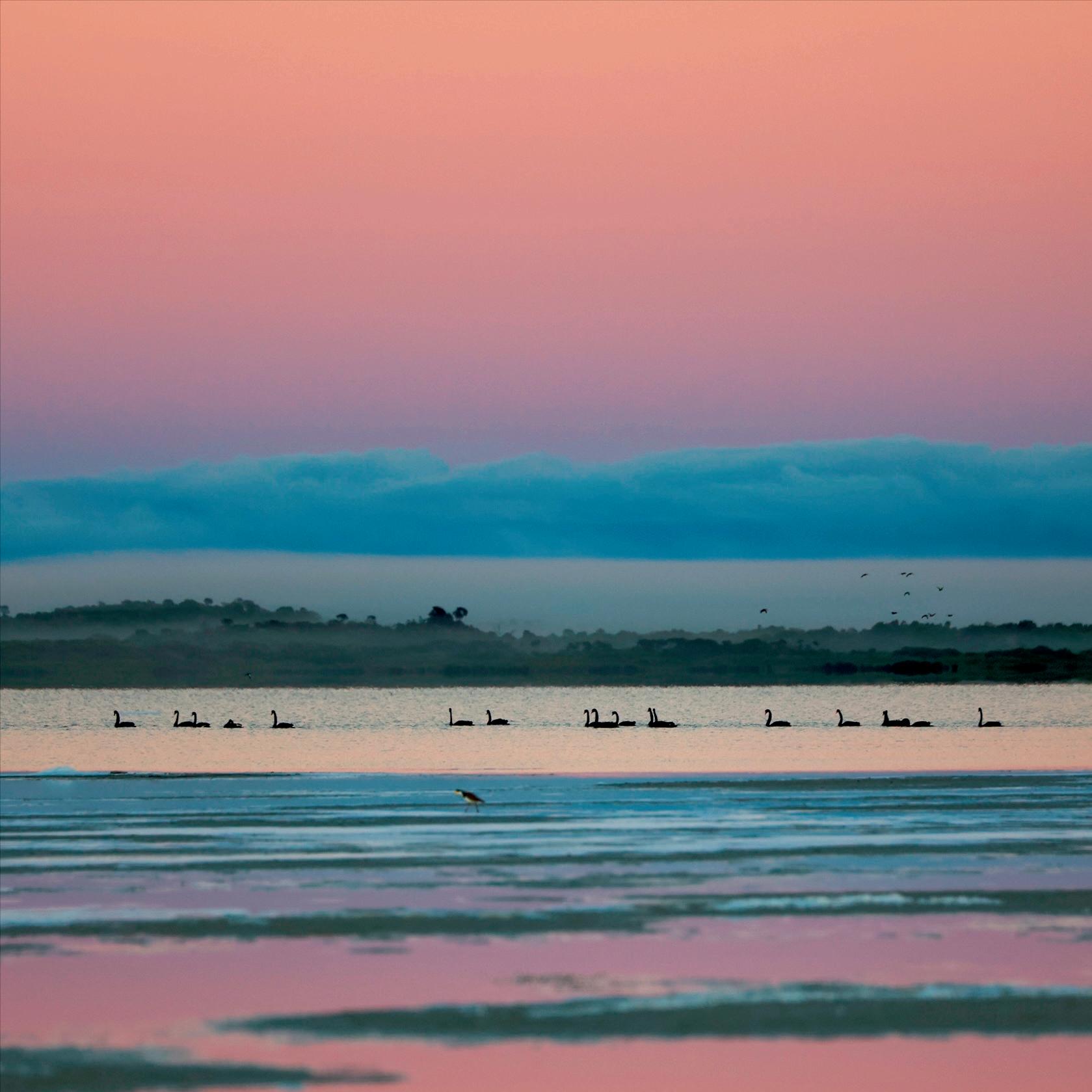
by

After the triumphant return of the Duck Stamp in 2024, Field & Game Australia (FGA) and its conservation arm, the Wetlands Environmental Taskforce (WET), are proud to announce the second annual Duck Stamp for 2025. This initiative continues the legacy of marrying art and conservation, with all funds raised, channelled directly into vital wetland restoration projects across Victoria.
The Duck Stamp program has always been deeply rooted in the ethos of FGA. Originally introduced decades ago as a voluntary fee for hunting licenses, the initiative proved that hunters and conservationists could unite for a common cause: preserving and protecting the habitats that support Australia’s native wildlife. In 2024, this proud tradition was revived, and the reception was nothing short of inspiring. This year, we’re building on that momentum with even greater ambition.
The 2025 Duck Stamp features a breathtaking pastel of a Pink-eared Duck created by the talented Gayle Newcombe. Gayle’s journey to becoming the featured
artist is a story of resilience, passion, and deep connection to nature.
Gayle Newcombe’s path to artistic recognition began with a life-changing decision in 2013: to return to her art after years of setting it aside. What started as a personal endeavour to rekindle her creative flame quickly grew into a professional pursuit. By 2017, Gayle took a courageous leap of faith, leaving behind a conventional career to focus entirely on her artistic dreams. The transition was not without its challenges, but her determination and talent propelled her forward.
Specialising in pet portraits, Gayle carved out a niche that resonated with her audience and

continues to bring her immense satisfaction. Her unique ability to capture the emotional bond between pets and their owners earned her widespread recognition. Beyond her commissioned works, Gayle’s art extended
to wildlife, where her passion for nature found a compelling outlet.
Gayle’s accolades include winning the Victorian Pastel Society’s wildlife section two years in a row and securing the Kelpie section award at the prestigious 2024 Casterton Art Show. Each piece she creates is deeply personal. She always uses her own photography references for her original work , allowing her to infuse a personal connection into every piece she creates. Trips out into nature and experiencing what she has to offer is an important process. It is as important as her pet commissions she takes on, often based on photography, ensuring an authentic and
This year’s Duck Stamp competition attracted an impressive pool of submissions, showcasing the immense talent within the Field & Game community and beyond. Among the runner-ups were some truly outstanding pieces that demonstrated a profound understanding and appreciation of Australia’s wetland habitats.
While Gayle’s Pink-eared Duck ultimately claimed the spotlight, the efforts of these artists remind us of the richness of our creative community and its shared commitment to conservation.
Blue Winged Shoveler
Inspiration: The Blue Winged Shoveler was chosen because it is one of our distinctive native waterbirds known for its unique appearance which includes striking blue wings, distinctive shovel-shaped bill and attractive colourful plumage. Although it is not often seen in large numbers in our Gippsland area, the Blue winged Shoveler is memorable once seen close up in the wild.
Australian Shelduck
Inspiration: My inspiration for my soft pastel comes from the fantastic conservation and breeding programs offered throughout the year by Field & Game Australia. I love seeing the native ducks around our area and marvel at their family interactions, their personalities and their resilience in the face of the destruction of their native habitat due to the expansion of townships.
The Duck Stamp initiative is more than a fundraiser—it’s a testament to what we can achieve when passion meets purpose. Funds raised through the sale of the 2025 Duck Stamp will enable WET volunteers to deliver boots-on-the-ground projects, restoring wetlands and creating lasting benefits for native flora and fauna. The process is simple: for every $50 donation, contributors receive a beautifully printed Duck Stamp receipt. Higher donation tiers come with additional rewards, including limited-edition signed prints of Gayle Newcombe’s stunning artwork.
intimate connection with her subjects.
“I want my work to make a statement,” Gayle says. “To connect people with nature and wildlife. It’s incredibly rewarding to see an image take shape on the easel and feel that connection with the subject.”
What sets Gayle apart is her ability to blend realism with artistic expression. Her works are more than lifelike—they are evocative and dynamic, breathing life into her subjects. This approach, coupled with her love for Australian wildlife, made her the perfect choice for the 2025 Duck Stamp. To learn more about Gayle’s work visit https:// gaylenewcombefineart.com/


In 2024, the program’s revival saw widespread support from FGA members and conservation enthusiasts alike. The 2025 campaign aims to amplify that success, demonstrating once again that every donation, big or small, plays a crucial role in protecting the habitats that underpin our wildlife heritage.
We invite all Australians to make their mark on conservation by supporting the 2025 Duck Stamp program. Whether you’re an art enthusiast, a conservationist, or someone who simply values the natural beauty of our
wetlands, your contribution matters. Visit https://www.wet.org.au/shop to purchase your Duck Stamp or explore other donation options. Together, we can ensure a thriving future for Australia’s wetlands and the incredible species that call them home.
Gayle Newcombe’s inspiring story and exceptional talent remind us that art and conservation are deeply interconnected— both requiring dedication, vision, and a profound respect for the natural world. As we celebrate the 2025 Duck Stamp, let’s honour this connection and continue to work toward a brighter, more sustainable future for all.
The NT trip was as enjoyable as ever this year with new friends joining us for the annual pilgrimage north to hunt what in my opinion is the best tasting gamebird in Australia, the Magpie Goose.
The last morning Hunt was particularly memorable, the preceding week had been one hundred percent hunting on public reserves and produced great hunting and several full bags of geese. A bonus this year was the multiple bag limits of Pacific Black Duck, Plumed Whistling duck and Wandering Whistling Duck.
However, the last morning hunt had us hunting on a mango farm with more substantial limits and I sat down to take blood samples for a JEV (Japanese encephalitis virus) research program that I’m a part of. As I eagerly sampled birds after the remainder of the hunting crew processed birds, I realised that I had no photos of taking the samples. So, I got the phone out and took a quick snap checking the photo was a good one I noticed something on the leg of the goose in the foreground then quickly looking at the physical sample in front of me I quickly discovered that it was indeed a banded goose.
Having banded hundreds of ducks myself over the past seven years, this was the first time I had come across one that had been harvested by someone in my hunting party and it had gone completely unnoticed by the cleaning party.
After letting out an almighty roar and abusing the hunting party for being so blind, my mind immediately raced to contemplating where it might have been banded, how far it had flown and how long ago it was captured, all details that would be found out through the reporting process that is the band recovery reporting mechanism of the Australian Bird and Bat Banding Scheme.


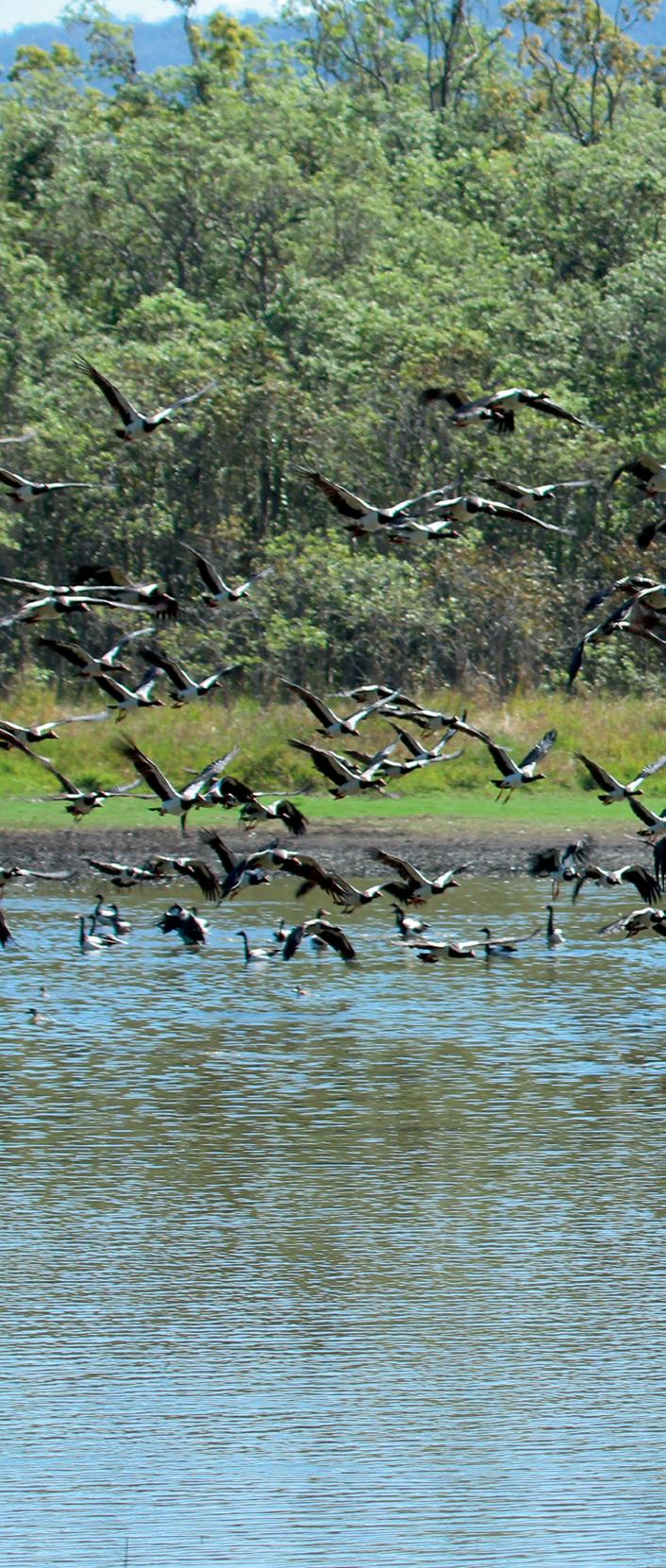
You can report your band here; https:// www.dcceew.gov.au/science-research/ bird-bat-banding/reporting-form
When I submitted my details directly from the band this is the data that was sent
directly back to me informing me of the history behind this bird.
Male Magpie Goose, 2,89kg, captured and banded at 8:40am 28th November 2017 at Acacia Hills.
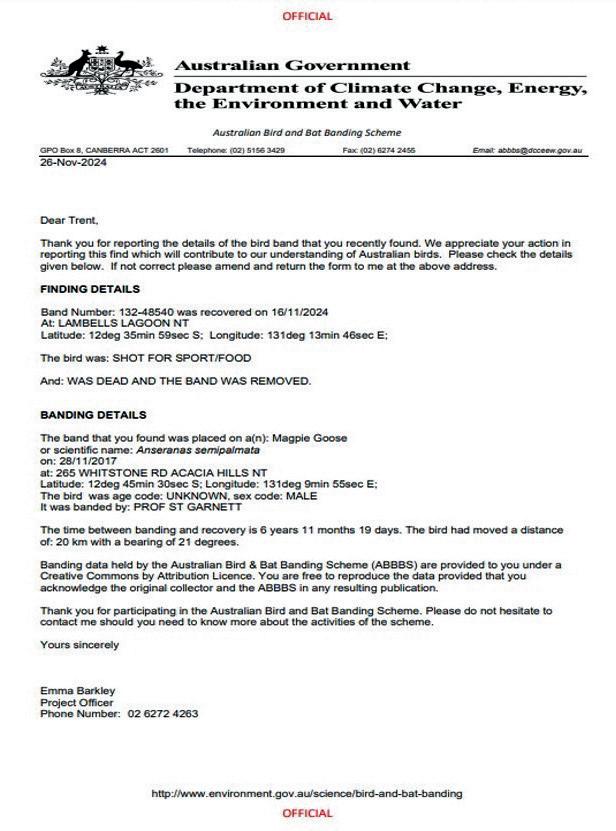

Unfortunately, due to the hasty speed at which the hunting party were cleaning birds, we had no opportunity to weigh the bird prior to preparation for the dinner table.
So, there you have it, an example of how to report a retrieved band and the data we can learn from such reports, happy hunting and don’t forget to check the legs before processing when next out hunting.
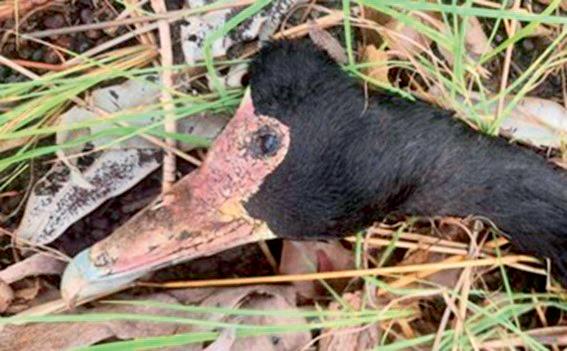
Heart Morass, a sprawling 1,800-hectare wetland near Sale, Victoria, stands as a testament to successful environmental restoration and community collaboration. Once plagued by issues like acid sulfate soils and salinity due to heavy grazing, the area has been revitalized through the dedicated efforts of organizations such as the Wetlands Environmental Taskforce Trust and Field & Game Australia.
In 2025, Heart Morass continues to flourish, offering a haven for diverse waterfowl species. Recent observations have reported healthy populations of grey teal, chestnut teal, and Pacific black ducks. As water levels recede in surrounding regions, it’s anticipated that more waterfowl will migrate to Heart Morass, further enhancing its ecological significance.
For hunting enthusiasts, the 2025 season brings structured access to ensure both safety and environmental sustainability. Access on the opening morning is limited to 150 keys, each priced at $80. These keys became available on January 11th, 2025 and have since sold out.
For hunters who wish to access Heart Morass during the duck season but outside the opening morning, the number of keys is unlimited, and the purchase price is $80 per key.
Hunters must be current financial
members of Field & Game Australia to purchase a key. Junior members can access the area under the direct supervision of an adult key-holder.
The funds generated from key sales are pivotal for the ongoing management and conservation efforts at Heart Morass. Contributions support habitat restoration, water management, and the preservation of the wetland’s rich biodiversity. Hunters and visitors are encouraged to adhere strictly to the conditions of entry to maintain the area’s ecological integrity.
Beyond hunting, Heart Morass offers opportunities for birdwatching and nature appreciation. The wetland’s restoration has not only enhanced its environmental value but also solidified its role as a cherished community asset.
As 2025 progresses, Heart Morass exemplifies the positive outcomes achievable through dedicated conservation
efforts and community involvement, ensuring its status as a vital ecological and recreational resource for future generations.
The sale of keys to Heart Morass is a major source of income for Wetlands Environmental Taskforce, helping with the upkeep of this invaluable resource.

Should you wish to make a further contribution to WET and thus support it to continue its work for the benefit of hunters and the wider community, your donation will be gratefully accepted. Donations can be made by phoning the FGA national office on (03) 5799 0960 and are taxdeductible.
A link to the 2025 key application form is available on the Field & Game Australia website under the ‘Hunting’ page.
For all inquiries regarding Heart Morass access, conditions, or key purchase, please phone Gary Howard on 0427 432 540.


Pilbara Workshirt
$85.00
Our latest addition to our FGA Casual wear is the hard wearing and comfortable Pilbara work shirt. This features half button front, collar, long sleeves, buttoned cuffs, regular fit, 150gsm weight and washed soft cotton finish for that great feel and easy care.


Field & Game Australia are ready to ensure you hit the ground running in 2025!
Our products are designed with our members in mind, to make your hunting, clay target and conservation experiences easier! Order now via https://www.fieldandgame.com.au/shop All items include postage.
Twist-Lock Telescopic Magnetic Shell Picker
$50
Makes picking up your empty shells a breeze, whether in the field or on a clay target range. Lightweight, yet durable. Save your back! Save the planet!!
$5 from the purchase of every shell picker will be donated to Wetlands Environmental Taskforce Trust


Designed for comfort in the harshest of Australia's conditions with a UPF rating of 50+. Made from 100% Cotton.
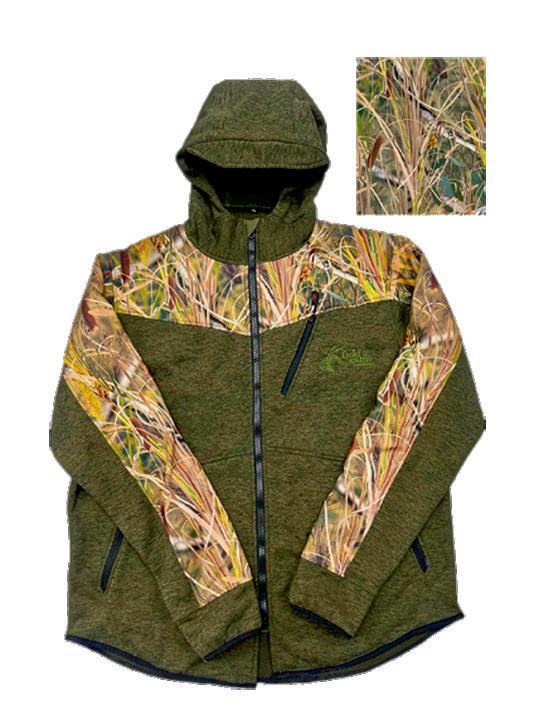
FGA camo, green & black jacket with hood and zip pockets
$145.00
One for the hunters! Water-resistant fleece hoodie with wetland pattern across the shoulders and arms, and two-tone olive and black body. Also featuring an extended cuff with thumb holes, full zip front, contoured hood with brim, deep front pockets with zips, and chest pocket with zip. FGA Wetland Camo Cap $45.00
Featuring the same wetland camo pattern as our very popular FGA jacket with hood and zip pockets, this cap will complete your outfit and make sure you blend into the scenery on your next hunt!
Ducks, like all wildlife, face a complex set of challenges throughout their lives. From predation and disease to environmental pressures and human influence, their mortality is shaped by a variety of factors. While anti-hunting groups often emphasize the risks of wounding loss and hunting-related deaths, the reality is that most ducks die from natural causes long before they reach old age.
Understanding the reasons why ducks die in Australia is essential for shaping effective conservation strategies and ensuring sustainable management of waterfowl populations.
Predation: A Constant Threat
Predation is a primary cause of duck mortality, especially for young birds. In Australia, a variety of predators target waterfowl at different stages of their life cycle. Foxes (Vulpes vulpes), introduced in the 1800s, are among the most significant predators of nesting ducks and their broods. Studies have shown that foxes can devastate local duck populations by preying on eggs, ducklings, and even adult birds when they are vulnerable during moulting season.
Native predators such as goannas, raptors, and large fish also contribute to duck mortality. Black rats (Rattus rattus) and other small mammals raid nests, reducing duck recruitment each season. While predation is a natural ecological force, the introduction of invasive species like foxes and cats has tipped the balance against many native waterbird species, leading to declines in nesting success.
Ducks are susceptible to a range of diseases and parasites that contribute significantly to mortality. Avian botulism, a bacterial toxin that affects the nervous system, has been responsible for mass die-offs in Australian wetlands, particularly during hot summers when water levels drop and organic matter decomposes in shallow pools.
Another concern is avian influenza, though highly pathogenic strains have not yet been recorded in Australia. Studies suggest that low pathogenic avian influenza (LPAI) is endemic in Australian waterfowl populations, with various subtypes detected in healthy

birds. While North America has seen significant impacts of highly pathogenic avian influenza (HPAI) in recent years, Australia has so far avoided major outbreaks, but the risk remains.
Other diseases, such as aspergillosis (a fungal infection) and avian cholera, have been documented in Australian ducks, often in response to environmental stressors such as overcrowding in degraded wetlands or food shortages.
Drought and Habitat Loss
Drought cycles and habitat degradation play a major role in duck mortality in Australia. Unlike North America, where managed wetlands and regulated waterfowl hunting help maintain populations, Australian ducks are subject to the unpredictable nature of a largely unregulated wetland system.
Professor Richard Kingsford, a leading waterbird ecologist, has extensively studied the factors affecting waterbird populations in Australia. His research indicates that habitat loss is the primary driver of declining waterbird numbers, with hunting having a “comparatively minor impact”. In a 2017 analysis, he found "a very small effect" of hunting on duck populations, emphasizing that habitat loss poses a far greater threat. Kingsford has extensively documented the impact of river regulation, water diversion, and drought on waterbird populations. His studies indicate that large-scale water extraction from major river systems, particularly the Murray-Darling Basin, has reduced the frequency and extent of major flood events, which are critical for breeding. This has led to long-term declines in duck numbers due to lower recruitment rates, food shortages, and increased mortality during prolonged dry spells.
When habitat conditions are poor, natural declines in waterbird numbers occur
regardless of hunting. However, Australian waterbirds are uniquely adapted to boomand-bust cycles, allowing them to take advantage of favourable conditions when they return. Unlike some other species, many Australian ducks are capable of multiple breeding events within a single year, leading to rapid population increases when water and food sources are abundant.
The only true limit to these population booms is, again, habitat. Once available habitat is saturated, breeding slows or ceases entirely, and birds shift back to a survival mode until conditions improve. As habitat contracts seasonally, many of the excess birds naturally perish. This dynamic underscores the fact that habitat—not hunting—is the key driver of long-term waterbird population trends.
Hunting is often cited by anti-hunting groups as a major cause of duck mortality, but the reality is more nuanced. The concept of compensatory mortality is wellestablished in wildlife management and suggests that hunting primarily removes individuals that would likely die from natural causes (e.g., predation, disease, or harsh environmental conditions), rather than increasing overall mortality. In contrast, additive mortality occurs when hunting removes individuals beyond what the population can naturally replace, leading to a decline in overall numbers.
Data from North America has consistently shown that well-regulated hunting does not negatively impact waterfowl populations. While Australian research is limited, available evidence suggests that regulated harvest levels do not significantly reduce duck populations when habitat conditions are favourable.
One of the most contentious issues surrounding duck hunting is wounding loss—
where ducks are hit but not immediately retrieved. Animal rights groups frequently highlight wounded ducks dying of starvation, predation, or disease, presenting this as a particularly cruel fate. However, what they fail to acknowledge is that this is precisely how most ducks die in the wild!
Ducks seldom experience a painless death, whether from disease, predation, or injury. A fox does not deliver a quick, humane end, nor does a hawk ensure its prey is dead before it begins feeding. Nature is inherently harsh, and while wounding from hunting is regrettable, it is just one of many ways ducks may meet their end. Contrary to claims by some, wounding does not significantly diminish an animal’s quality of death compared to natural causes.
The key to minimizing wounding loss lies in ensuring hunters are well-trained in both shooting proficiency and effective retrieval methods—principles that Field & Game Australia and other hunting organizations actively promote through education, training, and responsible hunting advocacy.
While hunting is a controlled and highly regulated activity, there are numerous other human-related mortality factors that receive far less attention yet contribute significantly to duck deaths.
Roadkill is a major but often overlooked cause. Each year, an estimated 10 million native animals are killed on Australian roads, including mammals, reptiles, and birds. While roadkill statistics often focus on larger species like kangaroos and wombats, birds also make up a significant portion of these fatalities. Ducks and other waterbirds are particularly vulnerable in wetland-rich areas where roads intersect key habitat.
Collisions with powerlines are another significant cause of mortality, especially for species that migrate or frequently travel between feeding and nesting areas. The risk is heightened in foggy or low-visibility conditions, where birds may not see the lines in time to avoid them. Several instances have been recorded in recent times where birds reported as “illegally shot” have actually been found to have struck powerlines or fences.
Entanglement in fishing nets and discarded waste is also a growing issue. Ducks and other waterbirds frequently become trapped in lost or carelessly discarded fishing gear, leading to drowning, starvation, or severe injury. Plastic pollution, particularly six-pack rings, plastic bags, and microplastics, poses an additional long-term threat by affecting water quality and food sources.
Pollution in waterways has a direct and insidious impact on waterbird populations. Chemical runoff from agriculture, industrial waste, and urban pollution can contaminate
wetlands, leading to toxic algal blooms, reduced food availability, and long-term health issues for waterfowl. Heavy metal contamination, including lead from historical ammunition use or industrial sources, continues to be a concern in some areas.
In Geelong’s wetlands, particularly the RAMSAR-listed Hospital Swamp, Field & Game Australia members have been battling a relentless tide of construction polystyrene blowing in from encroaching housing developments. It is almost impossible to venture into these wetlands without encountering broken masses of white foam polluting the landscape. Countless boat trips have been dedicated to collecting and removing these waste materials, only for fresh debris to be blown in with the next windstorm.
Strangely, this environmental degradation goes unacknowledged—and untouched— by visiting activists who arrive to promote anti-hunting messages while branding the wetlands as “pristine.” Instead of addressing genuine conservation concerns, they ignore the visible threats impacting these critical ecosystems.
Field & Game Australia remains committed to practical conservation efforts—not empty rhetoric—continuing to clean up the wetlands and demand accountability from developers and policymakers.
Artificial feeding by humans—often well-intentioned—can also cause serious harm. Feeding ducks processed foods like bread disrupts their natural diet, leading to malnutrition, disease, and behavioural changes that make them more vulnerable to predators and environmental hardships. Birds fed regularly by humans may lose their natural wariness, making them more susceptible to roadkill, predation, and other dangers.
While hunting is often singled out as a threat to ducks, it is heavily regulated and actively managed to ensure sustainability. By contrast, many of these other humancaused threats operate unchecked, leading to far greater long-term impacts on waterfowl populations. Recognizing and addressing these issues is critical to meaningful conservation efforts.
Starvation vs. Sustainable Harvest: A Conservation Dilemma
A common argument against hunting is that ducks should be left alone to die naturally rather than be harvested. However, in years of poor habitat conditions, this stance ignores a fundamental ecological truth: starvation is a slow and inhumane death, and sustainable harvest is often a better outcome for the species.
In North America, Adaptive Harvest Management (AHM) has shown that
maintaining a regulated hunting season does not negatively impact long-term duck populations. Instead, it ensures that when duck numbers are high, sustainable harvests can be taken, and when numbers are low, restrictions are put in place.
Field & Game Australia is hopeful that this model can be more effectively applied in Victoria, where hunting regulations too often respond to political pressure rather than ecological science. At the time of writing, however, we are awaiting news on the extent to which true Adaptive Harvest Management (AHM) will be interfered with by bureaucrats. That said, the Labor government’s commitment to implementing AHM is commendable.
Moreover, studies in the U.S. and Canada have found that harvested ducks often represent birds that would not have survived the winter due to food shortages or competition. Instead of dying of starvation, they become part of a controlled, sustainable harvest that funds conservation efforts. The same principle applies in Australia—when habitat conditions decline, ducks suffer massive die-offs due to food shortages, drying wetlands, and increased predation pressure. Sustainable hunting offers a preferable alternative to large-scale starvation events.
Ducks die for many reasons, but the greatest threats they face are not from hunters. Predation, disease, habitat loss, and drought cycles account for the vast majority of waterfowl mortality in Australia. While regulated hunting does contribute to duck deaths, it is a controlled and managed process—one that, when done responsibly, does not threaten populations but instead ensures they remain a valued and protected resource.
Australian research emphasizes that habitat availability is the single most important factor in duck survival. If wetlands continue to be drained, rivers over-extracted, and natural flood cycles disrupted, duck populations will decline—regardless of whether hunting exists or not.
Hunters are not only part of the equation— they are part of the solution. Through funding conservation projects, advocating for habitat protection, and practicing ethical hunting, they play a crucial role in ensuring that ducks continue to thrive in Australia’s unique and challenging landscape. The focus must remain on science-based management, not emotion-driven narratives that ignore the real causes of waterfowl mortality.
As discussions about duck conservation continue, it is essential to remember: most ducks do not die at the hands of hunters— they die at the hands of nature.
Picture this, seven years of saving and careful planning, my dream North American water-fowling trip with my decoy carving mentor, Bill Thurman, had finally started off. I was now landing in Pittsburgh
This trip is a long-burning story of a very generous US-based decoy carver, Bill Thurman, who helped begin my decoy carving adventure back in early 2017, fast forward through COVID and a bunch of life, in 2023 Bill said, “I’m 75, Paul, if you don’t get here, we can't go. I’m getting too old, too quick”. I could not put it off any longer; this had to happen!
Wasting no further time, I jumped straight into the driver’s seat, with a very happy to see me Bill, and his trailing duck boat, and took off. With me now occupying the driver’s seat having never experienced US traffic or motorways
we departed, excitedly heading to Lake Saint Clair, Ontario, Canada, wondering what tomorrow would deliver. We drove seven hours north, through three different states, including Detroit (not for the faint of heart!). All with an 18-foot duck boat on the back.
The US Border Police took hours going over reams of paperwork, as well as crawling through the boat. Bill said that in 40 years he'd never been so delayed! The Canadians, on the other hand, were outstanding and efficient. With more driving ahead, and deep into the early hours of our first night and morning, we arrived outside our Guide’s house at 3:30am, collapsed in our seats, and slept the final two freezing hours in the driveway,
Bill said for our trip come early November if we were to hunt Lake St Clair before it freezes up, or risk not being able to hunt it at all. Further to that a, full-blown hunting road trip from Canada to Arkansas, and back again, was absolutely necessary. So who am I to argue? I was in!
That first morning on the Indian Reservation at Walpole Island, Ontario, I just could not sleep. I was way too excited. We were here to hunt the King of waterfowl; Canvasback Diver Ducks (or Cans as they are affectionately known), with local Ojibwe Tribe member, Lonnie Shipman.
By law, you cannot hunt the Reservation without an indigenous guide, and these two blokes had been friends for over 40 years, hunting together at the same time every year. Not only that, but we were to hunt in Bill’s own duck boat, over his hand-carved decoys. Knowing we were in excellent hands let the adventure begin!
The first morning started the same as the next three cold mornings would. Beginning well before dawn, we assembled at the private boat ramp. Lonnie, would take command of Bill’s boat, roaring down large channels, then abruptly turning off and weaving through a maze of interconnecting waterways and marshes, before opening into the great Lake Saint Clair proper, with dawn’s first light struggling its force through the low dark clouds.




If water-fowling is in your veins, this was the most spectacular journey you could imagine. I mean, it was incredible. Mallards flushed from quiet reed beds, Divers raced over the waters in distant lines, and all the while the presence of winter winds and freezing water spray stung at hands and faces, this was the great lakes of North America I'd read so much about.
Making our way out, the boat banged over the rough chop of the wide, shallow bay. The wind was strong and frigid coming out of the northwest, stinging and biting cold at any exposed skin. We were looking for calm coves or sheltered islands and found that a few other hunters were out doing the same. Flights of migrating ducks were moving in all directions which only added to the excitement.
Lonnie would assess the weather, choose the location, and set up Bill’s decoys. Bill would say which decoys to use, but Lonnie placed the spread out in his choosing. they had done it this way for 40 years. In the end the choice was a familiar small grassy
island exposed and way out, settling on its lee side.
Bill’s incredible carved decoys were immediately readied for battle, one original named 'Leeroy' had hunted all 40+ years! attention to wind, Lonnie deployed them in a cunning plan. Diver ducks like long straight lines of decoys that draw them to the main spread of decoys, and with that done, we quickly parked the boat up in the reeds with the action starting almost immediately.
Rudy ducks flew in and out of the decoys, many joining them to rest up calmly, these were safe as we were chasing the bigger ducks. Across the waves we could see flights of Divers with the first to make the mistake of checking out Bill’s decoys a little too closely was a Drake Lesser Bluebill, soon belly up thanks to my Remmington 870 Pump Gun, shooting 3 inch No 2's Hevi Bismuth; I was off and running! Next to fold was a Drake Bufflehead, and I was dialled in! Or so I thought.
About this time a hen Bufflehead >>
caught all of our attention coming in hot on the left side of the decoy spread, BUT out of my peripheral vision to the right at just 15 metres away and head height, a magnificent silver backed, grey striped wing, dark red headed, black chested stud bull Canvasback was now eyeballing me just as he was alerted to our trap. Turning into the gusty, cold, bitter wind he hit the afterburners!
I have tried analysing what happened in the next moments over and over, and likely will for the rest of my life. I was in absolute awe of his beauty and form.
This Bull Can, drawn in by these beautiful hand-carved decoys, was spectacular, he’d flown perfectly into the decoys, but we hadn't noticed, looking for all the world like a David Maass painting.
He had got the drop on us; my dream duck was now fast escaping, and I was scrambling to get a bead on him. Everything happened in slow motion from that point on, for some appalling reason that I still cannot comprehend, I lead that bird even though he tore off directly away from me. After three complete air swing shots, he carried on his merry way, never to be seen again! Whilst Bill and Lonnie tutt-tutted me and laughed out loud, all I wanted to do was swim home; I’d come this far and screwed it up! Over the next three days, Lonnie and Bill delighted in making me relive this over and over, but for now, it was back to hunting.
Soon, we had flights of Scaup, Merganser, Rudy and Bufflehead all pour past the decoys, when suddenly, in comes a hen Redhead, straight into Bill’s decoys. No mistake with this one, and she dropped cleanly, first shot. Big plump ducks, Redheads are fast birds, reminding me of our Hardhead. Next was a Merganser, a fish-eating duck seldom enjoyed by hunters as they tend to taste like Fish Oil capsules (confirmed!) – won’t need to take any more of those!
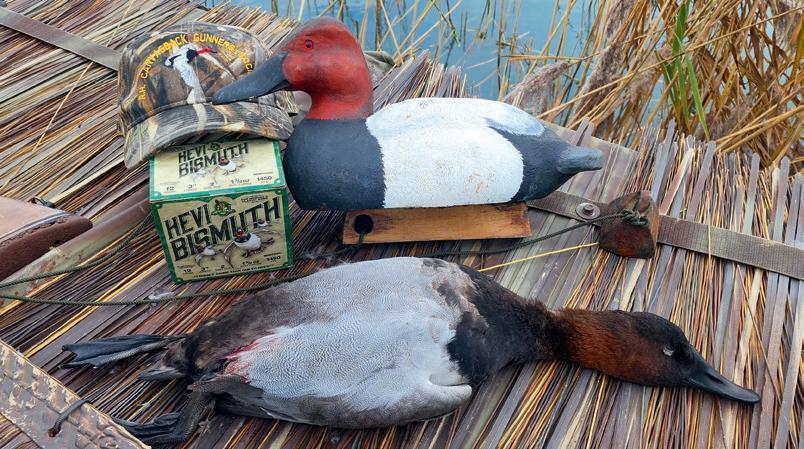

Then, as the weather really deteriorated, with rain and even stronger winds, the birds started to move off the open water. Redhead after Scaup, after Redhead fell victim to Bill’s decoys. The Drakes were truly beautiful birds, and just when I thought I’d never see another Can, in comes my dream bird! Cans are well known as a fast-flying duck, highly prized by water-fowlers all over the world. Here before me was a bull Canvasback, rushing into our decoys. Zooming in erratic zigzags, he was just about to drop out the landing gear when he saw movement, me panicking, and climbed like I have never seen before. Powerfully, he roared up and away. I quickly rose and pulled up on him, firing once I had the lead measured, and dropped him in a great redeeming climbing right to left. Monkey officially
off my back! Bill at this point paused to, officially induct me into the prestigious 'Right Honourable Canvasback Gunners Society', he shook my hand and stated, 'to be a member you have to be observed to take a Canvasback on Lake Saint Clair in the presence of an existing member, you did it in front of 2!' then he presented me with my cap and shirt. I never took the cap off the rest of the trip.
Cans are stunning birds once you have one in your hand, only equalled by their culinary scale; a solid 10/10, wholeroasted to medium-rare. The rest of the day was a mix of the same, yet I only had two chances on Cans. North American water-fowling was living up to its rightful reputation, and many new species taken and sighted.
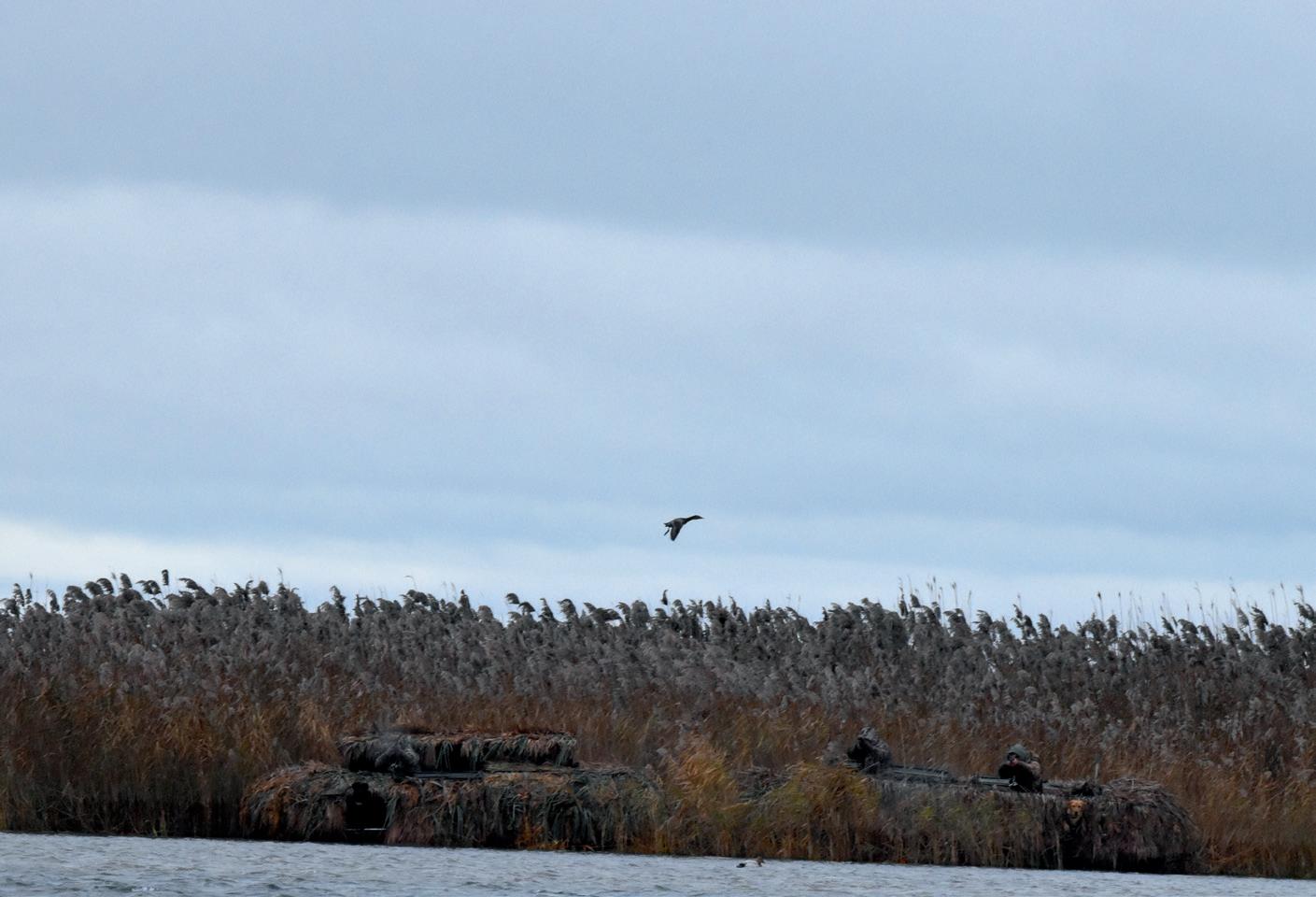

The next few days on Lake Saint Clair were a mix of the same, just in different spots. Racing out and back through the marsh in the dark an absolute highlight I will not forget until the day i die.
Some spots were grassy islands, others were wide channels adjoining the marshes wide bays. Some of the standout memories must be taking a stunning right and left on Cans over Bill’s decoys. Stick a fork in me, I am done! I mean, you cannot ask for much better than that. However just learning from 80+ years of combined knowledge of
Lake St Clair from Lonnie and Bill was priceless.
Stories of hunting in the 1990s with vast flocks of all kinds of ducks blackening the skies, to now where the migration is a shadow of itself with habitat loss at its heart, was a familiar tale of caution. Field and Game Australia, like our North America brothers, Delta Waterfowl and Ducks Unlimited, know habitat loss has the greatest effect on waterfowl numbers, not hunting. Fortunately, with unprecedented increased cooperation between all our conservation
organisations means we are actively sharing successful conservation tactics. The banter and laughs were all day long as we always stayed out till last shooting light, but that had its own consequences, especially when Bill pulled out the toilet bucket to have a crap at the back of the suddenly tiny 18ft boat!
All good things come to an end, and soon we were heading to our next hunting destination in Michigan, dry land hunting geese and public land mallards in flooded corn, but that's a tale for next issue so stay tuned.

For over three decades, Adam Carson has been a steadfast advocate for hunting, conservation, and clay target shooting. A dedicated Field & Game Australia (FGA) board member, his journey within the organisation is deeply rooted in his passion for the outdoors and his commitment to securing a future for ethical hunting and wetland conservation.
Adam’s journey with FGA began in 1992 when his father signed him up as a young hunter. From an early age, duck hunting and clay target shooting became integral parts of his life, shaping his perspective on conservation and responsible hunting practices. His involvement deepened over time, leading him to take on a leadership role within the organisation.
Today, as an FGA board member, Adam has spent nearly three years working alongside fellow members to ensure the organisation continues to thrive. His role primarily focuses on governance, supporting the national office in advocacy efforts, and upholding the values that have defined FGA for decades.
One of Adam’s most significant contributions to FGA has been his unwavering fight for the survival of game bird hunting. With increasing pressures on hunting regulations, he has worked tirelessly with like-minded individuals to present compelling, fact-based arguments supporting sustainable hunting practices.
A key milestone of significant impact, was the advocacy efforts and research into Hardhead duck populations. Thanks to the comprehensive data collected, FGA successfully lobbied for the species to be removed from the threatened species list. This groundbreaking achievement has paved the way for hunters to potentially resume harvesting Hardhead ducks in 2025—a win for both science-based conservation and the hunting community.
For Adam, conservation and hunting are inseparable. He firmly believes that FGA’s


three pillars—hunting, conservation, and clay target shooting—are interconnected. Hunters are among the most passionate conservationists, as their involvement in habitat restoration and wildlife management directly benefits ecosystems.
Adam continues to champion initiatives that highlight the positive impact of hunters on wetland conservation. By reinforcing the message that ethical hunting contributes to environmental stewardship, he hopes to shift public perceptions and foster greater community support.
Looking to the future, Adam envisions FGA strengthening its communication strategies to better engage with the wider community. He acknowledges that while past outreach efforts have yielded mixed results, there is an opportunity to refine messaging and empower local branches with the tools needed to share FGA’s story effectively.
His ultimate goal is to see the organisation drive significant growth in junior participation, ensuring that future generations embrace responsible hunting,
conservation, and Australian Simulated Field target shooting. By fostering a culture of education and mentorship, he hopes to inspire young outdoor enthusiasts to carry the torch forward.
For those considering a role within FGA, Adam offers simple yet invaluable advice: listen to the membership and reflect on the skills you can bring to the organisation. Leadership within FGA isn’t just about policy—it’s about understanding the community, advocating for members, and contributing to a sustainable future for Australia’s hunting and conservation traditions.
Through his dedication and leadership, Adam Carson continues to play a pivotal role in shaping the future of FGA. Whether through advocacy, conservation efforts, or mentoring the next generation of hunters, his impact on the organisation and its members is undeniable. With passionate individuals like Adam at the helm, FGA’s mission remains in safe hands.

Have you snapped a stunning sunrise over the wetlands, captured a moment of camaraderie in the duck blind, watched your retriever in action, or experienced the thrill of a successful hunt? Now is the time to share those unforgettable moments with the Field & Game Australia community— and beyond! Whether you’re an amateur with a smartphone or a seasoned photographer with professional gear, we welcome submissions from all skill levels.
By entering your best hunting photos, you not only have the chance to win fantastic prizes but also contribute to the vibrant culture of hunting within FGA. Plus, the winning image could be featured on the cover of the June edition of Field & Game magazine—an incredible opportunity to showcase your talent!
• First Prize: FGA’s water-resistant fleece hoodie featuring a wetland camo pattern across the shoulders and arms, with a two-tone olive and black body, extended cuffs with thumb holes, a full zip front, a contoured hood with brim, deep zippered front pockets, and a chest pocket with zip. PLUS the matching wetland camo cap with an olive green mesh back. Total prize value: $160.
• Second Prize: The fleece hoodie (value $130).
• Third Prize: The camo cap (value $30).
Head to the FGA website and click on ‘Shop’ to view these items.
But this competition isn’t just about the prizes—it’s about celebrating the passion, camaraderie, and appreciation for the great outdoors that define the hunting experience. Your photos tell powerful stories of adventure, perseverance, and respect for the wild harvest. They capture moments that resonate with fellow hunters and nature lovers alike, fostering a sense of connection to the landscapes and traditions we hold dear.
As you head into the 2025 duck season, keep your camera close at hand. Whether you’re waiting in the reeds, setting up in a boat at sunrise or sunset, or soaking in a quiet moment in nature, take the time to capture those unforgettable experiences. Then, submit your best shots for a chance to win and share your passion with the Field & Game community.
We’d also love to feature your written contributions in the magazine and on our social media channels! Whether you’re a seasoned storyteller or just jotting down the basics, we want to hear about your hunting experiences. If writing isn’t your strong suit, don’t worry—just send us the key details, and we’ll take care of the rest.
Don’t miss this chance to showcase your skills and celebrate everything that makes duck hunting special. Enter your photos and/or stories today, and help us tell the story of hunting in 2025!
Photo courtesy of NT News.
Share with us!
Submit your articles and/or photographs to editor@fieldandgame.com.au
Please note that photos must be highresolution (minimum 300 dpi and a file size of at least 1Mb – preferably more) in order to be printed in the magazine. We look forward to hearing from you!
The 2025 Field & Game Australia, Australia Day/World Wetands Day picnic, held at the stunning Connewarre Wetland Complex, was an event to remember. Families, nature enthusiasts, and members of the local community gathered to celebrate Australia Day/World Wetands Day in the heart of one of Victoria's most ecologically significant wetlands. The day offered a blend of education, entertainment, and camaraderie, leaving attendees with a deeper appreciation for the natural world and the dedicated efforts of those working to preserve it.
A highlight of the day was the delicious barbecue, managed with expertise and care by the Geelong Field & Game Volunteers. The tantalizing aroma of sizzling sausages and grilled burgers filled the air, drawing in hungry visitors who enjoyed their meals in the serene setting of the wetlands. The volunteers’ hard work and hospitality were on full display, ensuring everyone felt welcome and well-fed.
Adding an educational twist to the day was Bug Blitz, an interactive program that captivated attendees of all ages. John Caldow provided engaging demonstrations and hands-on activities, with the Bug Blitz laboratory offering a closer look at the fascinating world of insects and their crucial role in the wetland ecosystem. Children and adults alike were enthralled as they learned about the intricate lives of bugs and how these tiny creatures contribute to maintaining the delicate balance of nature.
David Cox, a passionate advocate for conservation, was on hand to educate visitors about the Hen House program. This innovative initiative focuses on

providing artificial nesting habitats for waterbirds, promoting breeding and population stability. David’s presentation was both informative and inspiring, shedding light on the tangible actions being taken to support birdlife in many regions. Many attendees walked away with a newfound understanding of how small efforts can make a significant impact on wetland ecosystems.
Meanwhile, Emma Cox brought smiles and laughter to the younger attendees with her engaging children’s activities. From nature-themed crafts to colouring art games, Emma ensured that kids were not only entertained but also learned

about the importance of protecting the environment. Her enthusiasm and creativity created an inviting space where children could connect with nature in a fun and meaningful way.
Visitors were also treated to guided walks through the picturesque wetlands. These walks provided an opportunity to immerse themselves in the natural beauty of Connewarre, with its lush vegetation, diverse birdlife, and tranquil waters. Knowledgeable guides shared insights into the unique flora and fauna of the area, highlighting the wetland’s significance as a haven for wildlife and a vital part of the regional ecosystem.


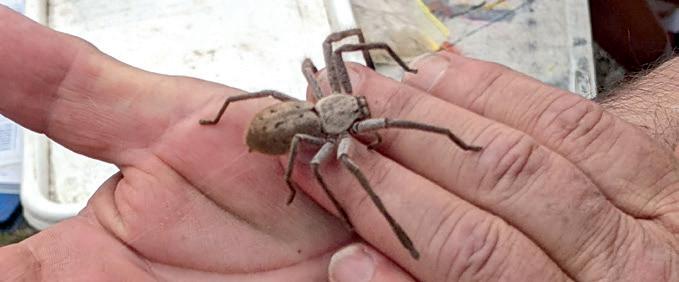

Throughout the day, Garry and Jen Jones played amazing music that set the perfect atmosphere for the picnic. Their live performances ranged from soulful ballads to lively tunes, captivating the audience and adding a special charm to the event. Their music provided a beautiful soundtrack to the day’s activities, creating a joyful and relaxed ambiance that everyone thoroughly enjoyed.
Another highlight was the tour of the Connewarre Wetland Centre (CWC) National Office. Attendees were taken on a journey through the history of the CWC, learning about its origins and the dedicated efforts that transformed it into the remarkable
place it is today. The centre’s exhibits and informative displays offered a glimpse into the tireless work of the conservationists and volunteers who have played a pivotal role in preserving this precious environment. For many, the tour was a source of inspiration and a call to action to support ongoing conservation efforts.
The picnic not only celebrated Australia Day/ World Wetands Day but also underscored the importance of community involvement in environmental conservation. The Connewarre Wetland Complex, as one of Victoria’s natural treasures, relies on the dedication and passion of organizations like Field & Game Australia, as well as
volunteers and local advocates. Events like this bring people together, fostering a shared sense of responsibility for protecting and nurturing the natural world.
As the sun set over the wetlands, attendees departed with full hearts and minds, enriched by the day’s experiences. The Australia Day/World Wetands Day picnic at the Connewarre Wetland Complex was more than just a celebration; it was a testament to the power of community, education, and a collective commitment to conservation. It left a lasting impression on all who attended, reaffirming the importance of preserving these precious ecosystems for generations to come.



It’s not every day that Australian waterfowl take an international journey to contribute to science. But thanks to the dedication of Field & Game Australia (FGA) members, a remarkable project has unfolded—one that links Australian hunting traditions with global conservation efforts. Dr. Andy Engilis, curator of the Museum of Wildlife and Fish Biology (MWFB) at the University of California, Davis, recently shared the incredible story of how Australian ducks and geese made their way into the hands of researchers in the United States.
The project’s origins trace back to mid2023, when Dr. Engilis and Dr. Phil Lavretsky, an esteemed waterfowl biologist, began discussions on expanding their museum’s collection to include Australian waterfowl. The idea was simple but ambitious: collect scientific specimens from Victoria and the Northern Territory with the help of FGA and its members.
In November 2023, the expedition began. Dr. Engilis, along with Dr. Lavretsky and renowned waterfowl enthusiast Ramsay Russell, embarked on a twoweek adventure, first in Victoria at the
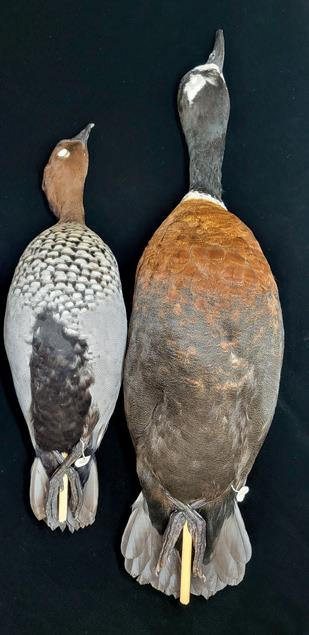
Connewarre Wetland Centre, then up north to Darwin. With the support of FGA members, 90 birds representing multiple species—including the iconic Magpie Goose—were collected, catalogued, measured, and preserved for scientific study.
Gathering the specimens was just the beginning. The next challenge was securing the necessary permits to export the birds to the U.S. The process was anything but straightforward. Layers of bureaucratic red tape threatened to derail the project, but perseverance, teamwork, and the dedication of FGA members kept it moving forward.
With the critical support of FGA’s Conservation and Hunting Manager Glenn Falla and Business Lead Anne-Marie Blewett, as well as collaboration with environmental authorities in Victoria and the Northern Territory, the team successfully obtained the required export documents. However, as delays mounted, it became clear that shipping the birds via standard freight was too risky. The decision was made—someone from the museum would travel to Australia and personally escort the bird's home.
That responsibility fell to MWFB’s Collections Manager, Irene Engilis. In November 2024, she travelled to Australia, where she reunited the Darwin-collected birds with those from Connewarre. Thanks to the generosity of NT FGA President Dan Cox and other members, the specimens had been meticulously stored and preserved.

On November 18, Irene boarded a flight from Melbourne to San Francisco with three eskies of waterfowl specimens in tow. After clearing customs and biosecurity checks, the birds safely arrived at UC Davis—a full year after the project began.
These specimens will now play a vital role in research and education. They will help train the next generation of conservation biologists and provide valuable data on Australia’s unique waterfowl species. More than just a scientific achievement, this effort highlights the invaluable contribution of hunters and conservationists in supporting wildlife research.
Dr. Engilis expressed his deepest gratitude to the FGA members who made this project possible. From providing logistical support to sharing their knowledge and passion for hunting and conservation, their role was instrumental in ensuring the success of this international collaboration.
Beyond the specimens themselves, this project forged strong international connections and reinforced the importance of hunting in conservation. FGA members demonstrated that ethical hunting can play a crucial role in scientific research and wildlife management. The friendships and collaborations built through this effort will undoubtedly continue to benefit conservation efforts on both sides of the Pacific.
As Dr. Engilis aptly put it: “Let’s keep the birds flying.”



2024 will go down in history as a positive season for several reasons, not the least being the Country Liberal Party government election promises fulfilled. A new causeway was built with 2200 tonne of large- and smallscale rock laid on a geo fabric membrane that will allow access to so much more of Beatrice Lagoon area southeast of Harrison Dam. An additional area equaling around 1/5th of the reserve space has been delivered within 100 days of being in government at a cost of around $500,000. How our southern governments could learn from such a positive approach to promoting hunting and making it more accessible to our hunters and interstate hunting tourists.
The season opened at a slow but steady
pace and built in numbers as the geese were slow to arrive in the Darwin region. However, duck numbers were strong from the beginning with plumed whistlers and wandering whistlers prevalent in most areas from the get-go. Some mornings they just kept coming in their thousands for what seemed like hours, waves of birds coming off the flood plains and river systems.
Those who hunted hard and did their homework were able to hunt several geese a day and the hardest working hunters were rewarded with seven, when accompanied by a full brace of ten ducks it was very rewarding.
The shallows offered great decoying this year if you could find a patch of water shallow enough to be confident
there were no big lizards lurking in the shallows. Motion decoys and decoys easily encouraged ducks and geese towards the edges if carefully considered placement was arranged. There’s a lot of thought going into a spread in the NT, when you need to consider croc wise practices and the ability to find downed birds by avoiding heavy cover. Of course, utilizing natural cover to hide, or erecting temporary hides are extra work, but often well worthwhile and the shade provided is welcomed.
Hunters in general did a great job of working with the time limits placed on Harrison Dam whilst the roadworks were being completed and removal of rubbish such as empty shells, packets and drink bottles was reasonable. There’s always room for improvement and we all need

to do our part in this area, when the government is being so supportive and the NT Parks rangers being so great at regulation it’s up to us as hunters to play our part and show how responsible and appreciative we are.
By November the geese numbers were building, and large numbers of Pacific Black Duck were being harvested during the buildup to the wet. December and early January saw the wet arrive and tracks deteriorate to point that access needed careful consideration and long walks. Those who made the effort were of course rewarded with some of the most spectacular hunting of the year.
Another pleasing thing to witness this year was the larger than usual number of young hunters out and about, there’s nothing
like seeing our traditions being handed down to the next generation and securing the future of ethical and sustainable consumptive harvest. After all, there’s very few people who have tried Magpie Geese that don’t agree it is one of Australia’s premium table fares.
To all those locals who had such terrific hunting at their back doors, we southerners are very jealous of the wonders that NT offer and your supportive government. Our annual journey North leads to discussion each year with family members about relocation, such is the attraction. In the meantime, we will have to make do with visitation and consider more than one trip per year to fill the cup.
As always, thanks to NT Field & Game branch for your warm welcome and to the
supporters of the branch who we always try to support while we are in town, from gun shops to butchers and many other local businesses.
And to all those who took part in the hunting, enjoy the rewards of your hard work throughout the coming months by preparing some incredible food and sharing it with friends, family and most importantly people who have never tried game food before. Share your recipes and high-quality images with us to promote it, take the extra time and effort to present your dishes in an exciting and desirable display.
Take care and we will see you again next year on the public reserves that are such wonderful places.
why you should report a band when discovered
Banding is a classic waterfowl research and management tool. Early banding studies provided biologists with a good understanding of the routes, timing, and speed of waterfowl migrations almost a century before technology was available to track birds with satellite transmitters.
Along with aerial surveys of waterfowl banding data remains vital to the management of migratory waterfowl populations, which number in the millions. Banding data to both waterfowlers and biologists are invaluable
The purpose of Banding Inventories is not to acquire complete counts of waterfowl numbers within specific geographic areas but to estimate the number of each species in order to provide an index of temporal changes within and among years and to document the distribution of the species throughout the monitored regions. This gives the scientific data that is invaluable to both habitat and breeding success.
Considering the varied uses of the data and the fluctuating population levels of many waterfowl species, continuation of the monitoring of waterfowl populations at a baseline level is desirable to maintain the consistency and extension of the longterm data set into the future. Monitoring the distribution and relative abundances of waterfowl and waterbirds over time is critical to detect changes in migration corridors and can be used to identify research needs and indicate changes in habitat quality. Future threats to wildlife habitats and ecosystem services provided by rivers, lakes, and wetlands surveyed each year (e.g., climate change modelling, habitat suitability. How Are the Surveys Conducted?
In the North American continent, United States Geological Survey writes, Weekly during autumn, a highly-skilled biologist and pilot use a fixed-wing aircraft to visit wetlands and lakes which historically hold >90% of the waterfowl and other
waterbirds present in the Illinois and central Mississippi river valleys. Along the Illinois River, these sites are located between Hennepin and Grafton, IL and from Grafton to New Boston, IL along the central Mississippi River. Since 1948, only 4 different biologists have conducted the aerial surveys using standardized counting methods. The pilot often makes two passes around each site during each survey. During the first pass, the biologist estimates the number of birds present at each site. On the second pass, the biologist estimates species composition within each site. Sometimes, individual sites hold more than 100,000 waterbirds and multiple passes may be required for the biologist to count birds and assign species composition. Because it is important to enumerate waterbirds by species, the pilot often circles between 200 and 300 feet above ground level, which requires skill and special permission from the Federal Aviation Ad
One very important application of banding data is the annual calculation of waterfowl harvest rates. The North American Bird Banding Program receives over 60,000 band encounter reports from hunters each year, data essential for detecting changes in waterfowl populations and for the development of appropriate hunting regulations. Banding data from bird banders and encounter data from hunters help to improve scientific understanding of waterfowl populations and inform their management. With sustainable harvest of migratory game birds and healthy bird populations, the waterfowl hunting tradition can be enjoyed by many generations to come.
• Data
• Tracking flyways
• Productivity
• Survival
• Harvest model path, male female survival ratio
• Management resource
• Done World wide
• Sex
• Species
• Age
• Wing Length
• Bill
• Head and Bill
• Tarsus
• Blood Samples for Avian Flu
The Victorian Government and its agencies have been considering for some time the potential role of formal population models in decision-making and enhancing public confidence in regulatory performance in setting arrangements for the annual duck hunting season.
A range of publications have been addressing the question how to best go about the development of such harvest models (Ramsey et al. 2010 and 2017), all highlighting that the availability of population dynamic (i.e. recruitment and survival) and movement data would greatly strengthen the predictive power of such models. As Ramsey et al. 2017

put it: “If Adaptive Harvest Model moves to a more structured model of duck population dynamics, additional data will be required for estimating the survival and movement of ducks. We recommend the implementation of studies involving the satellite/GPS telemetry of individual ducks, for estimating age- and sex-specific survival rates as well as movement between each of the bioclimatic zones. These could be supplemented by duckbanding programs. Telemetry/banding programs should be undertaken, ideally, in each bioclimatic zone, or at a minimum in zones with contrasting bioclimatic conditions.”
However, it is widely acknowledged that the development and maintenance of long-term catching and banding programs to support survival and recruitment analyses are extremely costly and cannot reasonably be run without substantial support from volunteers.
A range of diseases in wildlife are of concern because of their potential spillover into livestock and humans. Pathogenic viruses of se notably concern include Avian Influenza Viruses, Avian Paramyxoviruses and (only recently) also Japanese Encephalitis Virus. Ducks form an important and likely prime reservoir for these viruses and therefore form an important target group for disease monitoring by the National Avian Influenza Wild Bird Surveillance program (https://wildlifehealthaustralia.com.au/ ProgramsProjects/WildBirdSurveillance.aspx).
In recent years, in collaboration with Prof. Marcel Klaassen from Deakin University we have been studying the possibilities and gaining experience in setting up a framework to do long-term population and wildlife disease monitoring involving capturing and banding ducks at a constant-effort site near Geelong and further sites throughout the state using a nestbox program. However, we require
additional funding to develop this project to its full potential and start contributing to collecting essential data allowing more powerful population dynamic analyses of ducks to assist and assist with the increasingly important collection of wildlife disease data.
So, if you retrieve a dead bird be it a harvested duck or goose, roadkill or a bird that has collected a power line, please contact us, let us know you will be doing a great service not only to hunting but to wildlife conservation as well. We would be only too happy at Field & Game Australia to assist you in reporting the band details to the Australian Bird Banding System in Canberra. Collecting the vital data that makes this program so fascinating and interesting will also contribute to the significant studies required to support sustainability of the resource into the future.


Wetlands Environmental Taskforce (WET) recognize the pressing challenges facing our environment today. That’s why we are proud to introduce our Containers for Conservation program—a grassroots initiative designed to transform everyday recycling into meaningful action for preserving vital wetland habitats.
Containers for Conservation encourages positive community engagement through recycling. Volunteers are provided with WET branded wheelie bins to place at worksites, clubs, and other community gathering spots. Once these bins are full, they are taken to a recycling centre where the Container Deposit Scheme (CDS) kicks in, refunding 10 cents for each eligible returned container. What makes this initiative truly remarkable is that all proceeds go directly back to WET, funding essential conservation projects and protecting game bird nesting habitats.
CDS Vic is part of the Victorian Government's $515 million investment to transform the state's waste and recycling sector. Funded by contributions from the beverage industry, the scheme will contribute to Victoria's target of diverting 80% of all material away from landfill by 2030.
This simple yet effective approach allows anyone to contribute to environmental efforts without requiring extensive time or resources. By recycling, participants are not only cleaning up their local environment but also financially supporting critical conservation work.
The Victorian Container Deposit Scheme & Wetlands Environmental Taskforce:
Field & Game Australia has partnered with WET to enhance the impact of the
Victorian Container Deposit Scheme. This program incentivizes recycling by allowing participants to return eligible beverage containers at various collection points throughout the state, receiving a refund for each returned item. But the CDS offers something unique: the option for participants to donate their refunds to the Wetlands Environmental Taskforce Trust.
The scheme was introduced with the goal of reducing litter and promoting resource recovery. With this dual benefit, individuals can not only recycle but also support environmental initiatives. This encourages a culture of generosity while fostering a sense of community responsibility towards preserving our natural resources.
When participants choose to donate their container refunds to the Wetlands Environmental Taskforce Trust, they contribute to crucial efforts aimed at restoring and preserving wetland habitats. Victorians use more than 3 billion drink containers every year. Sadly, many are not recycled, ending up in landfill and as litter in local communities across our state. The funds generated through the CDS allow WET to continue its mission of habitat restoration, ensuring the long-term health and resilience of these precious environments for future generations.
In Victoria, three Zone Operators—Visy (North Zone), TOMRA Cleanaway (West Zone), and Return-It (East Zone)

facilitate the Container Deposit Scheme. To find a collection point near you, simply visit CDS Vic Locations.
Getting involved is easy! Participants can locate Wetlands Environmental Taskforce Trust at their local refund points or use the trust’s Donation Partner ID number, C2000010199, when donating. Each Zone Operator offers a dedicated app—CDS Vic North, CDS Vic East, and CDS Vic West—to streamline the donation process. Users can easily set up an account, select ‘Donations,’ and search for the Wetlands Environmental Taskforce Trust to ensure their refunds directly benefit our wetland conservation efforts.
Please note, Legitimate Zone Operator Apps will never ask for your credit card details and can be found on the official CDW website at cdsvic.org.au/refund-point-types
As individuals, FGA branches, community groups or households, we can all play a part in making a positive impact on our environment. By participating in the Containers for Conservation initiative and the Victorian Container Deposit Scheme, we not only reduce waste but also support essential conservation work.
To learn more about the exciting projects undertaken by the Wetlands Environmental Taskforce, visit WET Projects. Together, we can ensure that our wetlands survive and thrive for generations to come.

For more information about the Container Deposit Scheme and how you can get involved, check out CDS Vic. Let’s turn our recycling efforts into a powerful tool for conservation!

Not all hunters would call themselves artists, but many—at some point in their journey—find themselves drawn to the allure of well-made, handcrafted tools. There’s something about quality gear that resonates deeply with those who spend their time immersed in nature. Whether it’s the perfect balance of a knife in your hand, the grain of timber polished smooth over hours of labor, or the satisfying sound of a call that does exactly what it’s supposed to do—there’s an artistry in tools that are made to last.
This appreciation for fine craftsmanship often leads hunters down a familiar path: the realization that, instead of settling for mass-produced items, they could create something better themselves. It’s a sentiment that resonates with the story of Hunting Spirit, hunters and craftsmen who followed that same road. Nick & Toby are keen young hunters of deer and duck and are deeply entrenched in predator control in the Gippsland region.
Dissatisfied with the tools they had, they set out to make their own—functional, durable, and beautiful. Tools that feel like they belong in the hands of someone who values their craft, their traditions, and the stories that hunting weaves into a life.
Made from Australian timber and designed to last a lifetime, Hunting Spirit’s creations
reflect this spirit of connection—to the craft, to the hunt, and to the land. They aren’t about cutting corners or finding the cheapest way to get the job done. They’re about making tools that hunters can rely on and take pride in, year after year.
Celebrating the Tools of the Trade
Take, for example, the Humane Dispatch "Priest". For those who understand the importance of ethical hunting practices, this tool is indispensable. Its design ensures a quick, humane dispatch of downed birds, but it’s more than just a practical item—it’s a piece of craftsmanship, compact and refined, easy to carry yet strikingly beautiful.
Or consider the Handcrafted Fox Call, a simple but essential piece for predator hunters. The sound it produces is unique and enticing—irresistible to foxes. It’s the kind of tool that feels as at home in your hands as it does in your kit, a blend of function and artistry that transforms a simple hunt into an experience.

Environmental Taskforce (WET), directly funding wetland conservation efforts. It’s a way of giving back to the landscapes that make hunting possible—a reminder that hunters and makers alike are stewards of the natural world.
These handcrafted tools are available now through the Field & Game Australia Shop, ready to become a treasured part of your hunting kit.
Hunting has always been about more than just the pursuit. It’s about respect—for the land, for the animals, and for the tools that connect us to both. Hunting Spirit captures this respect in every piece they create, celebrating the artistry and purpose that lie at the heart of the hunt.


As duck season approaches each year, many of us look forward to mornings spent by the wetlands, the companionship of like-minded hunters, and the satisfaction of honouring a cultural tradition that stretches back generations. Yet, for many elderly hunters, these moments are becoming increasingly fraught with challenges that threaten their ability to continue participating in this deeply rooted Australian pastime.
The plight of our aging duck hunters reflects a broader issue in how we, as a community and a society, treat those who have spent decades contributing to conservation, hunting culture, and the sustainable management of our wetlands. These hunters are the custodians of vast experience and knowledge, yet they now face unprecedented obstacles. It’s time for all hunters to rally behind them, ensuring their voices are heard and their place in our community remains secure.
Many of our older hunters began their journey in a very different era, with rules and regulations that have evolved significantly over the decades. From licensing requirements to bag limits and hunting zones, the modern landscape can
be overwhelming for those accustomed to simpler systems. While these changes often reflect necessary adjustments to environmental conditions and societal expectations, they are not accompanied by sufficient support to help aging hunters adapt.
For those who grew up learning skills passed down informally from parents or mentors, adapting to online training courses, digital game licensing, and increasingly complex regulations is no small feat. The reality is that not all elderly hunters are tech-savvy or have easy access to the internet, leaving them feeling sidelined in a pursuit that has defined much of their lives.
Government organizations like the Game Management Authority (GMA) have
consistently failed to account for the unique needs of elderly hunters. Instead of offering tailored solutions, their approach has been dismissive and out of touch. Statements like “hunters will need to adapt or resign from hunting” send a clear and alienating message. It implies that those unable to navigate new systems or adopt modern methods are simply not “committed” enough. Such rhetoric not only disrespects the decades of dedication shown by these hunters but also undermines the inclusivity of the broader hunting community.
These are individuals who have witnessed the transformation of our wetlands, the ebb and flow of duck populations, and the evolution of conservation policies. Their insight could be invaluable to modern game management if only it were sought and respected. Instead, they are often treated as liabilities or relics of the past, rather than


as elders whose wisdom could enhance the future of sustainable hunting.
For many elderly hunters, the financial burden of hunting has become increasingly untenable. The cost of living continues to rise, and the expenses associated with hunting—including gear, licenses, ammunition, and travel—can be prohibitive. For those on fixed incomes, replacing worn-out or outdated equipment is often out of reach.
Adding to this strain is the perception of diminishing returns. With stricter regulations and reduced access to certain hunting areas, many hunters report fewer opportunities and smaller harvests, making the effort and cost feel less worthwhile. These challenges are compounded for older hunters, who may also face physical limitations that make hunting more demanding than it once was.
Perhaps the most painful challenge of all is the sense that the culture they hold dear is being eroded. Hunting is not just about the harvest; it is about connection— to the land, to family, and to a way of life. Many elderly hunters have devoted their lives to this culture, mentoring younger generations and advocating for


conservation. Yet, they now see their traditions marginalized, their practices misunderstood, and their community increasingly divided by external pressures and internal debates.
The steady erosion of hunting culture leaves many older hunters feeling disheartened and disconnected. For them, hunting was never just a sport or a hobby—it was a way of being. Seeing it diminished, or being told they no longer belong in the community, is a deeply personal blow.
As a hunting community, we owe it to our elderly states people to ensure they remain active participants and valued contributors for as long as possible. There are several steps we can take to achieve this:
1. Advocate for Inclusive Policies: Push organizations like the GMA to recognize the unique challenges faced by elderly hunters and to create policies that accommodate them, such as alternative licensing processes or offline training options.
2. Mentorship Opportunities: Encourage older hunters to continue mentoring younger generations. Their experience and wisdom are invaluable, and mentorship programs can bridge the gap between tradition and modern practices.
3. Financial Assistance: Explore ways to reduce the financial burden on elderly
hunters, whether through subsidies, equipment donation programs, or community fundraising efforts.
4. Cultural Preservation: Celebrate the traditions and stories of our elder hunters through events, publications, and recognition initiatives. Their contributions to hunting culture should be acknowledged and honoured.
5. Community Support: Reach out to the older hunters in your network. Offer to assist with licensing or training requirements, invite them to hunts, and ensure they feel welcomed and valued in the community.
Our elderly hunters are not just participants in a pastime; they are the living embodiment of a culture that values conservation, resilience, and a deep connection to the natural world. Their presence enriches our community and reminds us of the traditions that form the foundation of hunting in Australia.
As younger hunters, we must stand by them, advocating for their needs, celebrating their contributions, and ensuring their legacy endures. The strength of our community lies in its inclusivity and respect for all its members. Let’s ensure that the voices of our elder states people are not just heard but cherished. Together, we can ensure that their experience, wisdom, and love for hunting continue to inspire generations to come.
Agood gundog is more than just a hunting companion—they’re a partner, a tool, and often a beloved member of the family. But choosing the right dog for your needs involves more than picking the cutest pup in the litter. The wrong choice can lead to frustration for both you and the dog. To help you make the best decision, here’s a comprehensive guide to selecting, raising, and caring for your ideal gundog.
Your hunting environment and target game play a significant role in deciding which breed to choose.
• Cold Wetlands: If you’re primarily hunting ducks in cold, wet conditions, a retriever like a Labrador or Chesapeake Bay Retriever is a great choice. Their water-resistant coats and love of swimming make them perfect for retrieving in icy waters.
• Hot Stubble Paddocks: For hunting quail or rabbits in warm, dry environments, breeds like Pointers, Setters, or Springer Spaniels excel. Their endurance and agility suit open, hot terrain.
• Frequent Hunters: If you hunt often, you’ll want a dog with high drive and stamina to keep up with your outings. Breeds like German Shorthaired Pointers or Labradors are built for frequent use.
• Occasional Hunters: If you only hunt a few times a year, consider a more versatile and laid-back breed like a Golden Retriever or a Spaniel. They’ll enjoy the hunt but won’t become bored or destructive during downtime.
• If the dog will also be a family pet, breeds with friendly, adaptable temperaments— such as Labradors or Golden Retrievers— are ideal.
• For a “one-man dog” focused solely on the hunter, breeds like Vizslas or German Wirehaired Pointers are better suited.
• Activity Level: Some breeds need daily stimulation and exercise, while others are content with moderate activity. Be honest about your ability to meet their needs.
Once you’ve considered your hunting style and lifestyle, it’s time to choose a breed.
Popular Gundog Breeds:
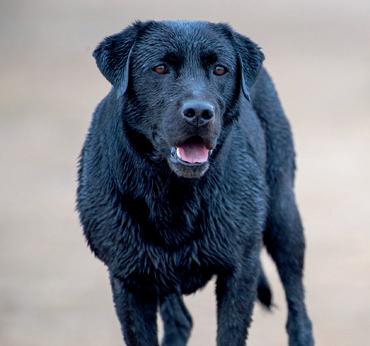


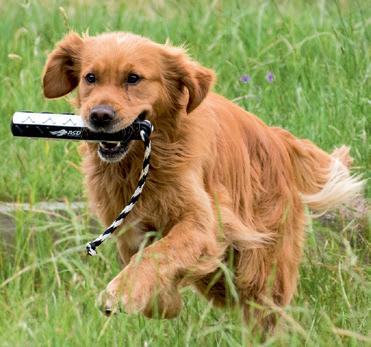




Attend field trials or meet local gundog owners to see breeds in action. Talk to hunters about their experiences and get advice specific to your region or game type.
• Look for breeders with experience in gundogs, not just show dogs.
• Ask for references and check their reputation within the hunting community.
• Ensure the breeder conducts health tests for common issues like hip dysplasia, eye conditions, or genetic disorders specific to the breed.
• Field vs. Show Lines: Field lines prioritize hunting ability, stamina, and temperament, while show lines focus on physical appearance. Opt for fieldbred dogs for hunting.
• Parent Performance: Meet the pup’s parents, if possible, and observe their temperament, drive, and working ability. Good parents often produce good pups.
When selecting a pup from a litter, consider:
• Drive and Temperament
• High Drive: Great for frequent hunters but can be challenging for inexperienced owners.
• Relaxed Temperament: Easier to manage, better for occasional hunting or family environments.
• Watch how the pups interact with each other. A confident but not overly dominant pup is often a good choice.
• Look for bright eyes, a clean coat, and an active, curious demeanour.
• Avoid pups that seem lethargic or shy—they may have underlying health or temperament issues.
• Pick for Your Needs, Not Your Heart
• It’s easy to fall for the cutest or friendliest pup, but remember your goals. Choose a pup that aligns with your hunting and lifestyle needs.
Puppies require a high-quality, balanced diet to support growth and development. Feed them puppy-specific food until they reach around 12-18 months, depending on the breed.
For active hunting dogs, choose a diet high in protein and fat to sustain energy levels.
Dogs that are less active outside hunting season may need reduced-calorie food to prevent weight gain.
Avoid feeding right before or after intense exercise or hunting to prevent bloat, a potentially fatal condition.
Feed twice a day, morning and evening, and always ensure fresh water is available.
• Training: Start basic obedience early and gradually introduce huntingspecific training.
• Socialisation: Expose your dog to various environments, people, and animals to build confidence and prevent behavioural issues.
• Patience: Every dog learns at its own pace. Stay consistent and positive during training.
A well-chosen and properly trained gundog is a joy to work with and a credit to any hunter. By carefully considering your needs, the dog’s potential role, and the right breed and breeder, you’ll set yourself up for years of successful and rewarding hunts.
“A gundog isn’t just a tool; they’re a teammate. Choose wisely, train well, and you’ll have a hunting partner for life.”
The build up to this trip had me so excited, I was having trouble sleeping. We had booked our flights, organized our licenses, and we were going. The day took forever to come.
The day finally arrived, and we were off. Straight to Melbourne airport with a couple of Dads mates, bound for Darwin. We met most of our hunting crew at Melbourne Airport
Dad and I were part of a group of approximately 15 southern hunters heading into the Northern Territory in November 2024. One of the most exciting things was the fact that there were two other juniors, Rome and Hunter, who were also coming on the trip. All in all, we had two father and sons, a grandfather and grandson, and a couple of brothers, a father and son that are way past junior and an uncle and nephew. Being part of this as a junior and see the other families that hunt together staying together through a common bond was quite special. It’s a shared interest whereby we share experiences together, gather together and enjoy our heritage.
Rome, Hunter and I experienced so many firsts, first Magpie Goose, first NT ducks, first crocodile sightings and first wild buffalo sightings on the reserves, and the first-time hunting within the mango farms.
Whilst us juniors are not new to firearms, not new to hunting (in the south), being outdoors, or being a part of hunting groups, we had not experienced the tropics before. The hot and humid conditions and acclimatization were the first things we had to deal with. We made sure that we were always hydrated, but boy it could get hot. We hunted early morning and late evening to escape the heat of the day. During the day we sometimes went into Darwin for a look around, visit the local hunting store (more than once), and go out for lunch with our friends.

One of the challenges I had was how much lead to give these geese. I was lucky enough to have experienced hunters who have hunted many times in the NT teach me on this. The geese are big birds with a slow wing beat. Certainly, a lot different to duck hunting in the south, or shooting clay targets at speed. Shot placement and distance estimation was critical. I just listened, learned, acted upon the advice, and absorbed all the information I could along with my junior mates. I remember a Magpie Goose coming in over the top of us, Dads mate who I was hunting with said “give em 4 goose lengths”. Pop, with one shot, folded nicely, landing on the grass beside the swamp. I went and picked it up, and it

had the biggest head on a goose you will see. Dad had organized export and import permits to get birds back to Victoria for taxidermy. My goose is in the freezer, awaiting taxidermy and will stand proud in my bedroom alongside my Black Duck, and my first ever male Chestnut teal.
Whilst I hunted with Dad, Rome hunted with his Dad, and Hunter hunted with

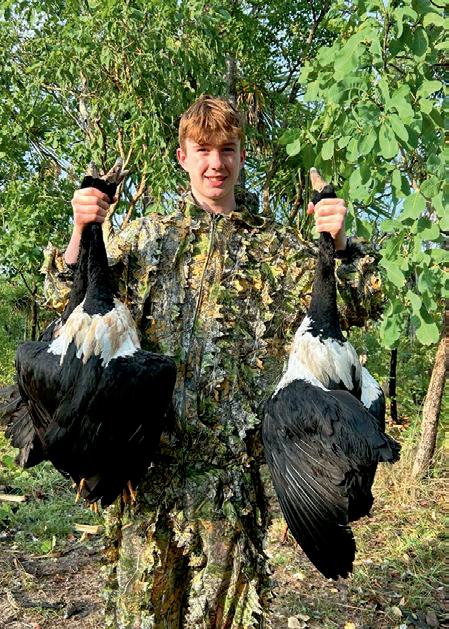





his grandfather, we also had many opportunity’s offered to us, to hunt one on one with all the adults in the crew and learn while further developing relationships with other adult mates and experienced hunters. I have met these people through Dad and spent time in the field and around camp together previously.
The adults of course were very accommodating, happy to share time in the blind with us young ones. This group of adults are vitally aware of investing in the future of gamebird hunting through taking a junior hunting or introducing a new hunter, junior or adult every number counts.
It was so rewarding to have this assistance to fine tune our skills in the NT and we can’t thank the adults enough for this. Smiles, laughter, reflections and high fives were enough to fill the cup of any established hunter on this trip.
Whilst going on the hunts together was a highlight, we also helped the adults where we could, which is all part of the trip, experience and learning. We helped doing our share of setting up, packing up, cleaning and processing meat, servicing/cleaning firearms, doing the dishes, and of course, having a sleep in the afternoon just like the adults did. We were prepared to dive straight in and help with anything we could.
Sitting back and listening to some of the conversations over a week of hunting, living, travelling and socializing together

was truly astounding. The adults included us in their conversation, of course the sense of humor, the witty and dry way that these guys get into each other was quite funny.
On the Sunday before we departed, most of us went to NT Field & Game to shoot clay targets. It was great to see a ground in the tropics, and we were made very welcome by the NT FGA crew. We had a great day, won some prizes, and met

some new people.
I can’t thank the whole crew enough for an absolutely amazing trip. We are looking forward to the next trip away together.
If you have the opportunity to take a junior hunting, do it. I can tell you from my experiences, albeit still very young, hunting, clay target shooting, camping, fishing and being around great likeminded people in the outdoors is truly special.

This series explores the often-overlooked consequences of ideological interference—particularly vegan ideology—on wildlife, wetlands, and conservation efforts. While plant-based lifestyles are frequently promoted as ethical and environmentally friendly, the reality is far more complex. The agricultural practices required to sustain vegan food choices, combined with emotion-driven policies and political agendas, are wreaking havoc on ecosystems and killing countless animals, especially ducks.
Each instalment in this series dives into a specific aspect of this issue, revealing how misguided ideology and poor management are failing ducks, damaging habitats, and undermining decades of conservation work. From the destruction of wetlands to the misuse of environmental water, and even the ideological mismanagement of wildlife populations, we’ll expose the hidden costs and offer science-based solutions that truly support Australia’s waterfowl and ecosystems.
At its core, this series advocates for practical, balanced conservation led by farmers, hunters, and ecologists—people on the ground who understand the realities of preserving biodiversity. Ducks, wetlands, and wildlife deserve better than slogans and emotion; they deserve informed action that protects their future.
When someone claims they’re vegan “for the environment” or to “save animals,” it might sound noble. But peel back the layers of this so-called ethical choice, and you’ll uncover a shocking truth: the agricultural practices needed to sustain plantbased diets are devastating Australia’s ecosystems—particularly for ducks. While vegans often vilify hunters for harvesting a small, regulated portion of duck populations each year, the food choices driven by their ideology kill far more waterfowl. And these deaths? Indiscriminate, unnecessary, and on an industrial scale.
It’s time to expose the hidden cost of “green” food choices and shed light on how veganism is devastating wetlands, killing wildlife, and leaving farmers and hunters to deal with the fallout.
Plant-based diets rely heavily on monoculture farming—vast fields of crops like soy, wheat, and rice. These crops might seem harmless, but their production comes with a steep environmental price that vegan advocates rarely acknowledge.
1. Wetland Destruction: Evicting Ducks from Their Homes
Wetlands are vital for ducks, serving as breeding, nesting, and feeding grounds. But according to the Ramsar Convention on Wetlands, Australia has already lost more than 50% of its wetlands, largely due to agricultural expansion.
The demand for crops like soy and rice—staples of plant-based diets—has driven the draining of these wetlands, robbing ducks and other wildlife of their habitats. Once wetlands are converted into monoculture fields, they lose the biodiversity that makes them valuable ecosystems. The destruction is often permanent unless costly restoration projects are undertaken, efforts frequently led by hunters and conservation groups rather than vegans.
2. The Machinery of Death: Farming’s Hidden Toll
While hunters are criticized for harvesting ducks intentionally and sustainably, the farming practices required to meet vegan demand kill far more wildlife— indiscriminately. During dry periods, when wetlands are depleted, ducks flock to rice and wheat fields to forage. But in doing so, they’re exposed to the blades of harvesters.
A study published in Agriculture, Ecosystems & Environment reveals that millions of animals, including ducks, die each year in harvesting operations. These
deaths are not intentional or regulated but a byproduct of the industrialized farming systems needed to sustain plantbased diets.
Monoculture farming depends on pesticides, herbicides, and fertilizers to maximize yields. According to the United Nations Environment Programme (UNEP), these chemicals leach into waterways, killing aquatic vegetation, contaminating food sources, and poisoning ducks and other wildlife.
The result is a slow, painful death for countless ducks each year. Worse still, these chemicals disrupt entire ecosystems, creating cascading effects that can take decades to repair. Every plant-based meal may come at the cost of contaminated water and poisoned wetlands—hardly the cruelty-free ideal vegans promote.
4. Water Diversion: Leaving Wetlands Dry
Rice and soy are notoriously waterintensive crops. The Food and Agriculture Organization (FAO) highlights how irrigation farming diverts water from rivers and wetlands, depriving critical habitats of the resources they need to thrive.
Wetlands that dry out lose their ability to support wildlife, leaving ducks with nowhere to go to move on and find alternate water provided they are not moulting at the time and unable to fly. While hunters are working to restore and protect these areas, monoculture farming continues to destroy them at alarming rates.
Farmers often bear the brunt of criticism for environmental damage, but they are
victims of consumer demand, not the villains. Vegan ideology places enormous pressure on farmers to produce plant-based foods cheaply, efficiently, and at scale—all while holding them responsible for environmental outcomes.
The reality is that farmers are forced to clear land, drain wetlands, and rely on chemicals just to stay afloat in a system that prioritizes low costs over sustainability.
By contrast, many livestock farmers actively conserve wetlands on their properties. Grazing systems can coexist with biodiversity, providing habitat for ducks while producing food sustainably. These farmers are the unsung heroes of conservation, working to balance food production with environmental stewardship.
Hunters are often vilified by vegan activists, but they are among the strongest advocates for conservation.

Unlike the incidental and unregulated wildlife deaths caused by industrial farming, hunting is intentional, sustainable, and based on scientific management.
Each year, hunters contribute millions of dollars to conservation efforts, funding wetland restoration, predator control, and habitat protection. They are the ones preserving the ecosystems that ducks rely on, ensuring their survival for future generations.
Hunting takes only what is sustainable, guided by regulations and data. Compare that to the unchecked destruction caused by
monoculture farming, and the hypocrisy of vegan ideology becomes glaringly obvious.
Veganism markets itself as ethical and sustainable, but its reliance on monoculture farming is a leading driver of biodiversity loss. According to the Intergovernmental Science-Policy Platform on Biodiversity and Ecosystem Services (IPBES), this type of agriculture is one of the greatest threats to global ecosystems.
Every soy latte or bowl of rice comes at the cost of countless animal lives—not
just ducks but frogs, fish, and other wildlife caught in the machinery of industrial farming. Far from being cruelty-free, veganism is responsible for the deaths of millions of animals each year.
If we truly care about ducks and their habitats, we must move beyond ideological slogans and embrace sciencebased conservation. This includes:
• Supporting Livestock Farming: Grazing systems that coexist with

wetlands are far more sustainable than monoculture cropping. Riparian and natural ephemeral wetland offsets that are supported and encouraged by government, replacing grain production in small and select sections.
• Promoting Regulated Hunting: Hunters fund critical conservation projects and manage wildlife populations responsibly.
• Restoring Wetlands: Efforts should focus on rebuilding ecosystems, not destroying them for short-term agricultural gains.
Eating sustainably harvested ducks as part of a balanced, conservation-driven approach can actually help protect their habitats. By choosing meat from systems that coexist with wetlands, you’re directly supporting the ecosystems that ducks— and countless other species—rely on.
The vegan ideology, with its dependence on monoculture farming, is killing ducks by the millions. It’s destroying wetlands, poisoning ecosystems, and leaving
farmers and hunters to pick up the pieces.
If you care about ducks, the environment, or truly ethical food production, the solution isn’t veganism. It’s supporting sustainable practices—like grazing livestock and regulated hunting—that prioritize the health of ecosystems over ideological purity.
The most compassionate choice isn’t avoiding ducks on your plate—it’s ensuring they have thriving habitats for generations to come. So, if you truly love ducks, eating them—responsibly—is one of the best ways to ensure their survival.
by Michael Kruger-Davis

Competitive shooters spend a large amount of time practising and training in an effort to hone their technique so that it pays off in competitions. This hard work is vital if you want to improve the four pillars of necessary skills: physical, technical, competition and mental skills. Hard work is necessary if we want to achieve a new standard in our sport or life, but if hard work were enough, most of us would be at the top all the time, but we know this isn’t always the case.
What gets in the way of being able to transfer the necessary physical, technical, mental and competition skills from the practise traps to the competition course?
The answer is that as humans we often over-think what we are doing, how we are doing it, what the results will be. Overthinking also takes us away from the here and now, moving us away from the present to the scary future or the past full of failures. Shooting, like golf, bowls, darts, archery and other sports all require motor or muscle movements. These motor processors start from the right side of the brain. But our analytical, language orientated side of the brain, the left side, always wants to take over and give us instructions on how to shoot better. All this does is increase self-doubt, which then makes our muscles move less fluidly.
Joe Weber, from MINDSPORT, www. mindsportonline.com. Explains what happens when we overthink things.
While in school, did you ever study hours for a test and feel completely confident that you knew the material? Then, as you started filling in the answers, you got to that ONE question… You knew the answer… You remembered reviewing the information… It was on the tip of your tongue but you just couldn’t seem to recall the information. You attempted to think harder but to no avail. As soon as you left the room, the answer came flooding to the forefront of your mind. Basically, you knew the information but that over-thinking interfered with its retrieval. Over-thinking creates a narrow internal focus which initiates the stress response and interrupts performance.
When shooters over-think about their sport, it promotes self-doubt and when we doubt our own ability, our muscles freeze up and we can no longer move freely. More often than not, self-doubt will make us miss the target. The problem with shooting is that we can overthink things when we are about to shoot, in the time between shots, in the clubhouse or car park or when we are away from the competition.
Take a deep breath – Deep breathing is the quickest and easiest way for a person to relax, lessening the stress response. On the field we can focus on:
1. Routine – Pre-shot, actual shot and post-shot routines are important. These routines set us up each time we address the trap to shoot the target: stance, gun mount, hold position, sight position, kill position.
2. Cues – Identify 2-3 cue words to remind yourself of the technique you have been practicing. The mind cannot tell the difference between what is real or imagined. These cues can be verbal, eg. “Trust and let go”, or they can be visual eg. watching yourself shoot the target (especially good for skeet or sporting where the targets are known). If you use these cues to ‘trick’ the mind you have already shot the target then you can go ahead and call pull, shoot it without thinking about it.
3. Practice the way you want to play – The key to staying relaxed is to use these techniques in practice, make these techniques a habit. The desired mindset

you want on the layout during the round should be the same mindset you target in every practice target. Remember, no success happens by accident, but only perfect practice makes perfect.
4. Make sure that during the round you do not change your focus from ‘shooting to break the target’ to ‘shooting not to miss the target’. When this change happens there will be an upsetting of your rhythm and consistency. This often happens when you are shooting well and you try to protect a score you haven’t got.
5. Finally stay focused in the here and now. If you think of the future, you will be focused on the outcome (your score, the prize money, trophy) and this will develop anxiety and fear. If you focus on the past, you will evaluate your self-worth based on past failures and poor performances. If you stay in the present, you will focus on the process of actually shooting the targets, one at a time, over and over again.
6. Focus on enjoying the shooting and having fun.
If we could go out on the station and not think about what we are doing, how we are doing it, what the score will be, am I good enough, and so on, then we would just shoot the target and the sport would seem too easy. But as humans this is hard. the next time you are training, practising or competing try to not think about anything: just shoot the target!
References: Effects of overthinking in sports. J. Weber (undated). www.exactsports.com
by Michael Kruger-Davis
There are a lot of social, physical and psychological benefits to shooting, but what are the psychological benefits to volunteering and helping out at your local club.
All social and competitive sporting clubs: gun clubs, pony clubs, rural fire brigades, junior soccer, book clubs, even the Sydney Olympics relied on volunteers. These people are prepared to put in time and effort into making the experience enjoyable for the rest of us.
Most of us are time poor and with a greater emphasis on individual achievement volunteering is often overlooked as having any impact on our psychological well-being.
Are there any psychological benefits to volunteering?
I was sure that benefits of volunteering do exist and a quick search of the net took me to a Western Australian blog, Mindstate Psychology, which look at the psychological benefits of volunteering.
The blog introduced volunteering as “Beyond the act of giving back to our communities, volunteering offers a myriad of benefits for our mental health. Engaging in selfless acts, connecting with others, and contributing to a greater cause can bring about a sense of purpose, fulfilment, and overall happiness.
Numerous studies have shown a positive correlation between volunteering and happiness. Engaging in acts of kindness and generosity releases endorphins in the brain, which contribute to feelings of joy and contentment. By helping others, volunteers experience a sense of purpose and fulfilment that can boost their overall life satisfaction. Furthermore, witnessing the positive impact they have on individuals and communities fosters a greater sense of self-worth and gratitude, promoting a more positive outlook on life.

Volunteering has been linked to reduced stress levels and improved mental health. When individuals focus their attention on helping others, they often experience a shift in perspective. By temporarily stepping away from personal worries and redirecting their energy towards the needs of others, volunteers find respite from their own stressors. The act of volunteering can also provide a sense of structure, routine, and social support, all of which are crucial factors in maintaining good mental well-being.
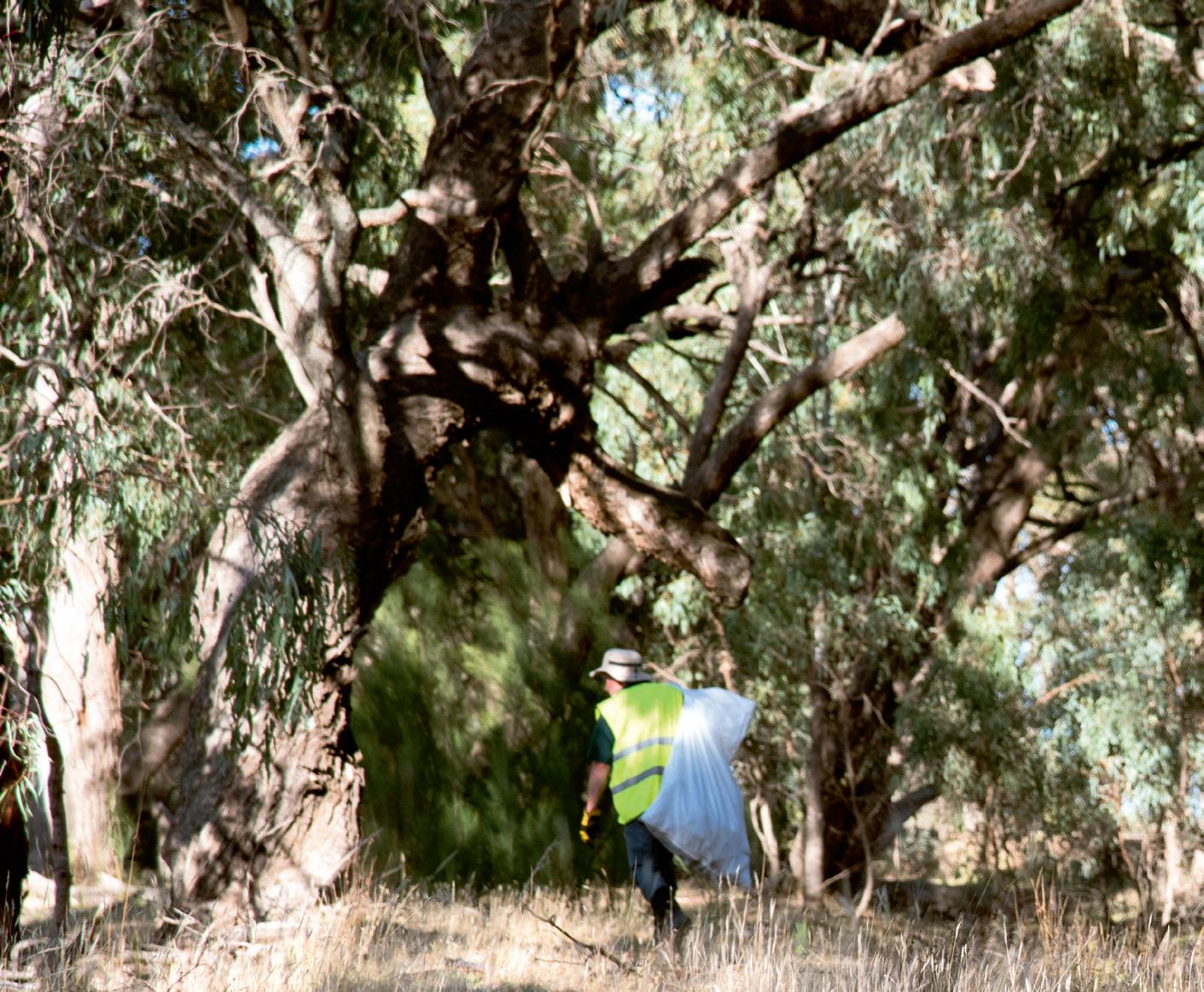



Volunteering creates opportunities for meaningful social connections, which play a vital role in our psychological and emotional health. As human beings, we thrive on social interaction and a sense of belonging. This can be seen at any gun club: people who probably wouldn’t socialise together are bought together by a bond on shared experience. Volunteers forge new relationships, expand their social networks, and build a sense of community. Connecting with like-minded individuals who share a passion for a specific cause can lead to lasting friendships and a support system that extends beyond the volunteer experience.
Volunteering provides a platform for individuals to develop and showcase their skills, talents, and strengths. As volunteers contribute their time and expertise to a cause they care about, they often discover hidden capabilities and talents they might not have recognised before. Accomplishing tasks, solving problems, and positively impacting the lives of others can significantly enhance self-esteem and self-confidence. Volunteers gain a sense of achievement, validating their worth and igniting a belief in their ability to make a difference.
One of the most profound psychological benefits of volunteering is finding meaning and purpose in life. Engaging in altruistic acts taps into the fundamental human desire to contribute to something larger than ourselves. By dedicating time and effort to a cause, volunteers experience a deeper sense of meaning in their lives. The knowledge that they are actively working to address social issues and make a positive change provides a strong sense of purpose, increasing overall life satisfaction and well-being.
In conclusion the blog states, “Volunteering offers a range of psychological benefits that can significantly enhance our wellbeing. From increased happiness and life satisfaction to reduced stress levels and improved mental health, the act of giving back has a transformative impact on volunteers and the communities they serve. By nurturing social connections, boosting self-esteem, and providing a sense of
meaning and purpose, volunteering becomes a powerful tool for personal growth and psychological fulfilment.”
What is interesting about these benefits of volunteering, is that they are the same psychological benefits we get as individuals by shooting and participating in sport, in general. Volunteers are the life-blood of the sport, lets lend-a-hand so
that we can continue to shoot.
References: https://www. mindstatepsychology.com.au/blog/thepsychological-benefits-of-volunteering
Michael Kruger-Davis is a consulting psychologist and any questions regarding psychological aspects of sport and shooting can be addressed to him at mjkrugerdavis@gmail.com
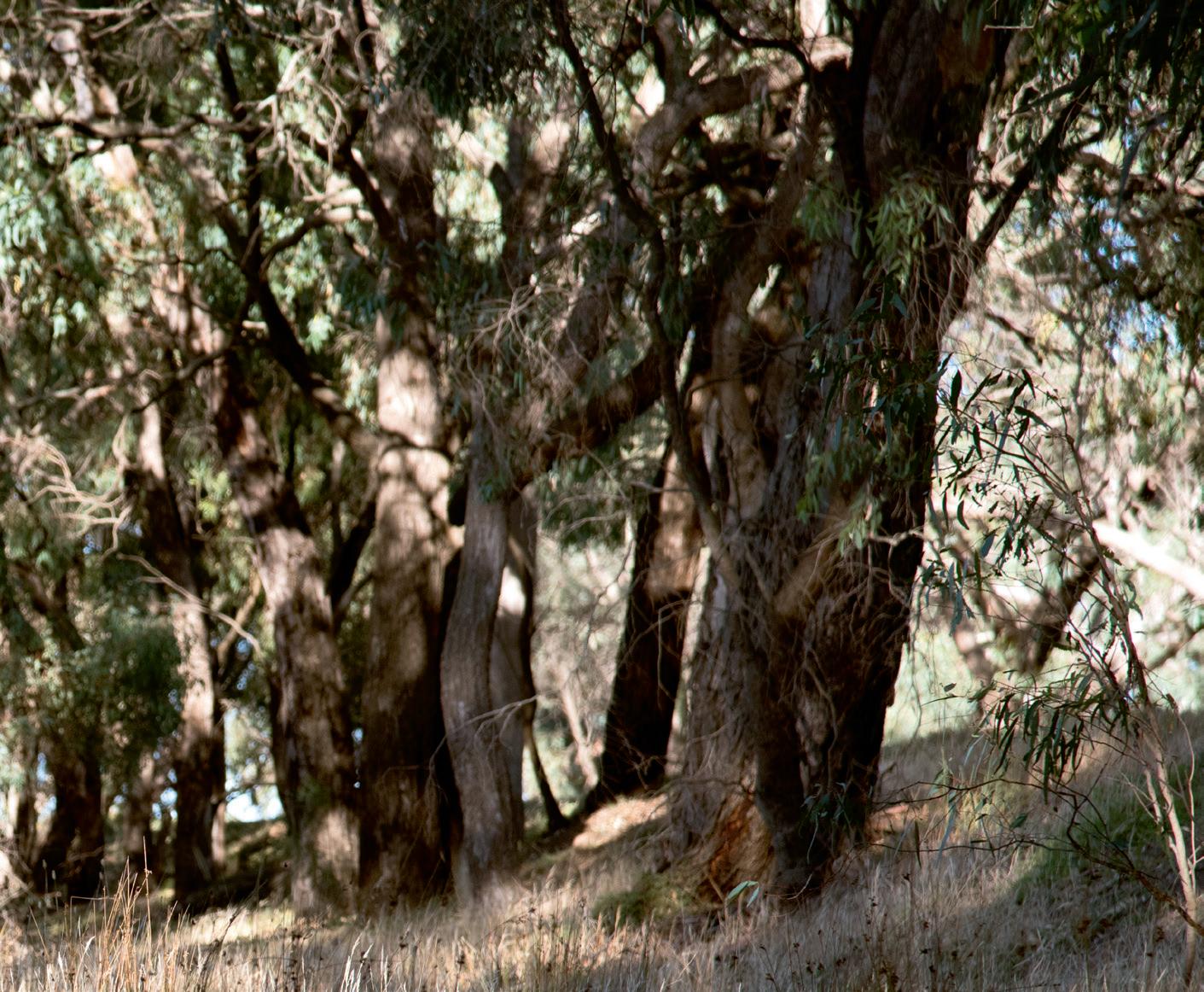



In a testament to decades of dedicated service and community engagement, Rushworth Field & Game has been named Campaspe Shire Council's Community Group of the Year. The award was announced at a ceremony held in Echuca on January 22 and is testament to the tireless efforts of the branch with regard to environmental stewardship and community engagement.
Rushworth Field & Game has a rich history rooted in a passion for conservation and sustainable hunting.
The small branch of just 64 or so members does not have clay target facilities but instead brings together those who share a love for the outdoors and a dedication to preserving Australia’s unique natural environment, with a particular focus on wetlands and the flora and fauna that depend on them. The branch also takes an active role in pest eradication efforts.
Over the years, the branch has earned a reputation for its unwavering commitment to habitat conservation and for its support of local initiatives – a fact that was recognised by Field & Game Australia in 2024 when it awarded the branch the prestigious Blue Wing Award.
Through its initiatives, Rushworth Field & Game has not only contributed to the
conservation of our precious waterfowl and other native species but has fostered an appreciation for the work of the branch and FGA more widely through the promotion of its activities on social media.
The branch’s dedication in this respect earned it the FGA Media Award in 2023-23 and again in 2023-24.
One of the notable aspects of Rushworth Field & Game’s work is its commitment to projects that benefit the community as well as the environment. A significant recent undertaking was the refurbishment of the Rushworth Tennis Club rooms.
Without a clubroom of its own, and recognising the potential of this community asset, the branch spearheaded a project to restore the facility, transforming the rundown and disused building into a functional space for community use while also giving a nod to the building’s original purpose
by preserving items of the tennis club’s history within its walls.
“It is nice to be recognised by Campaspe Shire for our conservation work and the work we carried out on the previous Rushworth Tennis Club rooms,” Rushworth Field & Game’s conservation officer Graeme Wall said.
“The restoration of the clubrooms has been a major achievement. The building had been vacant for 15 years; It was offered to the club to repair, and at a very modest yearly rental, by the Rushworth Public Park Trust.”
The building was riddled with “ironbark itch” – the itch-inducing product of a certain type of grub that favours ironbark trees – which required the entire building to be sprayed and then washed down with a high-pressure washer to remove it.
“A full weekend was needed just to clean out the furniture, wash everything down and cart the rubbish to the tip,” Graeme said.
Member for Euroa Annabelle Cleeland poses for a photo during a visit to Rushworth Field & Game to view the work it was doing on the clubrooms.

“To prevent the “ironbark itch” problem from reoccurring, two ironbark trees near the clubhouse that were infested with ironbark itch grubs were removed at no cost by local arborist Jarretts Tree Services.”
Rushworth FGA president Robbie Donovan blocked up the trees, then the club held a wood splitting day. The wood is in the process of drying and will be auctioned as part of a local event raising funds for children suffering from cancer.
Having been left vacant for 15 years, the building had also been vandalised; the water pump had been stolen and the copper pipe removed.
“We were blessed having Charlie Cerchi’s building and plumbing skills available to us,” Graeme said.
Following the structural work, the job of sprucing up the building began.
“For the most part it was a group effort painting the building inside and out,” Graeme said.
“Secretary Tammy Donovan enjoys painting and spent some days painting the toilet facilities and the outside barbecue area.”
The result is a place the branch can call home, and from which it can continue to work on its other initiatives – particularly its very successful nesting box and henhouse projects.
The branch’s nesting habitat projects stand out as prime examples of its dedication to wildlife conservation.
Branch members have worked tirelessly to install and maintain duck nesting boxes and henhouses in local wetlands and various other locations, providing safe

and secure breeding spaces for native waterbird species.
This initiative has had a measurable impact on local biodiversity, with many species thriving thanks to the group’s efforts – and not just ducks; various other bird species including parrots and kingfishers make use of the branch’s nesting boxes, as do families of sugar gliders.
The branch likes to think “outside the box” with regard to placement of its nesting boxes, too.
“We have formed partnerships with local landowners, Rushworth Public Park Trust, and the Rushworth Golf club to erect varying nest boxes and henhouses – and of course, the boxes are the colours of the Rushworth Football Club,” Graeme said with the hint of a grin.
Throughout the winter months, Rushworth Field & Game actively carries out fox shoots, and the removal of these voracious predators has been a boon for native wildlife, with the flourishing of one species in particular bringing much satisfaction.
“There has been an increase in the successful hatching of brolga chicks, which have successfully fledged,” Graeme said.
“These chicks have certainly been appreciated by the local landowners and the wider community.”
“Although not approved yet, we have a plan to erect more nest boxes as part of the hollow replacement program,” Graeme said.
“Once approved, this will make a further presence in an area. We have worked in conjunction with Shepparton and
Seymour branches on projects, which has worked well.
“David Cox from Shepparton Field & Game has been a great assistance to us with the hen house program, and turns up to some of our working bees.”
With consecutive FGA Media Awards to its name, Rushworth Field & Game is clearly having success in this area.
“Our Facebook page has been a great asset, with members, politicians and community members being able to see our progress and achievements,” Graeme said.
He said the media could be a friend to FGA, and the key was to tell the “good news story”.
“Try to build a bridge with your local newspaper; send in positive stories about your conservation work – and if you aren’t doing any work, contact FGA’s conservation and hunting manager Glenn Falla.
“Maybe you haven‘t got a wetland in your area, but there are alternatives. Maybe a tree in the corner of the shooting ground where a parrot box could be erected. Branches maybe surprised by how many of their members want to become involved,” Graeme said.
“We also have a photographer, Sharon Perry, who loves taking wildlife photos, and her husband Allan is involved in our Wednesday working bees which could be anything from building or painting nest boxes to repairs around the clubroom or checking on nest boxes.”
Rushworth Field & Game likes to help out in the local community where it can, and the community has returned the favour. >>


“We have had numerous donations,” Graeme said.
“Hay for our henhouse filling, and free access to farmers’ properties for fox drives and the erection of duck boxes and henhouses.
“We have received multiple donations including paint for inside and outside the clubroom building, a TV for the building, cash donations from the community, and
labour from our members.”
The Rushworth branch’s dedication to sustainability, preservation and collaboration ensures that it will continue to be a vital part of the Rushworth community for years to come, and its commitment to sharing its good news stories offers the potential for favourable change in the way

the wider public sees not just this branch but the wider association.
“Anyone who is interested in seeing more of the branch’s activities and achievements can follow the Facebook page Rushworth Field & Game Club,” Graeme said.
Or, even better, join them.
“We always welcome new members to assist with our conservation initiatives.”




Our FGA Branches face scheduling challenges and at times make adjustments to 2025 Shoot information including dates, times, targets etc
FGA recommends the below for all shooters and event goers prior to attending an upcoming shoot:
Always check the 2025 Shoot Book via the FGA website, as this will always be the most updated version!
Always check the branch your visiting’s Facebook or website before heading out to the shoot! Branches will often post about time changes, catering, parking or other key information.
Plan ahead – pre-nominate or lock in your attendance by nominating via My Clubs My Scores or contacting the branch directly. This will ensure your place in the event, speed up proceedings on the event day and allow the branch to potentially contact you if required.
Visit https://www.fieldandgame.com.au/ to view the 2025 Shoot Book
If you have any questions, don’t hesitate to call FGA National Office on 03 5799 0960
In the world of sporting clays, variety is the spice of life. Among the arsenal of target types, the midi target stands out as a challenging and rewarding addition to any course. Smaller than the standard clay, the midi demands precision, quick reflexes, and an understanding of its unique flight characteristics.
This article delves into the origins of the midi target, its use in Sporting Clays and Australian Simulated Field (ASF), tips for presentation, and how to improve your shooting technique against these tricky little disks.
A midi target is a scaled-down version of the standard clay target. While the standard clay measures 110mm in diameter, the midi comes in at either 90mm, 70mm or as small as 60mm.
The midi’s smaller size can deceive the shooter and appear evasively fast, appearing further away than what it actually is. Depending on trap setting, its speed can be faster to that of a standard clay upon launch. A midi target can take off at high speeds, however it
loses velocity and height as it progresses through its flight path due to its lesser weight. Therefore, the lead distance and height adjustment for a dropping target is different to that of a standard clay. Most shooters will tend to over lead a midi target later in its flight path as its rapid speed reduction can be overlooked. A midi target is a formidable opponent however by understanding it’s flight characteristics it can lead to successful results against this mean little target.
The midi target traces its roots back to Europe, where clay target shooting evolved as a way to simulate live bird hunting. Early clay targets were designed to mimic the flight paths and challenges of various game birds. The midi was introduced to simulate smaller, faster species such as doves and teal, demanding quicker reflexes and greater precision from shooters.
Over time, as clay target disciplines like Sporting Clays and ASF developed, the midi became a staple for course designers looking to test shooters' skills. Its compact size and ability to deceive shooters through its variability in speed over the target journey, made it perfect for modern
competitions and keeping layouts exciting and dynamic. Today, the midi is celebrated as a key element in sporting clays courses around the world, offering challenges that push even the most seasoned shooters to their limits.
The versatility of the midi target makes it a favourite among course designers. Whether used as a standalone target or paired with other clays, the midi can add excitement and variety to any setup. Here are some common ways midis are presented:
Depending on spring tension and trap design, the smaller size of the midi allows it to launch at high velocity and maintain good speed through its journey creating an illusion of even greater speeds. Designers often use this characteristic to challenge shooters by pairing midis with standard targets, forcing them to adjust their timing and lead.

When presented as a Chondel (looping flight path) or a teal (straight vertical rise), midis can initially climb faster than
standard targets, their peak is often harder to judge while the fall can be more rapid with a looping target as it hastily loses speed. Ensuring complete concentration during the sighter target or watching closely to shooters prior can assist greatly with understanding its lead requirements.
3. Close-Range Crossers
Midis launched at close range can zip across the shooter’s line of sight, creating a fast, lateral target. These presentations demand rapid reactions and pinpoint accuracy. A proficient shooter may choose to alter their method to the ‘move- mount- shoot’ technique, ensuring the target is cut-off at a point in its trajectory instead of attempting to maintain lead which can be detrimental when target presentation (duration) is limited.
4. Pairing with Standards
A classic challenge is to pair a midi with a standard target in a simultaneous pair. Shooters must decide which target to engage first, factoring in speed, distance, and trajectory. Often, the midi demands immediate attention due to its speed and unpredictability however many shooters over rush the midi (and miss) instead of reading the pair and potentially shooting the standard first, then the midi as it slows with adjustment to lead distance. It all depends on the presentation of targets to which way you should shoot the pair. Observing the sighter pair is critical.
5. Outgoer or Trap Shot
Midis can also be thrown low and flat, almost skimming along the

ground. Their smaller size makes them harder to track, adding to the difficulty. These can be a test of eyesight over ability however course setters should ensure suitable target setting to create a contrasting visual against the background to allow the shooter to test their ability to their full extent. Pre-mounting in FGA can assist with going-away targets considerably however practice prior to game day as pre-mounting is not for everybody.
Midis can be intimidating, but with the right approach, you can consistently break them. Here are five tips to improve your performance:
1. Understand the Speed and Size Midis often appear faster than they are due to their smaller profile. This optical illusion can cause shooters to rush their shots. Ensure you use the sighter and watch the target trajectory prior to your turn. Take a moment to gauge the target’s actual speed and adjust your timing accordingly. Always watch where the target lands during sighters as distance can be read more accurately against the ground surface as opposed to reading in the air.
2. Adjust Your Lead
Due to their size, the lead required over the midis journey will vary significantly. Again, depending on spring tension of the machine, the initial take-off will be faster and require more lead with longer targets. As speed reduces, care must be given when leading a dropping target, maintain focus on the target and not the barrel. If the shooter attempts to measure the gap (lead) and focus reverts to the barrel during the swing, the gun will halt its movement and hence the target will be missed behind. Practice judging leads with midis in different scenarios to build confidence. Attempting different techniques such as move-mount-shoot or cutting a target off through its flight path as opposed to maintaining lead may assist some shooters.
3. Practice with Midis
There’s no substitute for experience. Incorporate midis into your practice routine, experimenting with different angles, distances, and pairings. Discuss shooting techniques for midis with experienced shooters and don’t be afraid to ask those proficient shooters if you can watch behind them during practice days to understand their technique and lead distances when shooting midis. The more you practice, the better you’ll understand their flight characteristics and required lead picture. All shooters
see lead differently, find the fit for you through practice and continue to put thousands of shells through the gun!!
From a technical standpoint, the midi’s flight path is influenced by its size, weight, and speed. Its smaller diameter allows it to cut through the air with less drag initially, however its velocity falls away faster than a standard target.
Additionally, in windy conditions the midi’s reduced surface area can make them more susceptible to sudden shifts in trajectory and the target can vary dramatically. For some competitors, shooting early in its flight path can be beneficial over waiting longer which can be detrimental as the brain kicks in and measuring of leads starts!
Understanding these nuances can help you anticipate their movement and adjust your approach in real-time.
• Clay Pigeon Shooting Association (CPSA): Offers a wealth of knowledge on the origins and uses of different target types, including midis.
• National Sporting Clays Association (NSCA): Provides insights into competitive use and tips for tackling challenging presentations.
• Geoffrey Booth’s Shotgun Ballistics for Hunters: An excellent resource for understanding the physics of clay targets and how to adapt your shooting technique.
• Expert Tips from George Digweed: The legendary champion emphasizes the importance of focus and calm when approaching midis, highlighting how confidence can make all the difference.
The midi target is a pint-sized powerhouse that adds excitement and variety to any Sporting Clays or ASF course. Its speed, small size, and versatility make it a favourite for course setters and a challenge for shooters of all skill levels. Whether you’re a seasoned competitor or a newcomer, learning to master the midi is a rewarding experience that will improve your overall shooting game.
So next time you see a midi on the course, don’t groan—embrace the challenge. With practice, patience, and a little determination, you’ll find yourself breaking these tricky little disks with consistency and confidence.
Clay target shooting is an important pillar of Field and Game as an organisation.
We believe that hunting, conservation, and clay target shooting within Field and Game all tie in together with each other. That is why it is important to make sure clay target shooting is represented and focused on at a national level to ensure it stays that way.
In my first year on the National Board, I am fortunate to be leading the Clay Target Sub Committee alongside five other deeply passionate and enthusiastic clay target shooters.
As a group we have created a ‘charter,’ focusing on all the aspects and issues identified by the committee and other
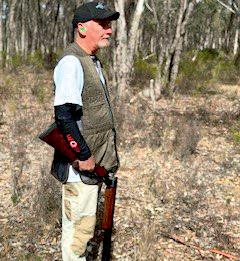

members of the clay target community, as needing change.
Our focuses thus far are a philosophy of what ‘Australian Simulated Field’ is, a review of the handicap system used at present, a complete rulebook review aiming to provide clarity and consistency across the discipline which leads into a review of the current referee exam and a new refresher course.
The committee have done a brilliant amount of work thus far, to start the wheels in motion and start providing the members and branches material for input. This material and documentation will start to be circulated in the coming months.

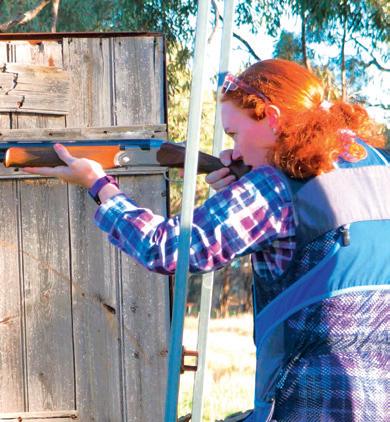
If there is anything that you, the membership, think the clay target committee have missed or need to take the time to look at, please do not hesitate to reach out and get in contact.
I would like to thank the current members of the clay target committee, Sarah Fritsch, Scott Blunden, Chris Burder, Rod Berger and Chris Thompson for all their contributions thus far.
You have made the committee a pleasure to work with and be apart of and I am looking forward to continuing to work with you all in future.
Safe and happy shooting, Michaela

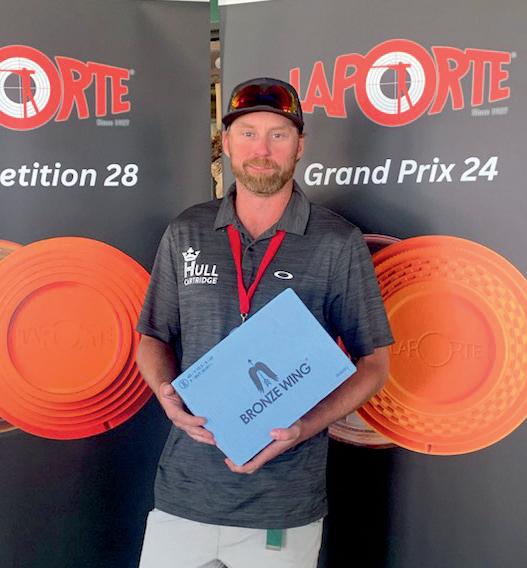
In a world increasingly concerned with sustainability, food waste, and ethical sourcing, WildPie has emerged as a unique and innovative solution. A collaboration between renowned chef Jo Barrett and hospitality professionals, WildPie is more than just a brand—it’s a movement that transforms underutilized wild game into delicious, handmade pies and sausage rolls. By tackling environmental issues associated with invasive species while offering a gourmet experience, WildPie is changing the way Australians think about food.
At its core, WildPie is about using wild game meat—such as venison, wild boar, goat, and wallaby—that would otherwise go to waste. Every year, Australia’s culling programs eliminate thousands of feral animals to mitigate their impact on native flora and fauna. Unfortunately, much of this meat is discarded rather than harvested. WildPie aims to bridge this gap by transforming these high-quality proteins into accessible and delectable baked goods.
WildPie’s offerings include the Wallaby and Mountain Pepper Leaf Pie, Venison and Red Wine Pie, Goat Curry Pie, and Wild Boar Sausage Rolls. Each product is crafted with care, using high-quality ingredients and a bake-at-home method that ensures a crispy, flaky texture. The result is a meal that is both gourmet and approachable, perfect for those who may be hesitant to try game meat.
To learn more about how WildPie got to where it is today, we spoke to Jo Barrett, acclaimed chef and former owner of the hatted Lorne restaurant Little Picket, who has always been passionate about sustainable food. Her journey into WildPie began when she met fellow food entrepreneur Billy Staughton through the Future Food System project in Melbourne’s Federation Square. Initially unfamiliar with hunting, Barrett soon came to appreciate the conservationist role hunters play and
saw an opportunity to change perceptions about game meat.
“We know people want to be more conscientious about the food system, but there hasn’t been an easy way to eat game,” says Barrett. “With WildPie, we want to offer chefs a product they can put on a menu with a garnish, and they’re instantly helping. For home cooks, a positive experience with wild foods could lead them to explore game meat further.”
Making game meat more approachable has been a key challenge. Many Australians associate wild game with strong, unfamiliar flavours. However, WildPie’s careful sourcing and cooking techniques ensure that the flavours are pure yet mild, appealing to a broad audience. “The pies are pure in flavour but not overpowering,” Barrett explains. “We wanted a pie that is approachable for people who are unused to wild game, and I think we’ve done it.”
The impact of feral animals in Australia is staggering. The national deer population alone surged from 200,000 in 2000 to over 2 million in 2021. These animals cause extensive damage to farmland, hinder bushfire recovery, and pose a significant biosecurity risk. Feral pigs, goats, and deer cost the economy millions in losses each year, yet the culling efforts rarely translate into commercial food production.
The Victorian Deer Control Strategy and other government initiatives focus on population reduction, but Barrett and her team see an opportunity for change. “If we can increase demand for this meat, then maybe policies could evolve,” she says. “Instead of seeing culling purely as an expense, it could become a sustainable industry.”
WildPie’s mission extends beyond just selling pies. The company actively engages in education and advocacy, participating


in farmers’ markets and working closely with hunters, conservationists, and food enthusiasts. Many customers share stories of family members who hunt but never considered using game meat in their everyday diet. WildPie aims to shift this mindset, proving that wild game can be both accessible and a regular part of the Australian diet.
The company is also expanding beyond Victoria, with plans to distribute in New South Wales and Queensland. “Distribution has been a learning curve,” says Barrett. “Ensuring the freshness of our products while maintaining environmentally friendly packaging is a challenge, but one we’re committed to overcoming.”
WildPie isn’t just about pies—it’s about rethinking our food system. The team envisions a future where Australians embrace wild foods as a viable alternative to farmed meat, reducing environmental impact while enjoying nutrient-dense, high-quality meals. “The pie was just the carrier,” Barrett explains. “Our real goal is to get people eating wild food and seeing its potential.”
For those looking to support a more sustainable and ethical food industry, WildPie offers an easy and delicious way to start. Whether it’s a hearty venison pie on a pub menu or a wild boar sausage roll at a family gathering, each bite represents a step toward a more sustainable future.
To learn more or place an order, visit wildpie.com.au and follow their journey on social media @wild.pie.
Wild Duck breasts (2 ducks or four breasts)
• 2 ducks or four breasts with any silver skin or bruising removed and brought to room temperature
Risotto
• 1 cup Arborio rice
• 6 sprigs Thyme
• 1 White onion
• 1/4cup Parmigiano Reggiano cheese
• 1 cup White wine
• 2 Liters Chicken stock
• 80g butter
Mushrooms
• 450g White Button mushrooms, thinly sliced.
• 450g Portobello mushrooms, thinly sliced.
• 200g pancetta, diced.
• 10 sprigs Parsley, finely chopped.
• 2 Garlic cloves, finely chopped.
• 2 spring onions, thinly sliced.
Preparation
Setting up
1. In a frying pan, bring the broth to a boil, add your rice and cook 7 minutes.
2. Once the rice has been pre-cooked, drain it, carefully keeping the broth.
3. Spread the rice on a large tray or plate to stop the cooking.
4. Chop the herbs in preparation using a sharp knife on a quality chopping board.
5. Thinly slice the onion as well as the mushrooms and grate the Parmesan.
6. Shred the duck legs confit.
of the wild duck breasts
1. Cut the duck into strips and cook on low heat until rare, baste in a small amount of lightly browned butter as it comes off the heat, season to taste and then dice into bite sized cubes.
2. Cover in alfoil, set aside to rest until adding to the risotto at a later stage.
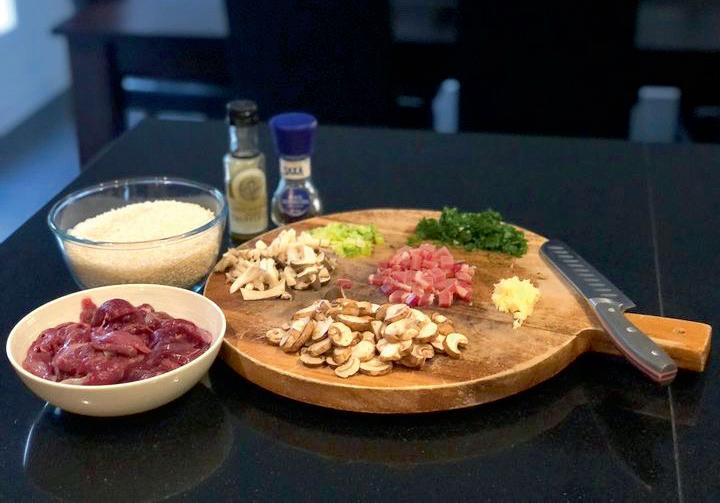

1. In a pan with olive oil, sweat the onion until it is soft and translucid, add the onions and thyme and at the last minute the pancetta to soften.
2. Follow with the rice and the white wine and cook until it has absorbed completely.
3. Cover with the broth (the cooking liquid of the rice) and cook until the rice absorbs all the liquid.
4. Repeat the last step until the rice is cooked al dente.
5. While cooking the risotto, in a hot frying
pan with olive oil, cook the garlic with the mushrooms for 4-6 minutes until the mushrooms are browned and nicely coloured.
6. Add the duck confit to warm it up. Remove the risotto from the heat and add the parsley.
1. Place the risotto in a bowl and add the parmesan and a little bit of white truffle oil or garlic infused olive oil.
2. In a bowl, put two tablespoons of risotto, garnished with mushrooms and duck breast.
Ingredients
Wild Duck breast
(One Australian Shelduck or Mountain Duck will be enough for this recipe, but you can use this method on all duck or goose)
• 1 duck or two breasts with any silver skin or bruising removed and brought to room temperature
Velveting process
• To tenderise tougher wild duck meat from Australian Shelduck, the easiest way is to sprinkle 3/4 tsp baking soda (bicarbonate soda) on each 250g of sliced duck cuts (across the grain of the meat) – then toss it with your fingers and leave it to soak for 30 minutes in a small amount of water. (just enough to retain the moisture)
• After that, rinse and pat off the excess water and proceed with your stir-fry recipe.
Stir fry ingredients
• 2 breasts, sliced, velveted and patted dry with paper towel, then coated with a dusting of corn flour.
• Ketchup manes (sweet soy sauce).
• Chinese cooking wine.
• Black sesame oil.
• Mixed vegetables for steaming.
Preparation
Setting up and cooking
1. Once the meat has been through the velveting process, rinsed and patted dry it is time to coat it in cornflour.
2. Brown in a frying pan on low heat until rare.
3. Add 3 tablespoons each of Chinese cooking wine and sesame oil to the pan to slow the cooking.
4. Cover with a generous amount of Ketchup Manes and remove from the heat.
5. While that is resting, steam some mixed vegetables to your liking. (beans, carrot, broccolini and capsicum are great combined)
Assembly
1. Place the stir-fried duck alongside your choice of steamed vegetables on a plate.
2. Add seasoning to taste and enjoy the tenderised duck breast like you never thought you could. (done correctly, this creates a duck dish that is hard to beat as our largest game duck becomes as tender as a teal or pinkeared duck cooked the traditional way)


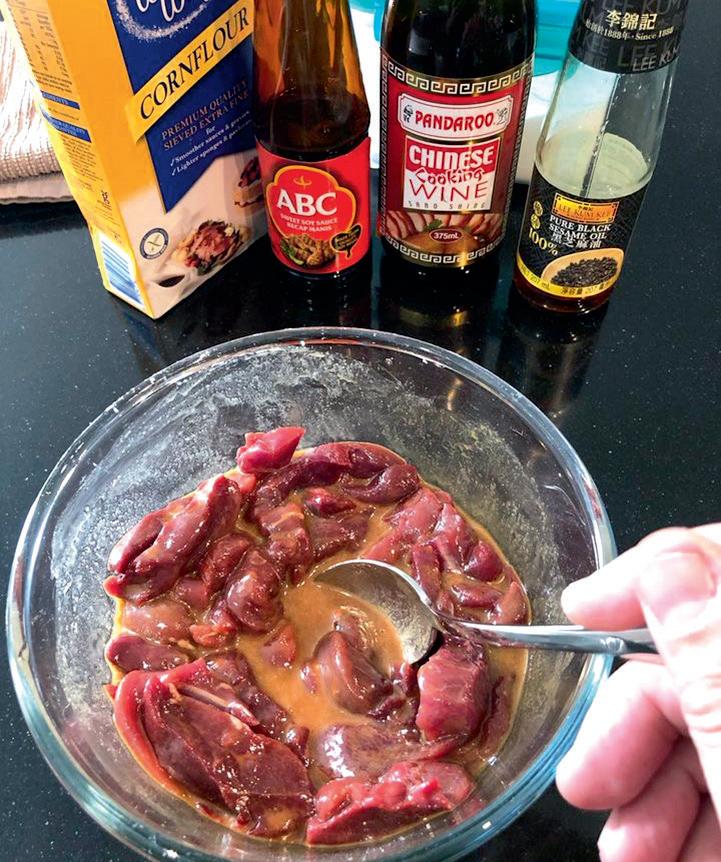

Rabbits supplied by Peter Gibson, long time rabbit hunter and ferreter from Geelong Field & Game Branch. Many landholders in the Geelong region thank Peter for his ongoing predator control and we thank him for the rabbits used in this recipe.
Ingredients
Shredded Rabbit
• 1 Wild Rabbit (cut lengthwise)
• 500 g (equal parts diced carrot, celery, and onion)
• 2 sprigs of thyme
• 2 cloves of garlic
• Chicken Stock (enough to cover ¾ of the rabbit in the container)
• Salt and Pepper to taste
Filling
• 30 g Salted butter
• 1 clove of garlic
• ½ onion, finely diced
• 400 g mushrooms, sliced (small field mushrooms or button)
• 125 ml (½ cup) white wine (make sure it’s good enough to drink the remainder or it’s not good enough to cook with)
• 125 ml (½ cup) canned puréed tomatoes (home grown beats canned every time if you can grow or acquire them)
• Enough flat leaf parsley like grandma used to grow, chopped (you grow that outside the kitchen window, right?)
Vol-Au-Vent
• Straight out of the packet bought from the supermarket, Coles and IGA usually stock them (this is where I’m too lazy to play pastry chef)
Shredded Rabbit
1. Place the whole list of ingredients into an oven dish and place the halved rabbit on top (option 2: slow cooker) until the meat falls off the bone. Pull the meat and set aside and cover.
2. Put the cooking juice and vegetables in a round-bottomed mixing bowl and purée using a stick blender, then strain through cheese cloth and set aside.
1. Sweat the onions and garlic and add the mushrooms until lightly browned.
2. Deglaze with the white wine and simmer until you reduce liquid by half.
3. Add the cooking juice and vegetable mixture and reduce until thickened.
4. Add the shredded rabbit and season with salt and pepper to taste.
Warm the VOL-AU-VENT cases in the oven and fill to the brim then sprinkle the parsley on top just before serving.
Depending on who you are trying to impress, you may like to leave a few bowls oven trays and a rolling pin in the sink, throw a bit of flour on the kitchen bench to make out you did the pastry, but who am I kidding nobody would believe me anyway.
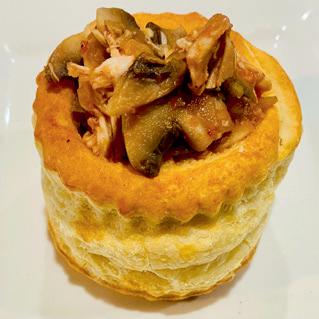

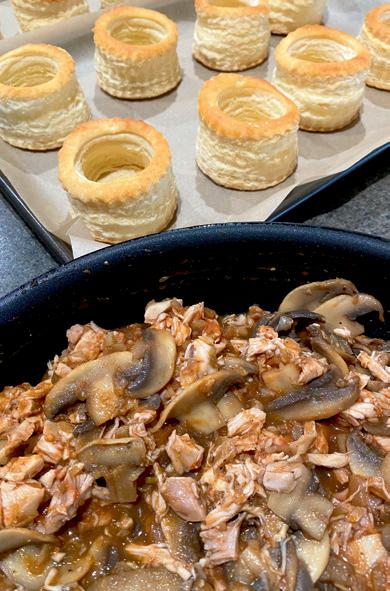

Ever considered taking up the offer of giving up meat and switching to eating insects as promoted by various members of our community?
Well, we haven’t either, but when this ABC TV series popped up on our radar recently, we thought we should look, why? Because one of our long-time members and committed volunteers Ross Matthews from Clunes Branch was featured in an episode where rabbits were the focus. Local identities surrounding Winchelsea (the site of rabbits’ initial release) were also featured including Ross’s sister Kim, offering up a rabbit stew recipe that originated from the family cookbook.
If you are into cooking game food, hunting or fishing for wild harvest or gathering food from the field it’s an interesting view indeed and we recommend you give it a watch.
Are we about to start eating Cane Toads, Carp or Cat? Not likely, but Rabbit, Deer and Camel have certainly long been part of our diet. The six-episode series is well worth a watch. We congratulate Ross on his involvement and appreciate the choice of hat on that day.
Ross Matthews Plumbing have long supported FGA Branches and many other shooting clubs assisting many club rooms to establish bathroom facilities and septic tank systems. A keen fox hunter, ferreter and dog handler/breeder, Ross is also handy on the target grounds, both setting targets and smashing scores that are the envy of many.
Host Tony Armstrong - with the help of scientists, land carers, an artist and a chef - will attempt to turn our unwanted ecological trash into desirable culinary gold, in a provocative attempt to Eat the Invaders.
Tuesdays 8.30pm on ABC TV. All episodes available to stream on ABC iview.

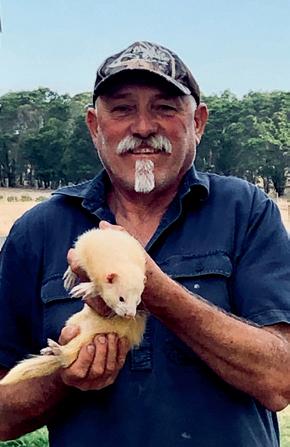

As the days grow cooler and hunting season approaches, it’s time to start thinking about getting your four-legged hunting partner ready. After a break over the hot summer months, your dog will need some extra attention to ensure they’re fit, healthy, and prepared for the demands of the season. Here’s how you can help them gear up for a safe and successful hunting season, tailored to Australia’s unique conditions.
Just like us, dogs need time to regain their fitness after a period of reduced activity. Some will have put on a bit of the old “Christmas pudding” in the off season. Begin with slowly increasing the training on outings by gradually increase the intensity and duration. Incorporating activities like regular walks, runs, or swims can rebuild their stamina. Swimming, in particular, is a fantastic low-impact exercise that’s easy on their joints. Don’t forget to weave in some training sessions to sharpen their obedience skills, ensuring they remain responsive in the field. After each session, inspect their paws for cuts, abrasions, or signs of wear, especially if they’ve been running on rough terrain. Pads tend to soften significantly when out of work. Blistering up pads on hard terrain is a sure way to take your dog out
of action for a couple of weeks. Make sure the nails are trimmed, reducing the risk of a snag and torn nail. Did you know long overgrown nails can cause stretching of the tendons under the toes and flatten the foot. If your dog, like my last old gal becomes a screaming shaking mess (or better yet, demonically possessed), it may be a job for the local vet or groomer. A great option for the tough ones is a scratch pad that has a build in treat draw and rough surface. They encourage the dog to scratch to get the treat out, wearing the nails down in the process. They are available on line, I got one though Amazon, to show clients in the vet clinic.
In many parts of Australia, snakes remain active well into autumn, posing a significant risk during hunting trips. Snake avoidance training, with the right trainer can be invaluable, helping your dog learn to steer clear of these potentially deadly encounters. Running dogs in suits, like those made by Bromelli, may look a bit ridiculous, but they can put that layer between your dog and the bitey-bits
of the “nope rope”, aka snake. To be prepared for emergencies, ensure your first aid kit includes a pressure bandage and familiarize yourself with its proper use. There are fabulous ones marked with the print that tells you when it is at the right stretch and tension. They are available online and are handy for both you and your dog.
Ticks can still be a problem in some areas, particularly along the east coast. To keep your dog safe, ensure they are on a reliable tick prevention treatment, such as spoton applications, oral medications, or tick collars. Seresto collars are what I choose to use, along with the Once-A-Year flea and tick injection, Bravecto Quantum. The Bravecto is a relatively new product to Australia. After each outing, perform a thorough tick check, focusing on areas like the ears, armpits, and under the collar. Keep an eye out for symptoms of tick paralysis, including weakness, vomiting, wobbliness, or breathing difficulties, and seek immediate veterinary care if needed.

Australia’s unique environment presents other challenges during autumn hunts. Sharp seed heads, like burrs and grass seeds, can become lodged in your dog’s paws, ears, or fur, causing pain or infections. Regular grooming and inspection after each outing are vital to remove these hazards. Cooler autumn weather may also lead to joint stiffness in older dogs or those with previous injuries, so consider joint supplements or a warm jacket to keep them comfortable.

Be mindful of the days temperatures as always, we don’t want them over heating, but by the same token we don’t want them colling off too quickly on the colder days, increasing muscle soreness.
Blue-green algae blooms are more likely to occur when water is warm, still, and enriched with nutrients like nitrogen or phosphorus. Blooms can occur in spring through to autumn and are more likely in inland water ways. Keep your eyes on any local water board reports.
Wildlife encounters are another concern. Kangaroos, wild pigs and wild dogs, can pose risks to hunting dogs. Training your dog to stay close and follow commands can minimize these dangers. Ensure all of your gear has been checked for good fit and any wear has been addressed, particularly on pig hunts. Additionally, wet or muddy conditions common in autumn can lead to skin issues like dermatitis, so ensure your dog is dried off and cleaned after hunts, especially in the webbing of the feet.
Hunting can be physically demanding for dogs, so it’s crucial to ensure they are in peak condition. A pre-season visit to your vet is a good idea to check their overall health and readiness. Adjust their diet to provide the necessary energy for the increased activity, and monitor their weight closely, as excess weight can lead to injuries and fatigue.
If you are using any kind of electric collar, even if you are not utilizing the stimulation function, be aware that you may be
required to have a suitability certificate from your vet. Additionally, ensure the unit is inspected and serviced as per your state’s regulations. Faulty electric collars can cause serious burns, so it’s best to play it safe and have the unit undergo a safety inspection before the season starts.
Accidents can happen in the field, so a well-stocked first aid kit is essential. Include bandages and gauze for cuts, antiseptic wipes or spray to clean wounds, and tweezers or tick removers for removing ticks or foreign objects. Glad wrap and yes feminine hygiene products are great for managing wounds. As always, DON’T
STEAL THE WIFE’S OR DAUGHTER’S without asking, you won’t hear the end of it! Tampons are great for stake injuries and can be soaked in an antiseptic like betadine once packed in the wound. Sanitary pads are great sterile, non-stick and absorptive wound dressings. Finally, Glad wrap is fabulous for water proofing and holding dressing in place. Add snake bite bandages, eye wash solution, a thermal blanket, anything that you think might come in handy for you or your mate. Skin staplers can also be purchased through your vet or online and con come in handy to hold a wound together until you can get to the vet. Keep your vet’s contact details and the nearest emergency clinic handy.
Hunters understand the value of their canine companions and the bond they share. Ensuring your dog is fit and healthy is about more than hunting success—it’s about respect for their loyalty and hard work. During hunts, schedule regular breaks for rest and hydration. Carry plenty of water and a collapsible bowl. Rehydration solutions like Oralade are a great source of balanced electrolytes. Protective gear, like high-visibility vests, can enhance safety by making your dog easier to spot in dense bush.
After a hunt, give your dog a thorough check for injuries, ticks, or signs of soreness, and reward them with a good meal and some well-earned rest. With the right preparation, your dog will be ready to tackle the season with enthusiasm and endurance. By taking these steps, you’re setting them up for success while ensuring their health and safety remain top priorities. Here’s to a safe and rewarding hunting season for you and your loyal companion!

Clay target shooting is one of the safest and most enjoyable sports around—when it’s done right. But safety doesn’t happen by accident. It takes discipline, respect for the equipment, and a healthy dose of common sense. Lately, it seems like some people have forgotten that traps are powerful machines, not toys.
Field & Game Australia has seen an unfortunate spike in trap-related injuries recently, and you can bet there are more out there that haven’t been reported. Why is this happening? Maybe people are getting complacent, maybe they think modern traps are safer than the old manual ones or maybe they just don’t know any better.
Whatever the reason, it needs to stop. No one should leave an FGA range with any injury – except maybe a bruised ego if they missed a few too many targets. So, take five minutes to read this article. It’s not just another safety lecture—it’s a reality check. And it might save you, or someone else, from a very bad day.
The Evolution of Traps: From Brutal to Efficient (But Still Brutal)
Let’s take a stroll down memory lane. Back in the day, traps were operated by hand. If you were the poor soul stuck as the "trapper," you’d spend your day crouched behind a machine, loading clays, cocking heavy springs, and pulling a cord to launch targets. The traps didn’t just throw clays— they fired them like missiles. And if you made a mistake, you paid for it in blood, bruises, or worse.
Fast forward to today. We’ve got automated traps with big hoppers, remote controls, and precision engineering. These machines are faster, more consistent, and far more efficient than their old-school counterparts. But here’s the thing: they’re also more dangerous if you don’t respect them.
A modern trap can fling clays at over 100 km/h, delivering force that rivals a heavyweight champion’s punch. Let that sink in. Imagine lying on the ground and
having someone drop a 20kg dumbbell directly onto your leg, arm—or worse— your face. Now imagine the dumbbell didn’t just land—it struck with the precision of a machine, focused on a blade-like edge just a few square centimetres wide. That’s the kind of force these throwing arms generate, and that’s the kind of damage they’ll do if you’re in their path.
For context, heavyweight legends like Mike Tyson in his prime were estimated to deliver punches with 3,000 to 4,000 newtons (N) of force—enough to knock out opponents with a single blow. A trap arm generates a comparable amount of force, often exceeding 3,000 N, but with one critical and terrifying difference: it doesn’t spread that impact across the padding of a boxing glove or a human fist. Instead, the power is concentrated on an area as small as the edge of the arm or the surface of a clay target.
And let’s be clear—we’re talking about Tyson in his prime, not 58-year-old Tyson putting on an exhibition match for nostalgia’s sake. This is raw, unrelenting force without hesitation, precision-engineered and ready to strike. Unlike a boxer, the trap doesn’t hold back, doesn’t miss, and certainly doesn’t care about your excuses.
If you’re in the wrong place at the wrong time, the trap arm will remind you exactly who’s in charge—and it won’t be you. Tyson might leave you reeling, but a trap arm can break bones, shatter confidence, and end your day at the range in a way you’ll never forget.
Respect the machine. Treat it like the powerhouse it is. Because if you don’t, it won’t pull any punches, and you won’t get a rematch.

Whether you’re a long-time shooter, a seasoned setter, or someone new to the sport, the rules for handling traps are the same:
1. Assume Every Trap Is Armed
This is rule number one, two, and three. Always assume the trap is armed and ready to fire, even if the power light is off or someone swears it’s safe. Treat it like you would a loaded firearm: with caution, respect, and zero assumptions.
2. Stay Clear of the Throwing Arm
The throwing arm moves faster than you can blink. Keep your hands, head, and any other body part far away from its path. Don’t lean in, don’t reach around, and for the love of clays, don’t think you can “just grab something real quick.”
3. Leave Repairs to the Experts
Just because you’ve been around traps for years doesn’t mean you’re qualified to fix one. Modern machines are precise and unforgiving. If something goes

wrong, don’t try to "MacGyver" it. Call someone who knows what they’re doing.
4. Lock It Out
Never, ever work on a trap unless it’s powered down, unplugged, and the tension is released. Skipping this step is like playing Russian roulette with your fingers—or worse.
If you’re new to trap setting, ask someone experienced to show you the ropes. And by “experienced,” I don’t mean someone who’s just been pressing the start button for a few years. I mean someone who knows the machines inside and out.
So why are we seeing more trap-related injuries lately? Here are a few guesses:
• Complacency: Some people think modern traps are safer than the old ones and get too comfortable around them. Spoiler alert: they’re not.
• Inexperience: Newcomers might not fully understand the risks or proper protocols.
• Lack of Training: Too many shooters and setters are jumping in without proper training or guidance.
Whatever the reason, one thing is clear: these injuries are preventable. And it’s up to all of us to make sure they stop happening.
If you’re thinking about stepping up to help with trap setting, good on you. Shoots don’t happen without setters, and we need people willing to get involved. But let’s be clear: trap setting isn’t just about pressing buttons or loading clays. It’s about respecting the machines, following safety protocols, and keeping everyone on the range safe.
Here’s a tip: if you don’t know something, ask. There’s no shame in admitting you’re not sure about something. The only “dumb”
question is the one you didn’t ask that led to an accident.
Still not convinced? Here are a couple of cautionary tales to think about:
• A long-time setter leaned in to adjust something without locking out the trap. The arm fired, and let’s just say he left the range with fewer working fingers than he started with.
• A newbie reached into a hopper to clear a jam without unplugging the machine. The trap released, and he walked away with a broken hand—and a very expensive lesson.
These aren’t just stories—they’re warnings. Don’t let yourself become the next one people tell at the club.
Most injuries don’t happen because someone is inexperienced. They happen because people get too comfortable. They think, “I’ve been doing this for years—I know what I’m doing.” But traps don’t care about your experience, your ego, or your confidence. They only care that you were in its way.
Remember this: traps are powerful, precise machines. They’re designed to throw clays, not to forgive your mistakes.
Field & Game Australia wants every shooter and setter to enjoy their time on the range—and leave with great memories, not injuries. Whether you’re a veteran or a rookie, the rules are the same: respect the traps, follow the protocols, and don’t take shortcuts.
This isn’t just about protecting yourself— it’s about protecting everyone on the range. Because at the end of the day, the only thing that should be “broken” on a clay range is the targets.
Stay safe, respect the machines, and let’s keep this sport as fun and rewarding as it’s meant to be.

“Have you peaked yet?”
I cannot remember if it was Andrew Opie or Doug McLeod, but it was one of them. I had just finished telling them that I had put all my past handicap cards into a spreadsheet going back to 1990 (59,350 targets). One of them rudely asked “have you peaked yet?” I did not know, but as I am well embedded in Vets, I guessed the answer was probably yes.
When I consulted my spreadsheet, I found that I had been pretty consistent, except for a couple of years I lost interest in 2007/08, and of course 2020 when most of us just about lost interest in life itself.
It appears as though there has been a tailing off in the 2020’s, so I thought I should see if I could identify any issues
that I could address. Naturally, I turned to my spreadsheets.
Now I realize that no amount of analysis is going to turn me into John Younger, a nice thought though it is, but maybe some analysis could help me get back on track.
All of us have our impressions of why we miss, and what targets we have trouble with, “I can’t hit loopers”, “I can never hit rabbits”, but as I have learned your impressions may not relate to real life.

Back in the day when I shot a lot of skeet, I was most concerned with station 2 high target. As skeet is the same set of targets each round it was easy for me to tabulate
hits and misses. It turns out station 2 high target was not a problem, while station 5 high target was the worst. The late Bob Buchan, President of Melbourne Gun Club at the time, told me to get my gear and he would show me how to hit station 5 high. It took him five minutes to identify that I was holding my gun too far back toward the high house (more on that later).
Did I go onto to win the National Championship? No I didn’t, this is not a fairy-tale. But my point is, that if I had not done the analysis, I could have been working hard on a problem I didn’t have.
Sporting clays is a different discipline, each round varies and the type of targets can vary at each stand. Recording each type of target is too hard and even if I did, I would have to qualify loopers into right to left crosser, left to right crosser, left quartering, right quartering, close, distant, fast, slow etc. Not going to happen.
I asked the question why do the top shooters miss? What are the main reasons? The answer I got was that when top shooters were asked about why they missed the most common answer was mis-reading targets. Not very helpful until you think about what this means. It implies that they rarely miss due to faulty gun mount, positioning feet incorrectly, losing sight of the target, lack of concentration, poor choke selection or any of the other reasons most commonly identified by the average shooter. It implies they have the processes involved in shooting elite scores worked out and imbedded in their approach.
So, I focussed on process. By taking photos of the target board at each station, and the score sheet at the end of each shoot I was able to build a list of targets missed. By shedding some light on when and why I missed I was able to eliminate some things and learn more about others.
For example, as an older shooter it is not unreasonable to assume that I tire as the day goes on and as a result I might miss more towards the end of the day. An analysis of the pattern of misses across the 127 rounds of 2024 shows that while there is some variation, there is no pattern. I am an equal opportunity misser of targets. Good to know.
Do I have trouble with singles or doubles? Well, there is a lot of variation in the following chart but on average I of the targets I miss 16% are singles and 26% are doubles. It sounds like a lot, but it means 2 targets thrown as singles, and 3 targets thrown as doubles per round. Given you get two shots at the singles and only one at each of a double it is something to be aware of but not a major systemic issue.
In terms of reasons for misses I try to visualise each miss in a round by looking at where they occurred using the scoresheet, and remembering the type of target, using photos of the boards. The result looks something like this.
Is this precise? No of course not. It is based on my recollection which is better now I have given up alcohol but still not 100%, but it does not have to be precise to be useful. After 3175 targets in 2024 I have my estimate of causes.
I should say that I am a follower of john Bidwell’s Move Mount Shoot method, mainly because John built it around the KISS principle. Keep it Simple Stupid. Something I can relate to. I no longer take my choke tubes and tube wrench with me; I no longer have four different shells with me and I got rid of my red and purple and orange lenses some years ago. So, my perceptions of why I miss are recorded with Move Mount Shoot in mind. >>



‘Eyes off target’ means taking your eyes off the target for even micro second and flicking back to the barrels which accounts for almost 50% of my misses. Some articles on sight refer to soft and hard focus or the quiet eye. ‘Gun hold too high’ can mean that as the gun is mounted it can obscure the line of the target, especially when it is low e.g. a rabbit or below your feet. ‘Gun too close to trap’ means the target can get past the gun and I end up chasing it. These three reasons account for 85% of my misses. Even if my analysis is not accurate this is pretty solid evidence that I can benefit from addressing these issues.
So what did I learn over 2024?
I started with some guidelines:
• Focus on one target at a time.
• Watch the target break
• Hold the gun barrels below line of the target
• Intercept the target
• Ensure there is firm contact with cheek before pulling the trigger
And some practices:
• Shoot 50 targets of skeet each week,
• Watch my diet,
• 30 minutes of exercise each day aimed at relieving creaking knees, improving balance and strengthening arms and shoulders,
• Eye exercises ,
• Recording all of this and more in a shoot diary for the year.
As the charts below show my average score per round tracked well above 2023 at a standard deviation (a measure of variability) well below 2023. My best year on average since 2014.
The distribution of scores per round has moved to the right. This is important as there is more scope to lose on the downside than gain on the upside as the following chart shows.
Scores <=19 went from 53% down to 40% while scores =>20 went up from 47% to 60%.
The point of this article is to provide an example of analysis which has given me some significant things to work on with my clay target shooting. Not everyone’s cup of tea I will admit but, if you have a secret obsession with spreadsheets, go for it.
While the detailed analysis won’t be required in 2025, I will work on my systematic faults and keep and eye on the data.
So, what does it all mean, apart from that I have too much time on my hands, and an obsession with spreadsheets? It means I have not peaked yet!



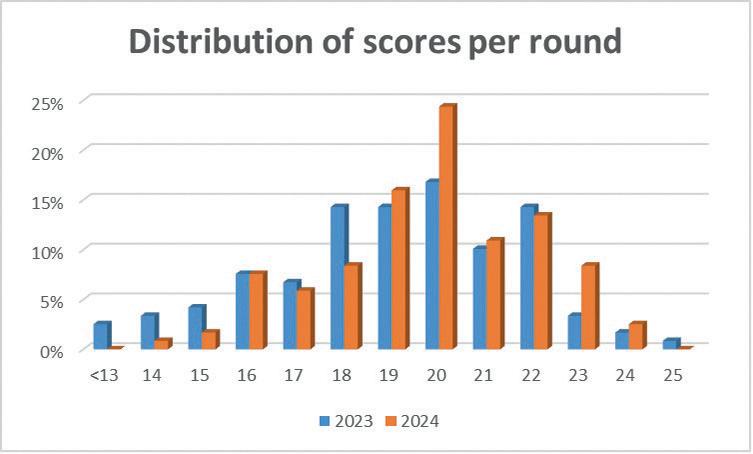
On the 8th of January 2025, Tess Toose sadly passed away after a short but fierce battle with cancer.
It’s hard to find the right words to describe Tess. She was larger than life with a heart of gold.
She had a gentleness that you so rarely find and saw the best in everything and everyone.
A more genuine and loving woman you would be hardpressed to find.
Tess had a way of touching the hearts and lives of everyone she met, including her husband, Phil.
Her laugh was infectious, and she made our lives richer just by being in it.
Tess was a treasured and respected member of not just the shooting community but particularly Clunes Field and Game. From watching her shoot her first clay target to becoming our branch treasurer in 2023, it didn’t take Tess long to leave her mark on our branch, bringing change and improvement where it was needed most.
Tess was loved in more ways than she will ever realise. She made such an impact on so many, in such a short time.
Not only was she a beloved family member and club member, but an adored friend to many. Her beautiful smile, bubbly personality and cheeky laugh will never be forgotten and will be greatly missed.
A beautiful lady and a character who wore her heart on her sleeve.
She loved her friends and family and we loved her.
Rest easy now, Tess.
– Clunes Field and Game.
“Tess, you were a breath of fresh air and someone I not only admired but valued in my life. You gave life and things within it a different perspective. It didn’t matter what time of the day or where it was, you were someone to turn to and would happily give me or others the shirt off your back without a second thought. We may not have always seen eye to eye, but you were always there to help me, especially at a time I needed it most.
We are all going to miss you, Tess.
You were strong, brave and someone who we can never replace and will never forget.”
– Michaela
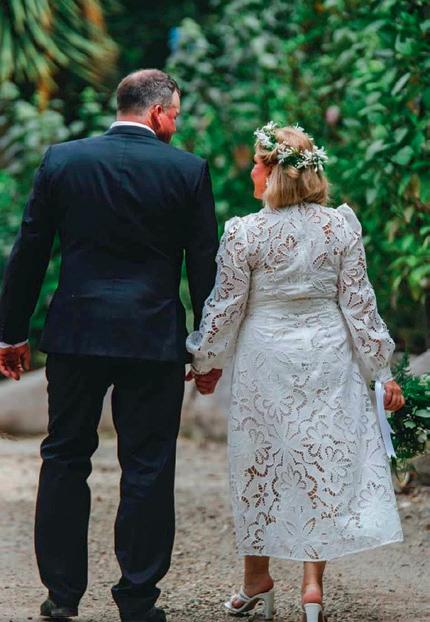





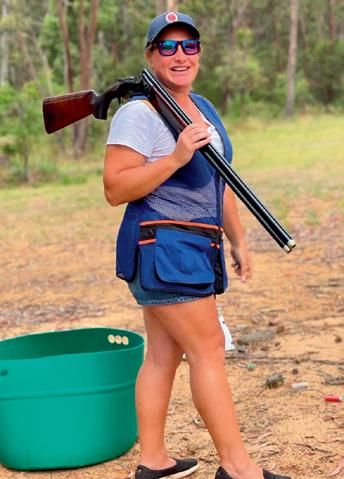

Metropolitan Field and Game, in collaboration with Beretta Australia, recently hosted an exclusive ‘Beretta Ladies Come and Try Day,’ offering a unique opportunity for women to experience the sport of clay target shooting. The event was designed to provide personalised, one-onone coaching from some of the sport’s top professionals, including Gemma McNabb from Beretta Australia, Australian Olympian and Commonwealth medalist, Latisha Scanlon, and Beretta ambassador, Sarah Fritsch.
Despite a forecast of heavy rain, the event saw an impressive turnout of 35 enthusiastic women. Participants ranged from complete novices—curious about the sport and firearms—to those holding firearms licences who were eager to refine their skills with expert coaching. Even those who had tried shooting before took advantage of the opportunity to learn from world-class instructors.
The event featured two sessions of 20 shooters each, ensuring an intimate, hands-on experience. To combat the rainy conditions, the Metropolitan Field and Game committee went above and beyond to create a comfortable environment, setting up undercover shooting areas that allowed participants to focus on the targets and not the weather.
Before stepping up to shoot, all participants were given a thorough introduction to firearm safety and handling. The one-on-






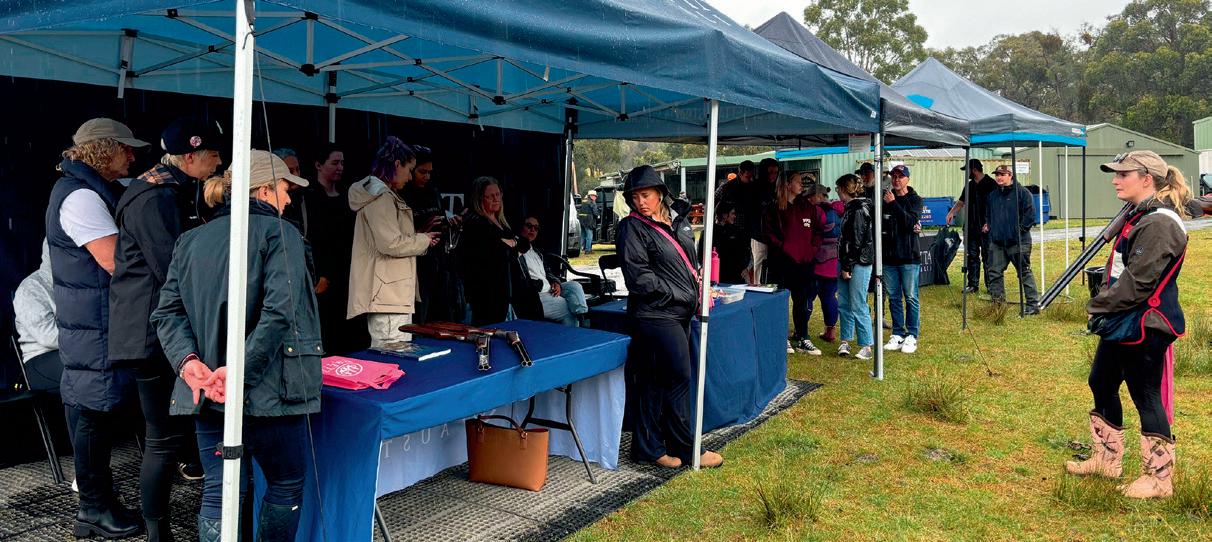
one coaching format allowed the ladies to practice shooting a variety of targets at their own pace. Starting with a gentle crow to get their eye in, the participants progressed to outgoers, crossers, and then moving onto pairs—all under the supportive guidance of their instructors.
The day wasn’t about hitting as many clays as possible but about providing a quality experience, allowing participants to feel comfortable and confident handling a shotgun.
The most rewarding part was watching the smiles on the shooters faces and the cheering from the crowd when they hit their targets. Each attendee left with a Beretta goodie bag, a Beretta cap, and Field and Game membership forms, in a hope to have more ladies signs up to Field and Game Australia.
The support from Beretta Australia was invaluable, with the team providing a selection of shotguns—including the Vittoria and the premium DT11 model— for participants to try, as well as Trust cartridges for the day. Their dedication to promoting the sport, alongside the passion of coaches like Gemma McNabb, Latisha Scanlon, and Sarah Fritsch, played a key role in the event's success.
Now in its second year, the Beretta Ladies Come and Try Day aims to introduce more women to clay target shooting, breaking down barriers and sparking interest in this exciting and rewarding sport. Whether wives, girlfriends, or family members of existing shooters, or women exploring the sport for the first time, this event provided a supportive space to try something new and exciting.
The day concluded with many participants expressing a keen interest in pursuing the sport further and wanting to obtain their firearms license.
Metropolitan Field and Game, with the support of Beretta Australia and Field and Game Australia, is already looking forward to next year’s event. This initiative not only showcases the fun and addictive nature of clay target shooting but also fosters a growing community of women passionate about the sport.
For those who attended, it was more than just a day of shooting—it was an experience of empowerment, achievement, and most importantly, fun. Here's to seeing even more smiles next year!

Nadia Angelakos
Metropolitan Field & Game
On December 15, 2024, Sale F&G hosted their highly anticipated annual Christmas shoot, and this year’s event proved to be bigger and better than ever. Shooters from all corners of the state gathered to participate in this exciting competition, which featured a total of 222 participants.
The event showcased an impressive layout of 50 targets spread over two grounds, ensuring a challenging and engaging experience for all competitors. Participants had the chance to win Nev’s Rosedale Butchers' famous smoked Christmas hams, awarded to the top five finishers in all nine divisions. Additionally, a 5-stand competition offered hams as prizes for first place across all grades and categories.
As always, the monster raffle drew a great deal of attention, offering a fantastic array of prizes that kept the excitement alive throughout the day.

The competition was fierce, with talented shooters vying for top honours across multiple divisions. Here are the results:
Division 1:
1st Keith Ferguson
2nd Adam Hirchfield
3rd Jason Corbett
4th Lee Marriott
5th Jim Wood
Division 2:
1st Brian Bhugwana
2nd Gary Jago
3rd Daniel Egan
4th Stan Wade
5th Andrew Jorgenson
Division 3:
1st Joanne Russell
2nd Paul Infantino
3rd Snake Whelan
4th Justin Van Putten
5th Ross Anderson
Division 4:
1st Dennis Whitehead
2nd Hayden Cook
3rd Luca Dicorleto
4th Rob Bassanese
5th Dale Robinson
Division 5:
1st Steve Dunn
2nd Darryl Beams
3rd Michael O'Dea
4th Greg Corbell
5th Brad Coleman
Division 6:
1st Malcolm Duncan
2nd Colin Ray
3rd Cameron Cleal
4th Jarrod Cumming
5th Peter Cartwright
Division 7:
1st Darcy Jones
2nd Mille-Gee Bryant
3rd Leigh Musgrove
4th Marcus Grubb
5th Charlie Ruthberg
Division 8:
1st Jorjeana Anderson
2nd Blake Hall
3rd Dean Ingram
4th Kade Dowie
5th Sonny Grant
Division 9:
1st James Clarke
2nd Jordan Aitken
3rd Tim Hall
4th Jasper Bentveltzen
5th Charlie Rankcom
AA Jason Corbett
A Ross Anderson
B Rob Del Busso
C James Clark
Vets Jo Attard
Ladies Katrina Hirchfield
Juniors Dylan Smith
Sub-Juniors Blake Hall
A special congratulations goes out to the following shooters who scored a perfect 25/25: Lee Marriott, Jason Corbett, Adam Hirchfield, Jim Wood, David Smith, Joanne Russell, and Paul Infantino.
Not to be outdone, Keith Ferguson delivered an extraordinary performance, achieving a flawless 50/50 score across the two grounds. Congratulations to all the participants and winners for making this
year’s Christmas shoot a memorable event!
With such success, the Sale F&G Christmas shoot continues to be a cherished tradition that brings together the shooting community for a day of competition, camaraderie, and festive cheer.
In addition to the thrilling competition, the event also featured a special moment of recognition. The Branch awarded Frank Grubb a well-deserved life membership, honouring his remarkable 67 years of service as a Field and Game member. As the club's longest-serving member, Frank has held various executive positions throughout his tenure, including Secretary in 1966, President in 1969, Treasurer in 1972 and 1973, Membership Officer in 2023 and 2024, and Publicity Officer in 2024. Congratulations, Frank, on this welldeserved award!
It’s worth mentioning that the generosity and sponsorship of local businesses, families and members are what make sporting clubs special places. These contributions elevate the experience for participants when sponsorship and prizes are generously donated, which was clearly the case at Sale’s Christmas shoot. The monster raffle showcased an incredible selection of prizes and takeaways for all attendees! A big shout-out and thank you goes out to Brown Wigg, H&S Firearms, Rosedale Butchers, Websters Furniture, Stephen Howard, Tequa Plumbing, Electronic Barn, Neil Collins, The Jeweller Co, Bricks to the world, Rob Del Busso, Stuart and Angela Jones and the Templeton Family who generously donated toward this successful event.
The Sale Branch and Field & Game Australia would like to thank all sponsors, businesses and families who continue to support their local branches, our association, projects and events!



Tom Challis, David Paynter and Neil Campbell had life membership bestowed on them at the Xmas shoot in December.
Benalla Branch was established in 1958 and has a proud tradition of having members that have served the club, whether it has been in conservation, hunting, vermin control or target shooting in an outstanding way.
Also, of note at the Xmas shoot, was the awarding of the club grade champions.
AA Brett Jory
A Neil Campbell
B Garth Lilley
C Sheryl Ferguson
After a very successful year the club would like to thank all our sponsors and those members that attended our shoots during the year. We look forward to seeing you all again in 2025.
Rod Berger
Membership secretary, Benalla FGA


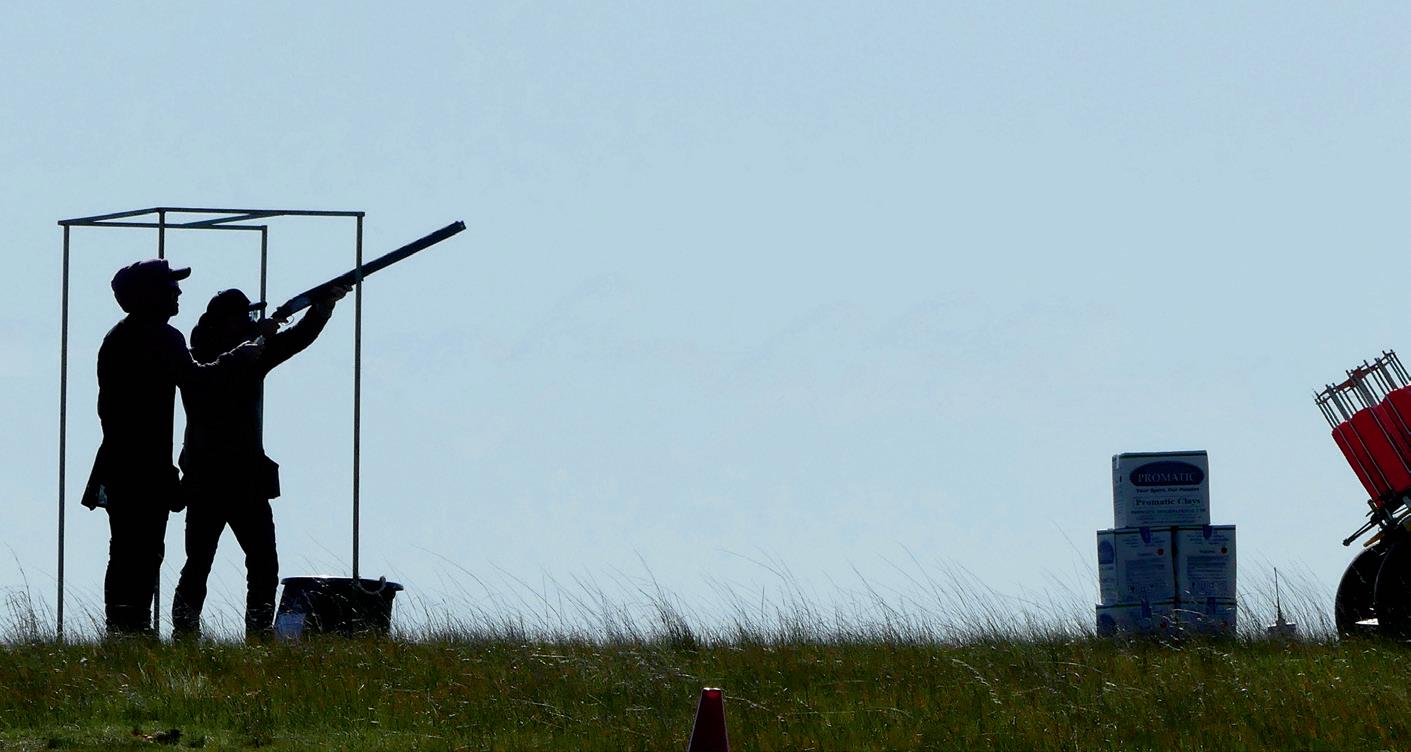
Field & Game Australia is an organisation built around conservation, sustainable hunting, and responsible shooting.
FGA’s members have carried and promoted these values for more than 60 years, and our branches are the backbone that supports our members in their activities.
We’re keen to share branch news with the wider Field & Game audience, and we invite you to get in touch.
Send your branch news (and any photos you’d like to share) to editor@fieldandgame.com.au and please include a contact phone number and ensure that any photos are at least 1Mb in size.
In January 2025, the Grampians (Gariwerd) National Park in Victoria faced devastating bushfires that posed significant challenges to both residents and wildlife. The fires, ignited by approximately 10,000 lightning strikes in late January, rapidly spread across the park, leading to evacuation warnings for communities including Wartook and Halls Gap.
By January 31, the fires had expanded the total burned area of the national park to 86,000 hectares, raising serious concerns for local wildlife and cultural heritage sites. Indigenous rock art sites within the park were under threat, highlighting the broader environmental and historical impact of the fires. In response to the escalating situation, firefighters from the Northern Territory were deployed to assist Victorian crews in combating the blazes. Smoke from the fires drifted as far as Adelaide, prompting health warnings for South Australian residents. The extreme heat and dry conditions made containment efforts challenging, with authorities continuing to monitor the situation and provide support to affected communities.
Ivan Howes, a tracker working for the native animal rescue hospital in the Grampians, was on the ground witnessing firsthand the devastation caused by the fires. As the flames moved towards his home, he described the intensity of the situation, with no visible support from other organizations on hand to assist wildlife and other than the Native Animal Rescue, no one available to euthanize severely injured animals. He noted the tragic loss of wildlife, with large numbers of kangaroos and wallabies found deceased at the base of the Grampians due to heat radiation. The heavy, thick smoke filled the sky, and the usual presence of birds, such as ducks and corellas in the creek trees, was eerily absent. Even domestic pets appeared unsettled, clinging to their owners amid the distressing conditions.
Facing 39-degree heat and 100km/h hot northerly winds, Ivan explained that one of the biggest challenges was estimating how far away the fire was as it advanced. With the fire appearing to approach his home, he spent the night sleeping on a stretcher in his backyard with only a mop and bucket as a precaution. His escape plan, if necessary, was to run to a rail crossing 300 meters up the road, where tunnels might offer temporary refuge.
Throughout the crisis, emergency messages were sent via social media urging residents not to leave their evacuation too late and to leave safely. Ivan's experience underscores the critical need for better wildlife response strategies during bushfires and highlights the harrowing decisions residents must make in the face of such natural disasters.





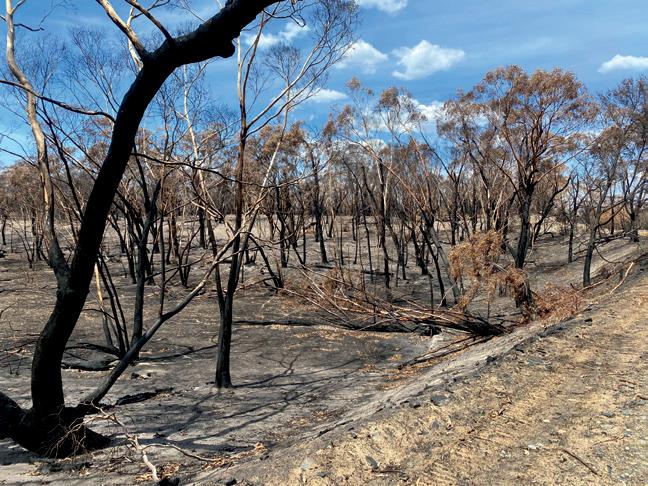

In the last issue of Field & Game magazine, we shared the news that Bug Blitz was winding up after 17 years of inspiring young Australians to connect with biodiversity and conservation. However, we are now delighted to announce that this vital environmental education program will continue, ensuring that future generations remain engaged with Australia’s unique ecosystems. Field & Game Australia (FGA) is proud to support the continuation of Bug Blitz and remains committed to fostering environmental stewardship.
Bug Blitz has been a cornerstone of hands-on environmental education, delivering over 500 field day events that have provided school children and communities with invaluable opportunities to explore and understand biodiversity in our wetlands, including the Connewarre Wetlands and Heart Morass.
We acknowledge the incredible contribution of Dr. John Caldow, whose passion and dedication have driven the program’s success. His collaboration with FGA and the Wetland Environmental Taskforce (WET Trust) has left a lasting legacy, inspiring thousands of young minds to appreciate and protect our natural world.
FGA CEO Lucas Cooke emphasized Bug Blitz’s significance within FGA’s broader conservation efforts.
“The dedication and passion of individuals like John Caldow are what truly drive Field & Game Australia and the Wetland Environmental Taskforce’s conservation mission,” Mr. Cooke said. “His commitment to engaging young minds and fostering an appreciation for biodiversity has left an enduring impact, one that will continue to inspire future generations.”
With Bug Blitz’s future now secure, we are focused on ensuring its sustainability through new funding avenues and leadership. The program has traditionally relied on government and philanthropic grants, and work is underway to strengthen its financial foundation for long-term success.
FGA has long championed the integration of scientific research with practical conservation efforts. Mr. Cooke reaffirmed our commitment to supporting initiatives like Bug Blitz that align with FGA’s mission.
“Our conservation efforts are backed by a community that values robust scientific evidence and sustainable practices. We
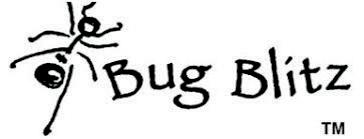
welcome all who are committed to preserving our wetlands and wildlife to join us in this important work,” he said.
‘’There is a real momentum building in environmental education, and it’s inspiring to see young people so engaged in conservation,” he said. “Bug Blitz has always been about hands-on learning, and I’m thrilled to see it continue.”
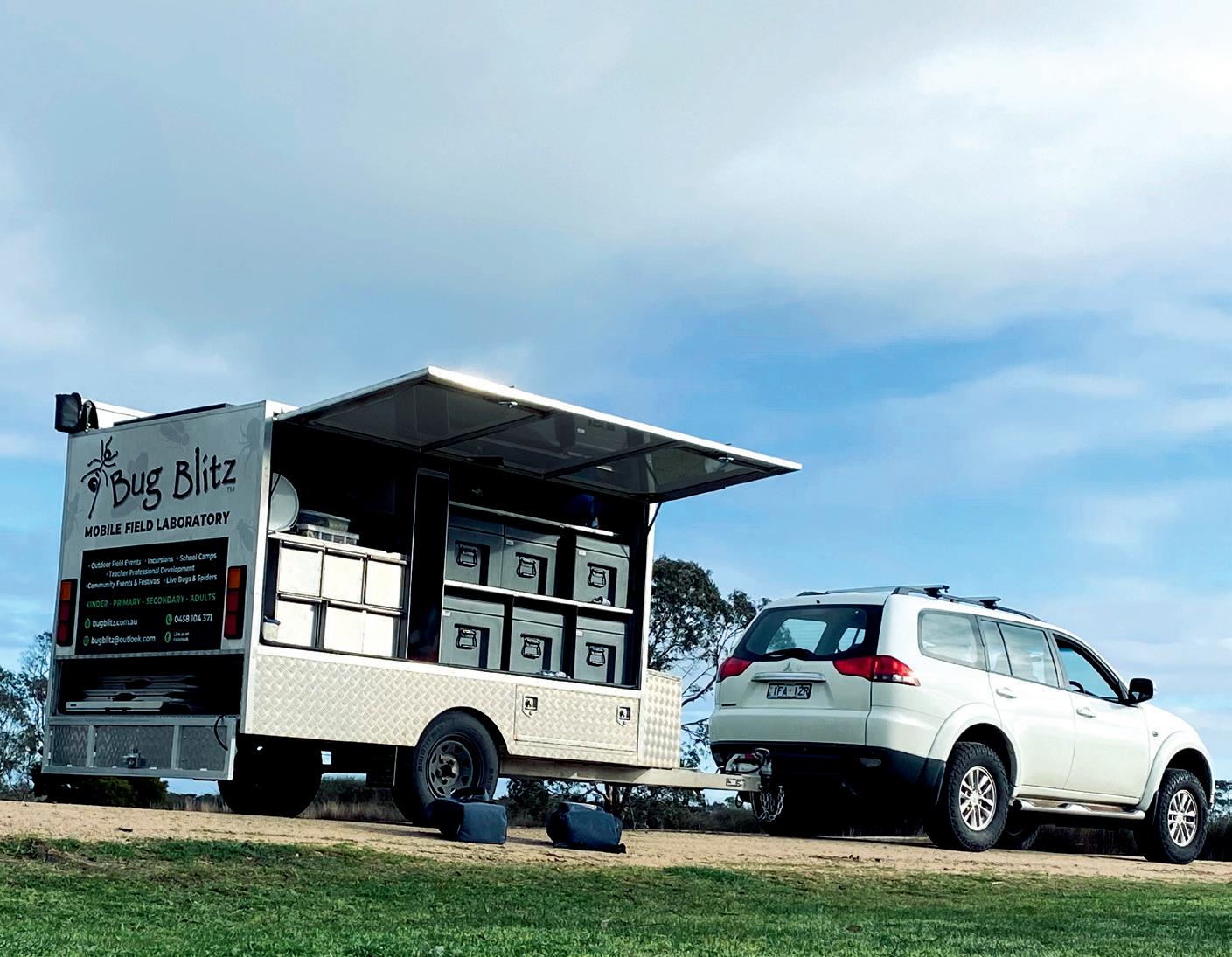
Bug Blitz is set to carry forward its mission of inspiring the next generation of conservationists. This exciting update ensures that children across Australia will continue to benefit from immersive environmental education experiences, deepening their understanding and appreciation of the natural world.
At FGA, supporting Bug Blitz is not just about education—it’s about fostering a lifelong connection to conservation and sustainable environmental management. We remain committed to ensuring that initiatives like Bug Blitz continue to shape the environmental leaders of tomorrow.

There’s a common thread that runs through hunters across the globe—a thread woven of respect for the land, deep connection to the cycle of life, and a willingness to take responsibility for what we consume. For many of us, hunting isn’t just something we do; it’s a part of who we are. And yet, despite the clarity we feel in this way of life, we’re often cast as villains by those who claim the moral high ground. Why?
Let me start by saying this: I don’t believe that everyone who opposes hunting is evil, ignorant, or malicious. Most people, when they oppose something, are coming from a place of values—however misplaced or misunderstood those values may be. But somewhere in the exchange between their moral radar and ours, something goes haywire. To them, our guns, our camo, and the act of taking a life become symbols of destruction, cruelty, and exploitation.
I’ve spent a lot of time trying to make sense of this disconnect. Maybe it’s because the modern world has become so distant from the natural one that they’ve forgotten what it means to eat meat honestly. Maybe it’s because hunting, with its blood and hard edges, stands in stark contrast to the sanitized, shrink-wrapped lives they’ve grown used to. Or maybe, just maybe, it’s because hunters force people to confront uncomfortable truths about their own lives and choices—truths that are easier to avoid if they can demonize us instead.
Consider this: Every carrot pulled from the ground, every steak sizzling on a barbecue, every fibre of cotton in their clothes comes at a cost to the natural world. Now think about the inner-city vegan, cruising around in their resource-guzzling electric car and
draped in “natural plant-based fibres.” That lifestyle has likely caused the demise of far more ducks than I will ever harvest with my shotgun. The lithium mines that fuel their batteries drain precious water from wetlands, leaving behind wastelands where life once thrived. The cotton and avocado farms they celebrate as “ethical” displace vast ecosystems, starving rivers and wetlands of the water they need to survive. Their lifestyle, dressed up as morally superior, hides the ugly truth: it leaves a trail of destruction far greater than the honest, direct act of taking a duck for the table—or even a day spent at the range, breaking clay targets under open skies, connecting with the community and sharpening the skills that tie us to a shared heritage. But it’s easier to point the finger at hunters than to confront the damage of their own choices.
I think it’s because hunting doesn’t let them pretend. When I shoot a duck, I can’t outsource the uncomfortable part. I can’t hire someone to kill it for me, hide the reality behind a curtain of convenience, and call myself clean. That duck is my responsibility. Its life, its death, and everything in between. And for some people, that kind of raw accountability is too much to bear.
But there’s more to it than discomfort. Ideologies like animal rights hinge on a belief that humans are apart from nature, not a part of it. They see us as intruders, as meddlers, as exploiters, rather than as stewards or participants. To them, killing an animal for food is the ultimate sin—an act of dominion, not coexistence.
What they fail to understand, and what hunters know in our bones, is that life and
death are inseparable. You can’t have one without the other. Every living thing is part of a cycle, and whether they like it or not, so are they. The difference is, we’ve chosen to embrace that cycle—to live honestly within it rather than pretending we’re above it.
So where does that leave us? Should we lash out at those who lash out at us? Should we retreat into silence and hope they’ll leave us alone? No. We need to tell our story—loudly, clearly, and unapologetically. We need to show them that hunters are conservationists, providers, and protectors. That we respect the animals we hunt and the ecosystems they inhabit. That we are not the problem, but part of the solution.
We may never change everyone’s mind, and that’s okay. Not everyone needs to agree with us, but they do need to understand us. Because when you strip away the ideologies, the labels, and the noise, what’s left is the truth: Hunters are people who care deeply. About the land. About wildlife. About our families and communities. And that’s a story worth telling.
In the end, maybe the best we can do is keep hunting—and keep talking about why we hunt. Not to defend ourselves, but to remind the world that what we do isn’t about hate, destruction, or selfishness. It’s about connection, responsibility, and love for the wild places and creatures that make this life worth living. And if they can’t see that, well, the ducks, the dogs, and the sunrise don’t care. And neither do I.
Until next time,
Lucas Cooke CEO, Field & Game Australia
Field & Game’s quarterly magazine is distributed to about 15,000 households in March, June, September and December each year. The magazine holds a wealth of information, articles and photos on all aspects of Field and Game Australia’s activities. No other publication can offer the same targeted, repeated exposure to our shooting members! Call us now to secure your spot. Phone 0427 431 663 or email am.blewett@fieldandgame.com.au





